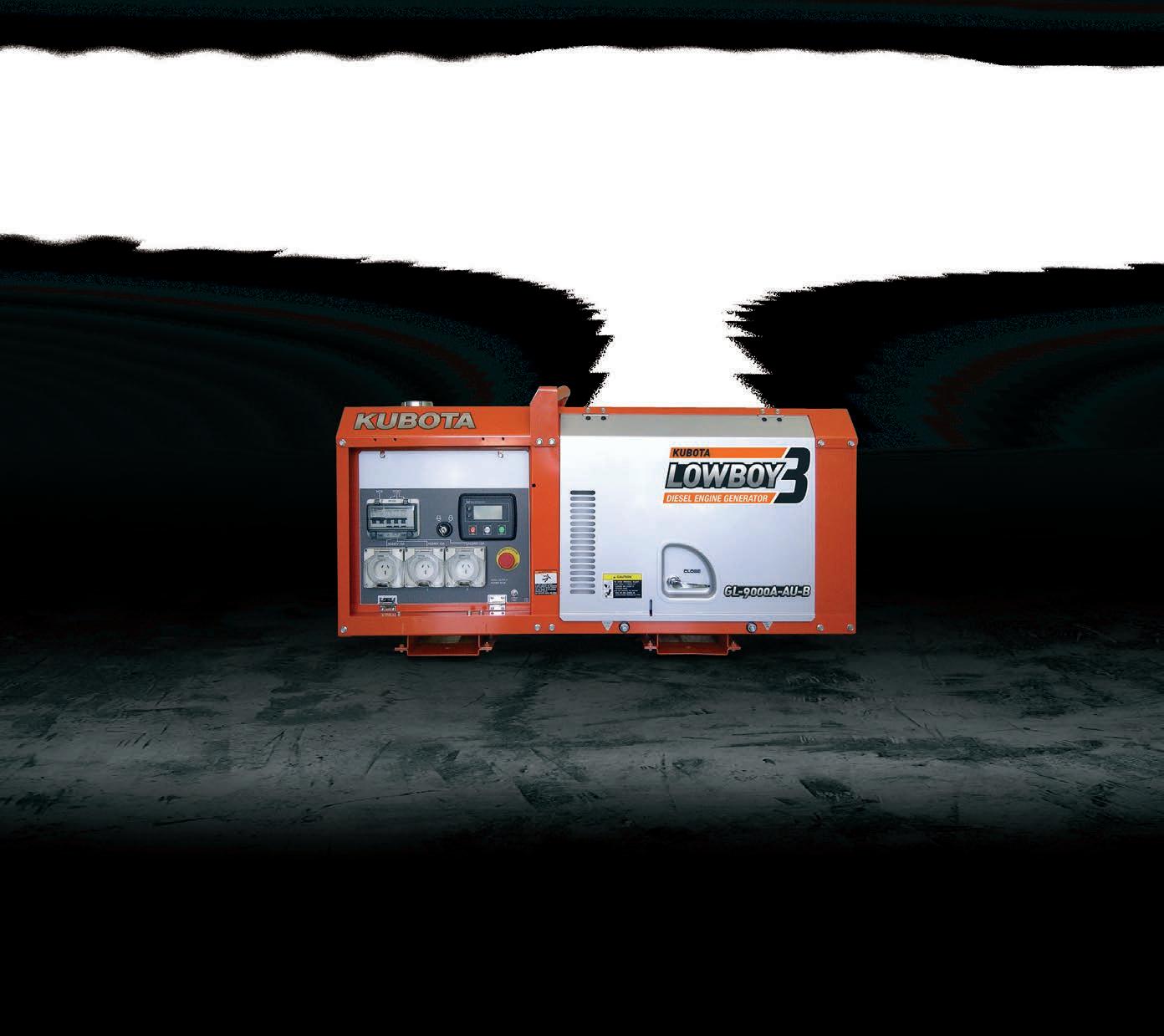Bourgault






Bourgault





WITH A FULL 8 YEAR WARRANTY AS STANDARD*
PLUS, THE MAXAM AGRIXTRA RANGE DELIVERS MINIMAL SOIL COMPACTION, A COMFORTABLE RIDE AND IMPROVED TRACTION WHICH SURPASSES ALL AGRICULTURAL TYRE EXPECTATIONS. WHEN PACKAGED WITH ONE OF THE BEST WARRANTIES IN THE INDUSTRY, THE AGRIXTRA DELIVERS THE PERFORMANCE YOUR FARM DESERVES!
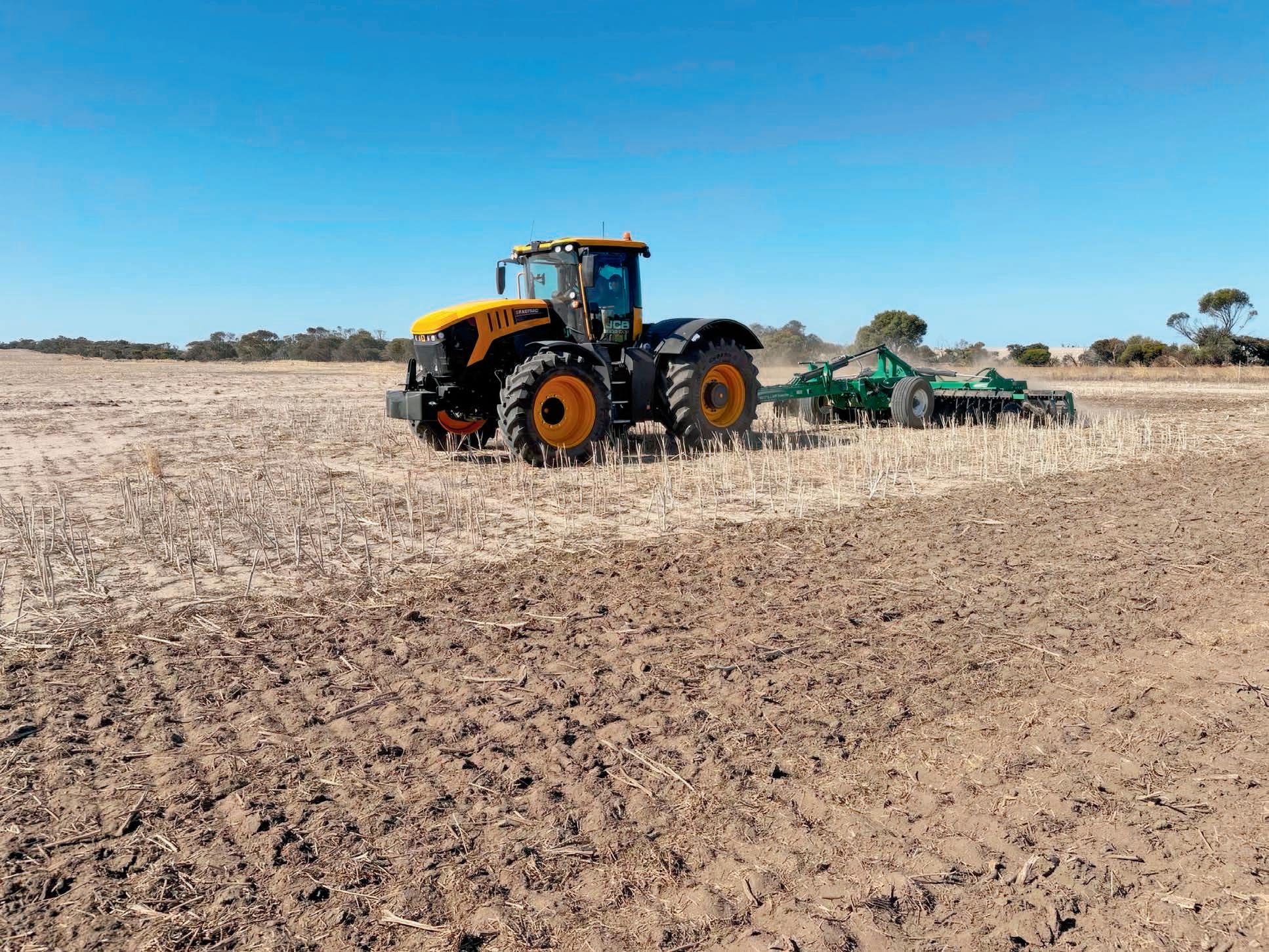

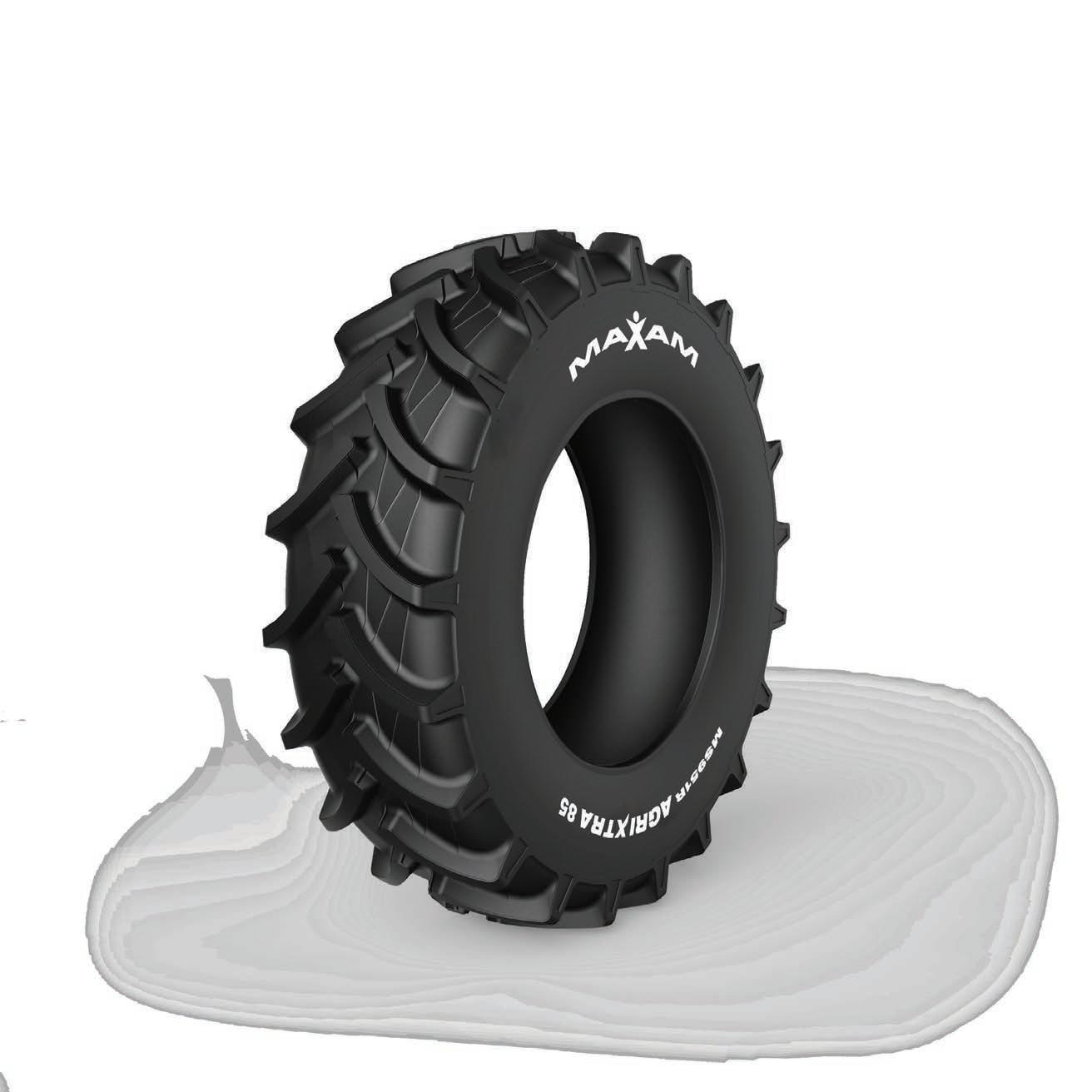

25
31

Image: CEA

52
35
47
55
28
38
42
44
58
51
Earlier this month, I had the pleasure of attending my first field day of 2024 at Wimmera.
After several years working in this industry, I have thoroughly enjoyed every opportunity to attend one of these events and set a goal for the new year of getting out to some field days which I had not previously visited.
Wimmera was one of these, although coverage of this event has of course featured in Farms & Farm Machinery before.
Plenty of excellent machinery was on display and there is an extensive wrap-up in this edition of the magazine.
What struck me most was that no matter where you go in Australia, there is always such a positive energy during the field days and this energy extends to the surrounding towns before and after each day.
Events season is starting to ramp up, and an upcoming highlight on the calendar is next month’s inaugural FutureAg Expo in Melbourne.
Powered by the organisers of major European event Agritechnica, this promises something different for the Australian agricultural community and we have previewed this event – along with a couple of the exhibitors.
Our cover story this month concentrates on Bourgault.
The Canadian manufacturer is celebrating 50 years in operation, and we delve into the importance of the Australian market to the company, highlighted by a new product designed for local farmers.
CJD Equipment is another company
which recently reached the half-century, with coverage of their milestone celebrations in Perth.
We also profile several companies and the products they offer – specifically Sawquip, Jetland Loading Ramps and Muck Runner – to help introduce readers to what is available across the scope of agricultural products.
Plenty of new products have been released from the likes of TYM and Strautmann (both of which are distributed locally by Inlon), Brisbane Mini Excavator Sales and Case IH.
This edition also highlights Dieci’s Cotton Pro telehandler, Antonio Carraro’s SRX tractor range and plenty of industry news.
There is also a deep dive into how a farming group upgraded to a whole fleet of JCB Fastrac based on operator demand, plus how a Victorian government grant is helping a farm invest in electric machinery.
Agriculture is a diverse industry and this edition shows the full scope of what is
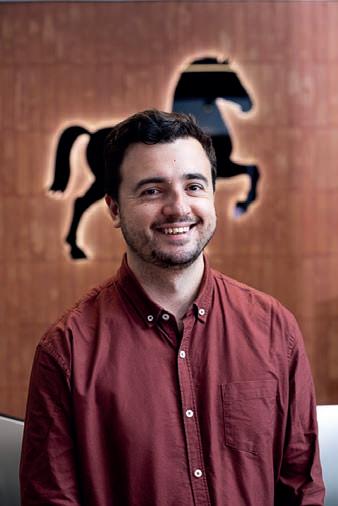

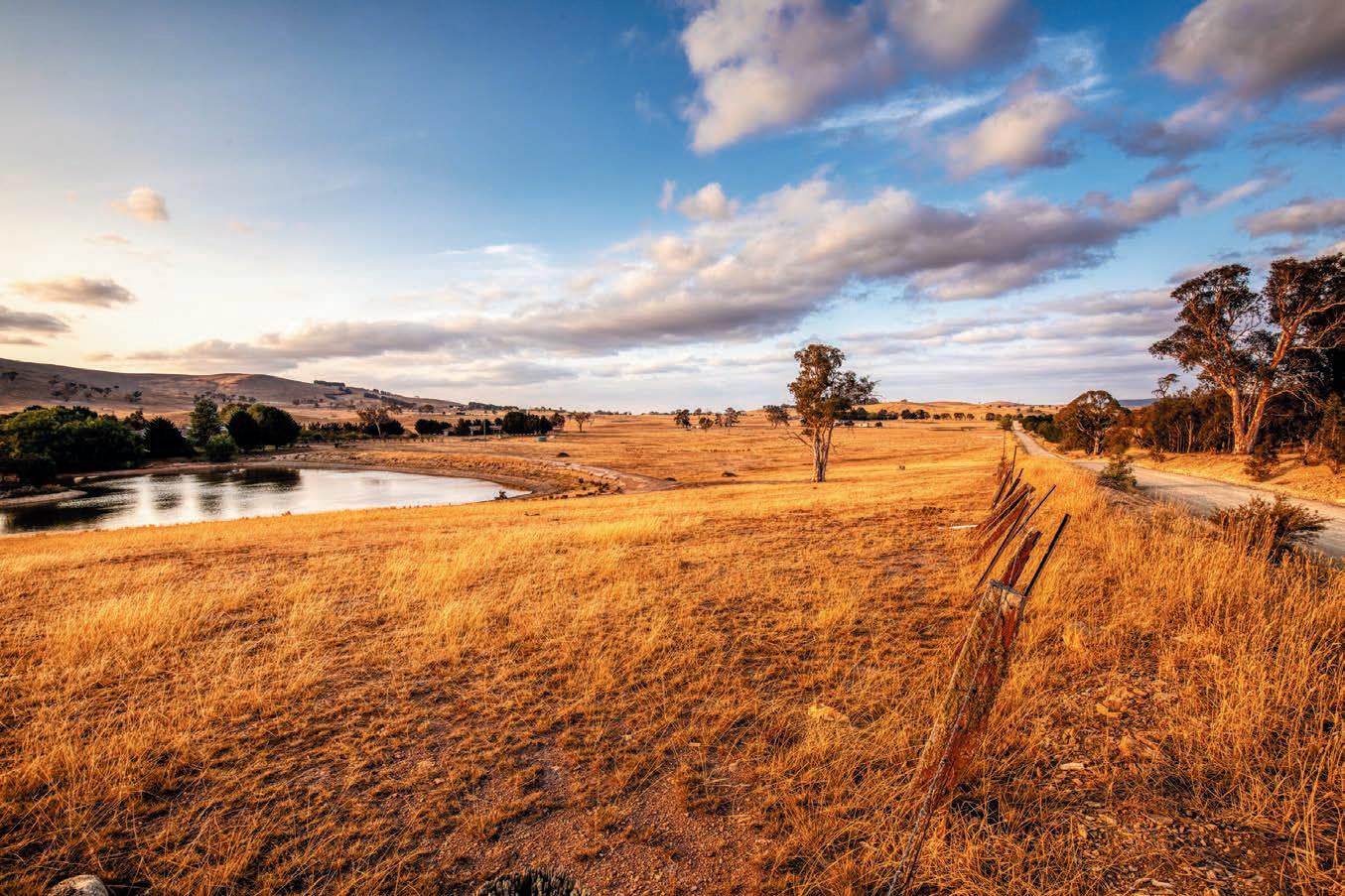


Sturt
investing more than $50 million into agricultural research projects and facilities – focusing on sustainable energy, animal health, agricultural technology and soil health
Building on the university’s existing investments in agricultural research, more than $50 million has been put into projects which the university says could revolutionise the industry.
The investments will be facilitated through Charles Sturt University’s Agrisciences Research and Business Park (AgriPark) and key industry partners.
“These investments mark a significant step towards realising the vision of a more sustainable, innovative and resilient Australian agriculture sector,” Charles Sturt University vice-chancellor Renée Leon says.
One of the most invasive Australian weeds is being touted as a potential economic crop, with benefits for agriculture and other industries
“By collaborating with sector-leading partners like Telstra, NAB, Food Agility CRC and others, Charles Sturt is able to better leverage our researchers’ cutting-edge innovations to serve the needs of primary producers and the industry as a whole.”
Of the new investments, the money will be split into four key areas.
Firstly, $22 million will be invested over three years for projects at the Global Digital Farm, which is an integrated digital learning and research environment. It works within a full scale, commercial, mixed farm operation.
Another $20 million will also be invested
The prickly paddy melon weed costs the agricultural industry approximately $100 million a year in cattle deaths, lost grain yields and control measures – but now it could be turned into an economic crop, according to the University of South Australia (UniSA).

University researchers have found that this weed has the potential to be a source of urease enzymes, used to create bio cement and prevent soil erosion.
50 native plants and weeds were screened in a study which looked at finding a cheaper and more environmentally friendly source for bulk production of urease enzymes to strengthen soil.
UniSA says of the weeds tested, paddy melon ticked all the boxes and was almost as effective as soybean enzymes, which are more expensive and used primarily for food.
After crushing the seeds and extracting enzymes in a liquid form, they were freeze-dried to create a powdered high-concentration cementation agent, UniSA says.
“Using this technique, we cut down the cementation time from one week to six hours,” UniSA geotechnical engineer Mizanur Rahman says.
Individual plants can yield 50 or more paddy melons, each containing up to 200 viable seeds.
over three years for various projects in the university’s Renewables in Agriculture program, including bringing the first hydrogen tractor to Australia.
There will be $10 million invested across various projects in the Cool Soils Initiative, which supports farmers in exploring their practices to improve the health of their soil, increase their yield, and reduce on-farm greenhouse gas emissions.
This program will also be expanded into Western Australia for the first time.
Rounding out the investments, $8 million will go towards a circularity Centre of Excellence being developed in Wagga Wagga.
“We know that climate change is impacting the profitability and productivity of farms around the country,” Federal agriculture, fisheries and forestry minister Murray Watt says.
“It’s fantastic to see more serious investment to help advance the development of technology to help farmers reduce their emissions.”
Taking into consideration the time taken to harvest, extract the seeds and turn them into a powder, the UniSA researchers estimate a 75 per cent saving compared to lab-grade enzyme production costs.
According to UniSA, plant-based urease enzymes are becoming a popular alternative to cement, lime or artificial soil binders because they are natural and not damaging to the environment.
“Compared to the production of commercial enzymes, paddy melon enzymes are cheaper, more sustainable, and more efficient than other enzymes used to cement and stabilise soils,” Rahman says.
“Not only have we found a natural alternative to other commercial enzymes, but we could solve a very expensive problem for the agricultural industry by harvesting these weeds, reducing the availability of seeds for spreading, preserving biodiversity and growing paddy melon as a commercial crop.”
UniSA says these findings could also benefit the construction, forestry and mining industries.
“I believe we have found a win-win solution that helps not only farmers, but also offers a natural cementation option for several industries,” Rahman says.
































































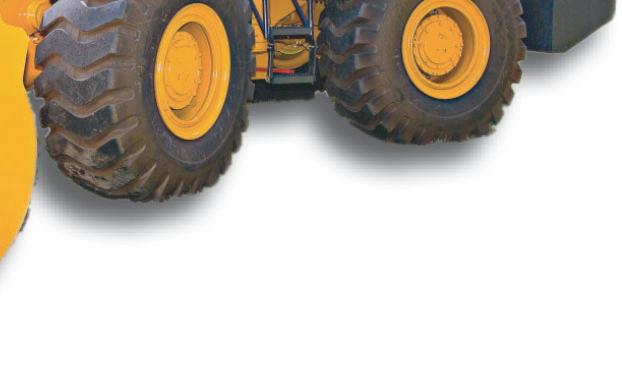
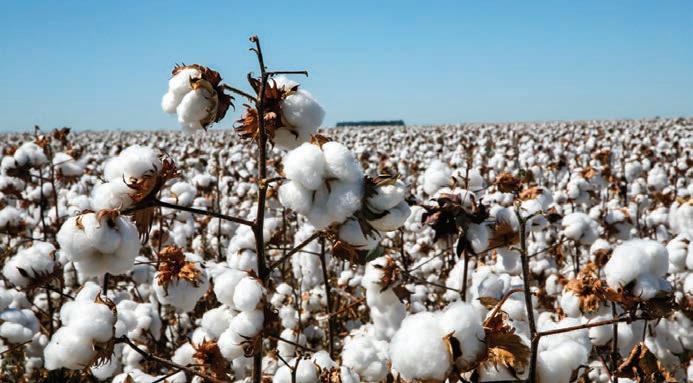
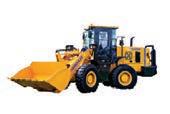

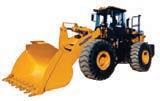

Scientists have achieved a breakthrough in molecular plant pathology, allowing for new genetic strategies to protect crops from disease
Australia’s national science agency, the Commonwealth Scientific and Industrial Research Organisation (CSIRO), has developed a rapid-gene screening platform.
This can identify avirulence (Avr) effector genes in organisms which cause plant diseases, known as plant pathogens.
According to CSIRO, rust pathogens reduce agricultural productivity and are a
Australia’s dairy trade has slowly changed in recent years, as export volumes have fallen while imports have spiked, Rabobank says in a new report
threat to global food security, leading to annual crop losses of US$1 billion worldwide.
“Our advanced screening technology represents a technological leap forward in our ability to study the processes that give plants enduring resistance to disease, enabling new genetic strategies to safeguard crop production and disease management in Australia and abroad,” project co-lead Peter Dodds says.
The trade profile for Australian dairy is in a transitional period driven by a range of factors, Rabobank says in its ‘Australian Dairy Sector Outlook: Slowing trading places’ report.
Dairy imports are expected to increase in Australia’s domestic supply chain into the future to accommodate the local milk production decline, the agribank says.
“Since the most recent production high in 2020-21, more than 700 million litres of milk have been lost from the supply chain,” report author and RaboResearch senior data analyst Michael Harvey says.
Tomasz/stock.adobe.com
“This method enables high-throughput screening of complex genetic libraries in a plant’s cellular environment at an unprecedented speed. This enhances the ability to select more disease-resistant crops and aids efforts in pathogen surveillance.
“We have been able to identify several new fungal Avr effector genes in the wheat stem rust pathogen, reducing the time from years or even decades to mere months.”
Effector genes in plant pathogens, like rust fungus, encode proteins that suppress plant immune responses, CSIRO says, If the plant recognises these pathogen proteins, they can activate plant defence mechanisms and stop widespread infection.
Thomas Vanhercke, who also co-led the project, says that while this study examined Avr genes in a rust fungus which affects wheat, the same technique can be applied to other crops and pathogens.
Imports are expected grow further in the near future due to the country’s reduced milk production and the lower costs of overseas products, the bank says.
Australia has had a long history of being a dairy exporter but has seen a slow decline in recent years, the bank says.


The report states 8.129 billion litres of milk were produced in 2022-23, marking the third consecutive year of decline in milk production. Harvey says 2022-23 also saw the nation’s milk supply available for manufacturing fall to its lowest level since the 1990s.
Over the last decade Australia has seen its dairy imports spike, with the annual dairy import volume in liquid milk equivalent doubling, Rabobank says.
“In 2023, Australia imported more than 1.4 billion litres of dairy product in liquid milk equivalents, excluding caseins,” Harvey says.
“A large proportion of the import mix is bulk and ingredients – particularly butter and skim milk powder – as domestic manufacturing of these products has declined. But more imported dairy products are also appearing on retail market shelves.”
“For the calendar year 2023, dairy export volumes were down with double digits across most products, with the largest declines in liquid milk (down 41 per cent year on year) and butter (down 52 per cent),” Harvey says.
Despite the reduction in milk production and export volumes, Australia still ranks as the fifth largest dairy exporter in the world – with four per cent of global trade, the report says.
Australia has a secure availability of local-origin dairy product, Harvey says.
“With ongoing support from retailers to source locally where possible, Australian-origin dairy products will remain readily available to consumers,” he says.
“At times the pricing point for local product may trigger ‘sticker shock’ for consumers.”
Expanding milk solid imports may help Australian consumers, as more cost-effective imported ingredients reduce raw material costs for food manufacturers – keeping consumer prices more affordable for packaged foods with dairy ingredients, Harvey says.





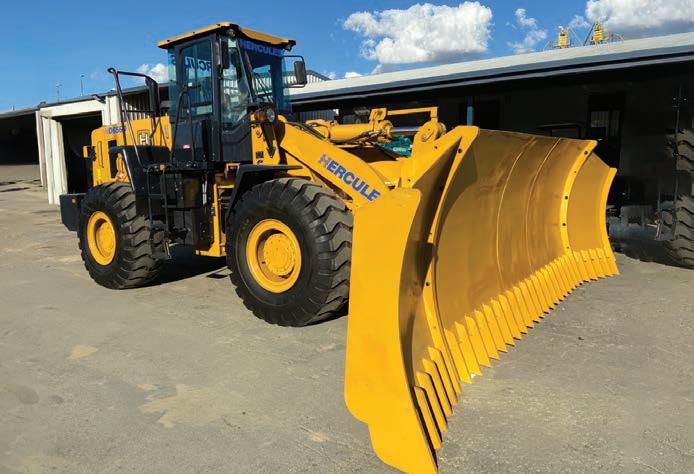














Sundew Professional Solutions has developed an insecticide spray to help tackle Australia’s fire ant problem – damaging crops and livestock

The next steps in Australia’s response to varroa mite have been agreed, following last year’s decision that eradication was not possible
ANTagonistPRO polymer insecticide spray will be able to help farmers, horticulturalists and landholders fearing damage to crops and livestock caused by red fire ants.
Fire ants have the capability to cost the Australian economy billions of dollars per year if left unchecked here, according to the National Fire Ant Eradication Program.
Australia’s Invasive Species Council says that if left unchecked, the pest could form colonies in 95 per cent of mainland Australia and most of Tasmania.
Sundew’s insecticide spray can also be used where fire ants are already present.
“Prevention and treatment are especially important at this time of the year, as autumn approaches, when the highly invasive and mobile ants become more active while the soil is warm and the days are milder,” Sundew CEO David Priddy says.
“These aggressive ants are the ultimate hitchhiker – they will move around on vehicles and even floodwaters.”
Sundew says ANTagonistPRO is Australia’s only approved spray treatment that can be applied rapidly over large surface areas by tractors, utes, quad bikes, and other farm vehicles equipped with boom sprays.
Using spray applications will target large
The varroa mite National Management Group (NMG) has agreed on a new plan to deal with the ongoing threat.
Varroa mite – also known as Varroa Destructor – has been described as the most serious threat to honey bees globally and was first detected in Australia in 2022.
Initially detected in New South Wales, it was successfully removed from that state before later returning, leading authorities to accept that full eradication was no longer possible.
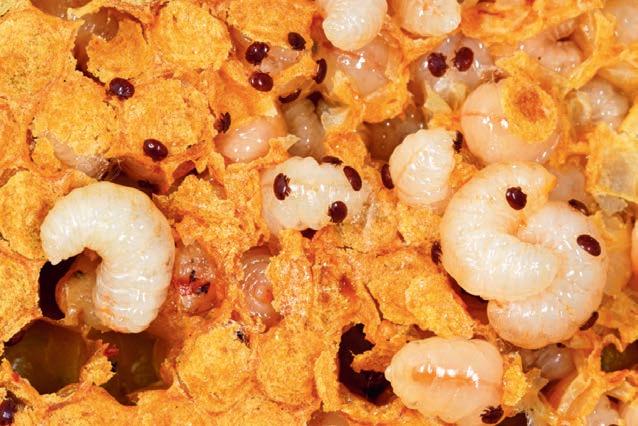
The NMG met last month and endorsed a National Response V4, which incorporated a transition to management.
Activities in the management plan are to:
- ensure an orderly stand-down of emergency response operational activities in NSW and Victoria; - slow the spread of Varroa Destructor; - bu ild industry resilience to the pest; - provide management options including Integrated Pest Management recommendations and chemical control options; and
- support pollination security.
The Australian Honey Bee Industry Council (AHBIC) successfully advocated for exceptional circumstances to be applied in the plan, which allowed for the timeframe to be doubled from the usual 12 months to 24 months.
areas quicker, at cheaper cost and be more effective than other methods, Priddy says.
ANTagonistPRO is complemented by Sundew’s SAS PRO rapid response direct nest treatment to kill individual nests.
Sundew says its new spray is also weatherproof, doesn’t need to be reapplied once dry and will last up to six months on treated surfaces.
Sundew says its spray is the only red imported fire ant (RIFA)-approved concentrate product for applying to vehicles, earthmoving equipment, recreational vehicles, shipping containers, contractor and transport vehicles, as well as agricultural equipment – reducing the risk that RIFA can be moved from property to property.
“This treatment can be applied to large areas to massively reduce time, costs, and physical effort required compared with the slower baiting and spearing methods originally approved by the Queensland Department of Agriculture and Fisheries..
“We believe this method is a big step forward in countering what may well become a national issue if left unchecked. We have already got the runs on the board from working with professional pest controllers. We believe the message needs to be heard more widely and sooner rather than later.”
AHBIC describes this as a “big win” for the industry.
“This extension will allow critical activities like extension across all jurisdictions to continue over a longer period,” AHBIC says.
“This will ensure all beekeepers have the opportunity access the resources as needed.”
The management group also lowered the agreed upper cost of the response to a maximum of $100 million, of which a significant amount of will be spent on education.
“The development of national education materials and rollout of non-accredited workshop training will commence for a period of 12 months,” AHBIC says .
“This will include face to face training events across all jurisdictions for all beekeepers, online learning, webinars, factsheets and video resources.”
Mandatory hive monitoring and reporting every 16 weeks remains in place for beekeepers across New South Wales.
There remain two Varroa mite control zones in New South Wales – the suppression and management zones
Beekeepers must notify the NSW Department of Primary Industries if they wish to move bees from the management to suppression zone.
Australian farmers are making strategic decisions to better position their business, in the face of climate change uncertainty
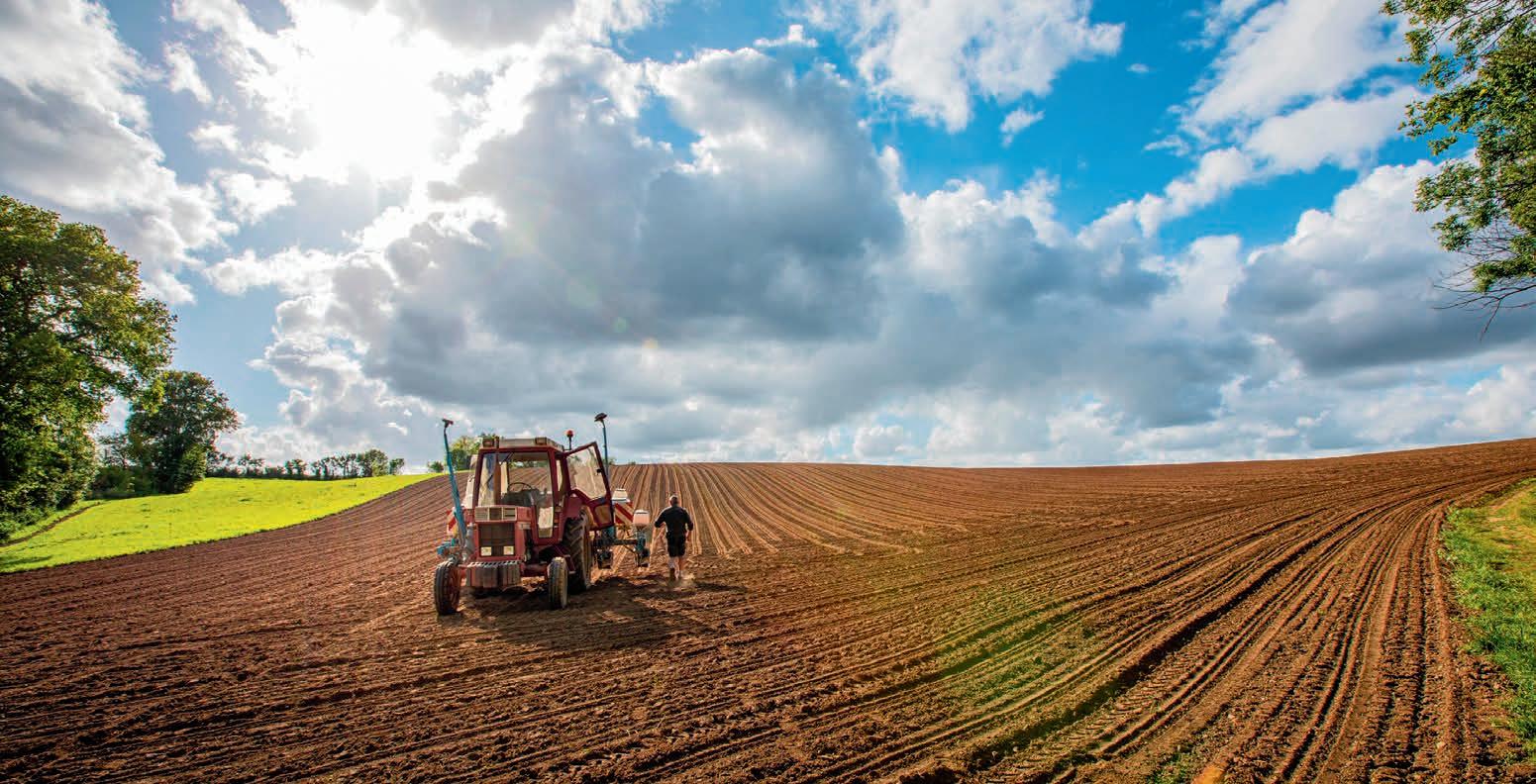
Recent research undertaken by a Charles Darwin University (CDU) PhD student has found farmers are coming up with new strategies to tackle climate change – such as planting crops at different times.
The university says impacts of extreme climate events including heat waves, drought, flooding and rainfall are causing disruptions to global systems of farming and food production.
“The uncertainty of climate change is a significant challenge which is prompting Australian famers to think differently to ensure business success, particularly in extreme environments,” PhD student David McKenzie says.
As part of his research, McKenzie spoke
have responded to the impacts of climate change on their farming business.
“Farmers saw massive rainfalls that would last for one month, then they wouldn’t see rain for four to five months at a time, so they needed to change the way they grazed in order to harvest the rainfall,” he says.
“The farmers adapted their processes to better accommodate growing crops in the non-growing season rainfall episodes and intense hot dry season rainfall events outside the usual growing period.”
To counteract the increasing regularity of fires, heatwaves and flooding, McKenzie says farmers altered the scale of their farm, were flexible with crop and animal
against changing climate was also important to farmers, the PhD student says.
“The farmers I interviewed had a range of different strategies and forms of financial reserves to support them during the times when the climate is challenging,” McKenzie says
“For example, one farmer sells stock to provide equity, another has money invested with a financial advisor in a farm management deposit, while others reinvest profits back into the farm.
“Overall, what is clear from this research is that farm businesses need to be innovative, strategically positioned and managed to keep in step with the adaptive demands of evolving climate change.”




Bourgault knows about the word big.
Anyone who has ever used the Canadian manufacturer’s machinery knows it is designed to handle the biggest jobs, its 9000 I Air Carts with 45,000L-plus capacities being one prominent example of this.
Its latest addition to the Australian market – the 4420 DKD deep knife drill – is further evidence of this fact, being capable of comfortably working at depths of around six inches (15cm).
Combine all of this with the fact Bourgault is celebrating its 50th anniversary in 2024 and it becomes clear that not only are the manufacturer’s machines big, but this year is too.
Founded in the Canadian province of Saskatchewan in 1974, the company’s growth journey features Australia at the forefront – making the celebration one
Bourgault Australia is preparing for its new deep knife drill to reach full production, but it is far from the only big thing on the company’s radar
which Bourgault believes local customers should feel part of.
Australia was the first overseas market to which Bourgault expanded in the late 1990s and these shores remain crucial to the manufacturer’s success, being a frequent testing ground during the research and development processes of new products.
This has led to instances of products being developed for the unique demands and harsh environments of the Australian market, of which the 4420 DKD is a recent example.
Announced by Bourgault late last year, and first shown to the public at field days during the spring of 2023, the 4420 DKD is about to step up to full production in the coming months.
One of the biggest changes of the 4420 DKD compared to previous drills produced
by Bourgault lies in the name – deep knife drill – with the latest unit having a new generation frame with an all new opener with independent fertiliser knife and seed closer.
The front fertiliser knife works to a considerable depth, being optimised for depths of 12cm to 16.5cm below the surface according to Bourgault, and is followed by a seed placing closer that is parallel with a packing wheel.
Bourgault’s Western Australian operations manager Ben Bulley says customers who have already used the 4420 DKD have relayed positive feedback in several areas.
“The main positive feedback relates to seed placement and good germination of the planted crop, and we believe that comes from some of the design features of the deep knife opener,” he says.
“It holds well in the ground, so it has a good shattering effect of the subsoil. This helps to bring moisture up that may be down in the subsoil and it also helps the roots to establish and find any moisture that is collected there from any rainfall.
“Our packer wheel has quite a good high packing ability and is adjustable so you can tailor it to suit the conditions.
“What that does is firm the seed bed and just pushes a little bit of soil closely in around the seed, squeezing some of that air out of the soil – so you get good seed-soil contact.
“Once you get that, the seed will germinate well and resist disease, helps resist drought, and you get an early strike, quick germination, and you can see the crop coming up out of the ground quite rapidly.”
The 4420 DKD also has a heavy duty

forward shank with on-the-go adjustable hydraulic breakout between 68kg and 450kg, plus a 16mm wide knife point.
A heavy-duty rear frame and robust frame construction can accommodate drill-mounted liquid tanks.
Ben says the ability to carry up to 5,000L of liquid on board is important, particularly in markets such as Western Australia where he is noticing increased uptake of liquid fertilisers.
The 4420 DKD also has a ground-following 1:1 contour ratio, easy packing pressure adjustment with a cordless impact driver and easy depth adjustment with a simple handle and pin.
Large tyres, a steerable front axle and floating hitch ensure optimal depth control and superior tracking.
Another significant benefit is the ability
for both sizes – which have 12m and 18m working widths – to fold up to just 5.5m for transport.
It is a product specifically designed for Australian farmers which has undergone plenty of testing to ensure it will be the ideal fit.
“We completed the field trials and prototyping last seeding season, and since then we’ve imported and received the first limited production run of factory production machines,” Ben says.
“We’re in the process of building those now to ship out to some customers that have purchased and Bourgault will also be running some of these machines as demonstrators through this season.
“It’s still early days and the quantities

are quite limited. There are several reasons for that, but it’s mainly to do with production.
“Once it goes from prototyping to a production machine, you only want to produce around a dozen or so machines in that first run, just to make sure everything fits together properly the way it should.
“Everything is positive though and we’re looking forward to getting these machines
back into the field and operating again.
“The next production run is in June this year and that’s when the company will be ramping up the machine to go into full production.
“There are two production runs slated for 2024, and we’ll have shipments coming in through the year, ready for customers for 2025.”
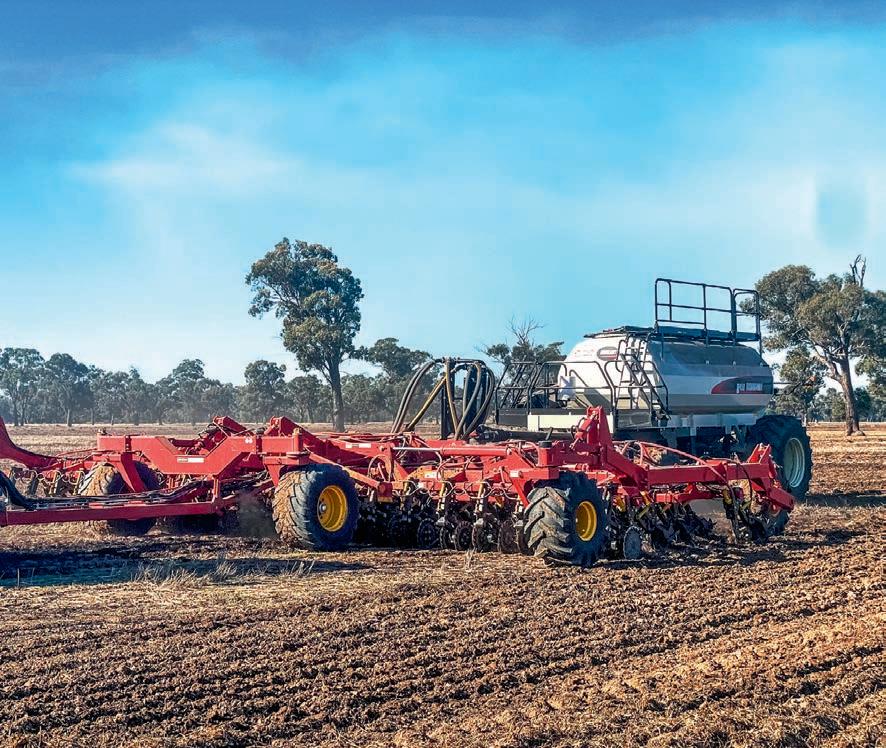
Bourgault’s 4420 DKD is a step up – or down, to be geometrically accurate – from previous drills, and is in keeping with the company’s broader philosophy of producing big machines.
This is particularly true when considering the 9000 I Series of Air Carts, which Bourgault says are the largest in the world.
The manufacturer’s biggest model in this range – the 91300 – offers a capacity of 45,810L split across four tanks, allowing broadacre farmers to seed for longer without needing to refill.
The next two models down, the 9950 and 9650 – which still have impressive capacities of 33,470L and 22,900L respectively – are both available as leading or trailing air carts.
This feature means the L9950 is the largest leading air cart on the market, Bourgault says.
Individual weigh scales across the 9000 I Series models allow users to ensure a precise amount of seed is being released, while also highlighting the fact these carts are packed with technology to ensure easy and efficient usage.
Numerous tyre options are available across the range to minimise ground compaction – an important issue with heavy machinery – and help ensure a consistent germination.
All of this is occurring at a milestone time for Bourgault, which celebrates a halfcentury in business in 2024.
As part of this, all machines being delivered throughout the year will have a 50th anniversary decal on them.
“The company is very proud of its history and it has a lot of long term employees,” Ben says.
“A lot of employees have been with the company for 20 or 30 years and you get a lot of loyalty and consistency through that.”
Bourgault Australia was founded in 1997 and Ben believes this long history Down Under, plus Australia’s importance to Bour gault globally, are reasons to celebrate the company’s milestone.
“Australia is the first overseas market that Bourgault ventured into and it’s still a very key and important market,” he says.
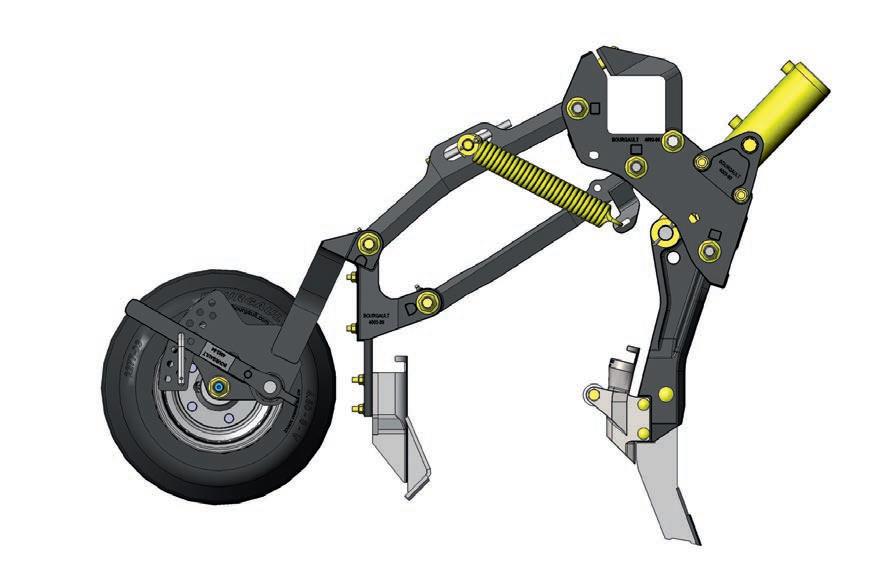
“This is also part of the reason why they’ve been willing to develop the 4420 Drill for us. That was developed for Australia and they did it because this market is important.”
Bourgault Australia has full distribution centres on both sides of the country – locat ed in Perth and Albury – with company staff and a full stock of spare parts for its products at each.
Bourgault’s full Australian product range and dealer network can be viewed at www.bourgault.com/en-au
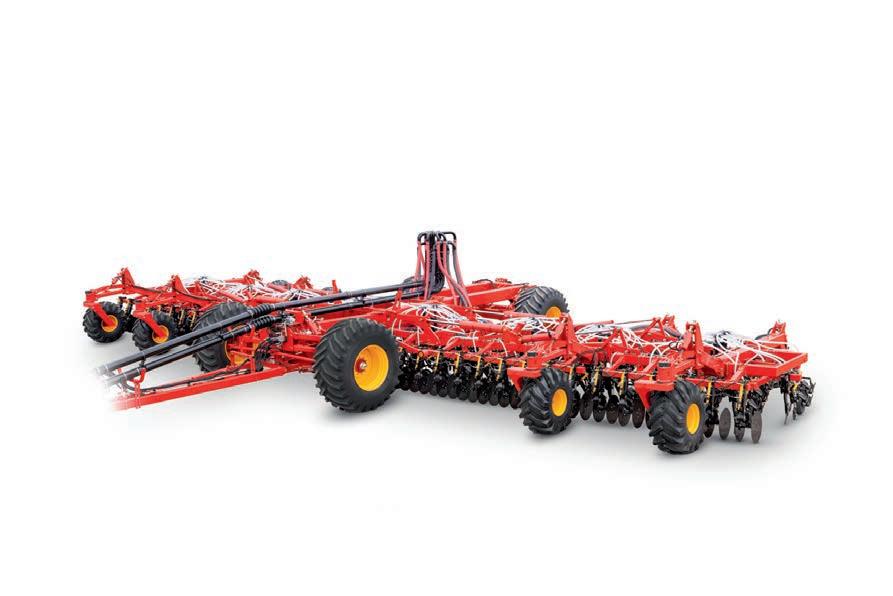




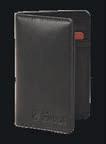

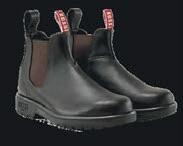
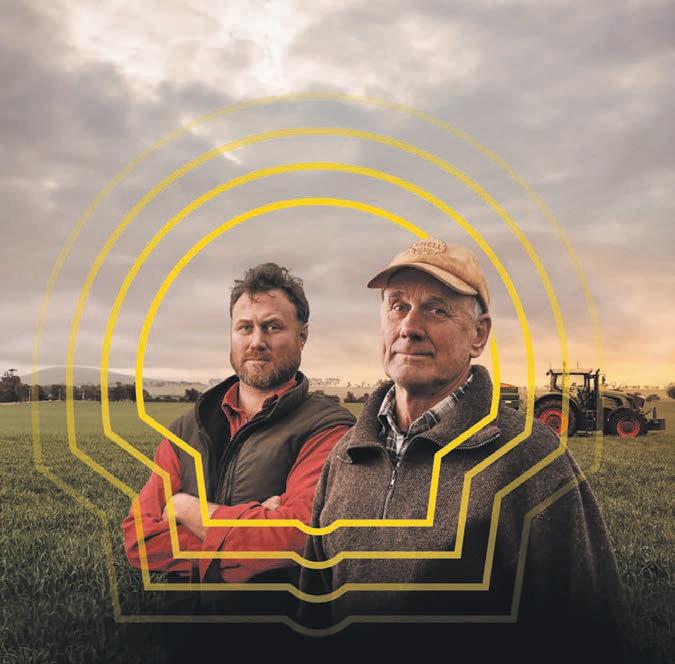

A Fremantle business is positioning to be the world’s largest grower of Asparagopsis, seeking investment as it finalises talks with Indonesian growers
Asparagopsis, a seaweed which can help reduce methane emissions from cows when turned into a feed supplement, is attracting interest and investment worldwide.
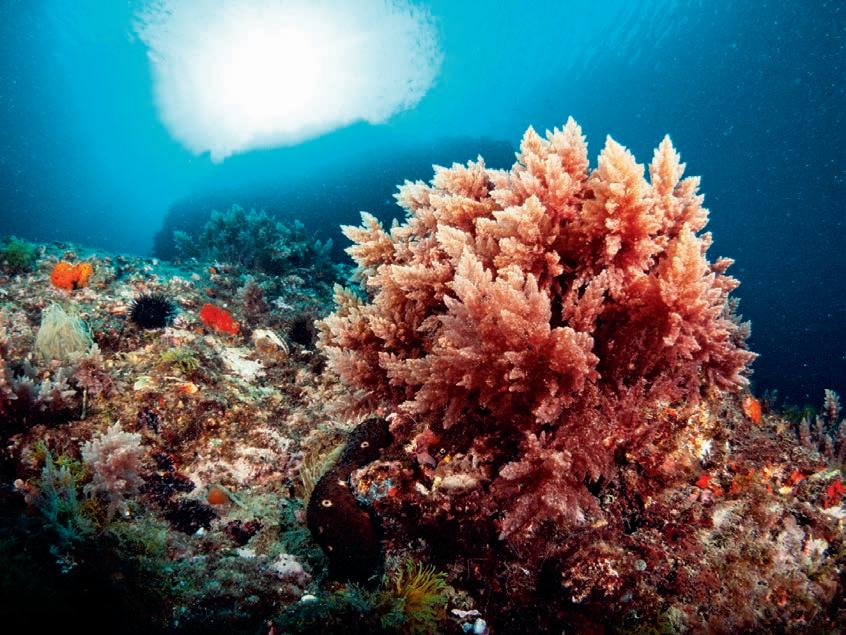
Currently growing seaweed on 32 hectares of sea floor in Western Australia’s Cockburn Sound, Fremantle Seaweed sits in a zone where both cold water and tropical Asparagopsis can grow.
Fremantle Seaweed says it is in advanced discussions with Indonesian growers to form a joint venture to be the largest supplier to access the Chinese and US cattle and dairy markets.
This, plus an expansion of Australia’s North West coast, could make Fremantle Seaweed the largest asparagopsis marine grower in Australia and put it up there with the biggest in the world, the company says.
The business was co-founded by Fremantle locals, forming mining electrician Chris de Cuyper and agricultural industry veteran Mick Holland, and the business was granted $4 million by the WA government to pursue investment in WA.
To support its planned expansion, Fremantle Seaweed has launched a digital campaign with crowd sourced funding house Birchal, to target people who want to invest in sustainable business.
“It’s an unusual investment tactic to run a digital campaign, but we are younger ourselves so invested in digital photography and telling our story through capturing everything we do,” de Cuyper says.
“We have done extensive research on
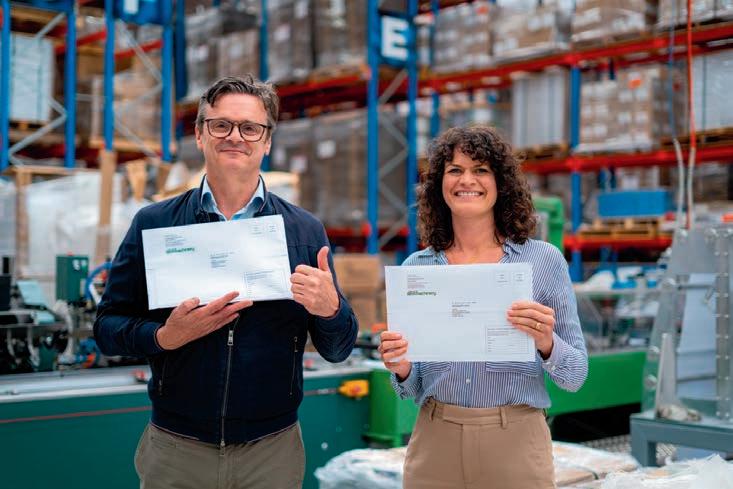
Prime Creative Media, the publisher of Farms & Farm Machinery, is Australia’s first publisher to send paper wrapped magazines at scale, in partnership with its printing and mailing supplier FSG.
FSG owner Michael Murphy and Prime Creative Media COO Christine Clancy, at the mailout from Australia’s first paperwrapping mailing machine. Image: Prime Creative Media
Based in Victoria, FSG purchased the country’s first ever paper-wrapping mailing machine in January this year.
Imported from UK supplier Norpak, the machine’s ability to wrap publications in paper will eliminate plastic wrapping for several Prime Creative Media titles, including Farms & Farm Machinery.
“It’s the evolution of the mailing industry to abolish the use of single-use plastics in mailing magazines,” says Michael Murphy, owner and director of FSG Mailing.
“This follows the government’s move to get disposable plastics out of our Australian systems.”
Up until this technology was in place, the only alternative option to plastics for publishers was paper envelopes.
Murphy says this was cost prohibitive for many clients, because the price of producing and printing the envelopes was high, in addition to labour of either hand inserting magazines into the envelopes, or using expensive equipment to insert into the envelopes and seal them - adding a significant increase to mailing costs.
our investment competitors and there is nothing to equal it.
“We thought using this was the best way to reach younger investors who consume their news across social media, to have exposure to our story.”
The news comes as Adelaide-based CH4 Global celebrates being named a one of America’s Top Green Tech Companies by Time Magazine.
CH4, ,which has an administrative head office based in Nevada, was among 250 companies selected by the magazine.
The distinction comes just weeks after CH4 Global completed the first commercial deliveries of its Methane Tamer cattle feed supplement to a feedlot at Warnertown, south of Port Pirie.
Mailing houses like FSG have experimented over the years with bioplastics, and recyclable plastics, but Murphy says the technology never quite worked out.
Murphy came across this technology through his supplier UK company Norpak, who previously supplied his plastic wrapping machine.
An additional environmental benefit to the machine is that because the addresses are printed directly onto the paper wrapping, it eliminates the need for flysheets – the paper that lists the addresses and is placed onto a magazine.
This improves efficiency, as it limits the printing and transportation of flysheets.
It also means that only a small amount of more paper is being used in with the new system, once the paper used in flysheet printing is taken into account.
This also opens up a vast array of options in using recycled and sustainable paper products.
Prime Creative Media COO Christine Clancy was on site at FSG in Bayswater to witness the first publications being sent out in paper-wrapping.
“It’s such an honour to watch history in the making, to see our publications make this first step in reducing single use plastics in our environment,” Clancy says.


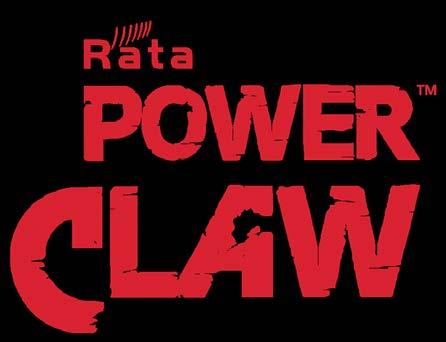



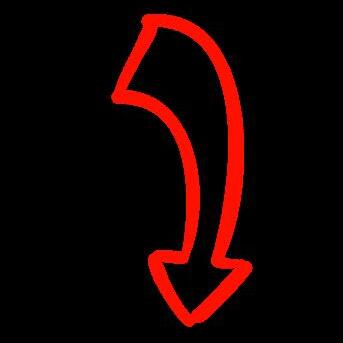
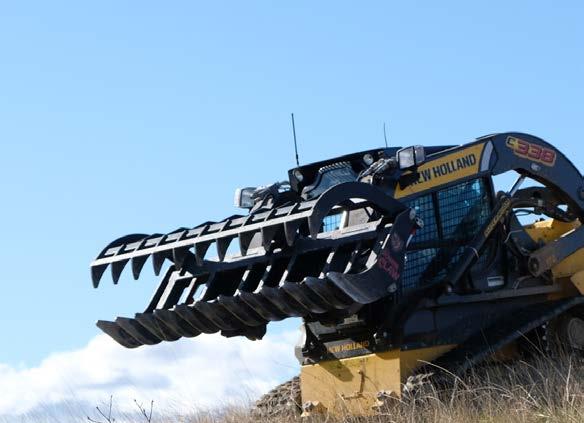



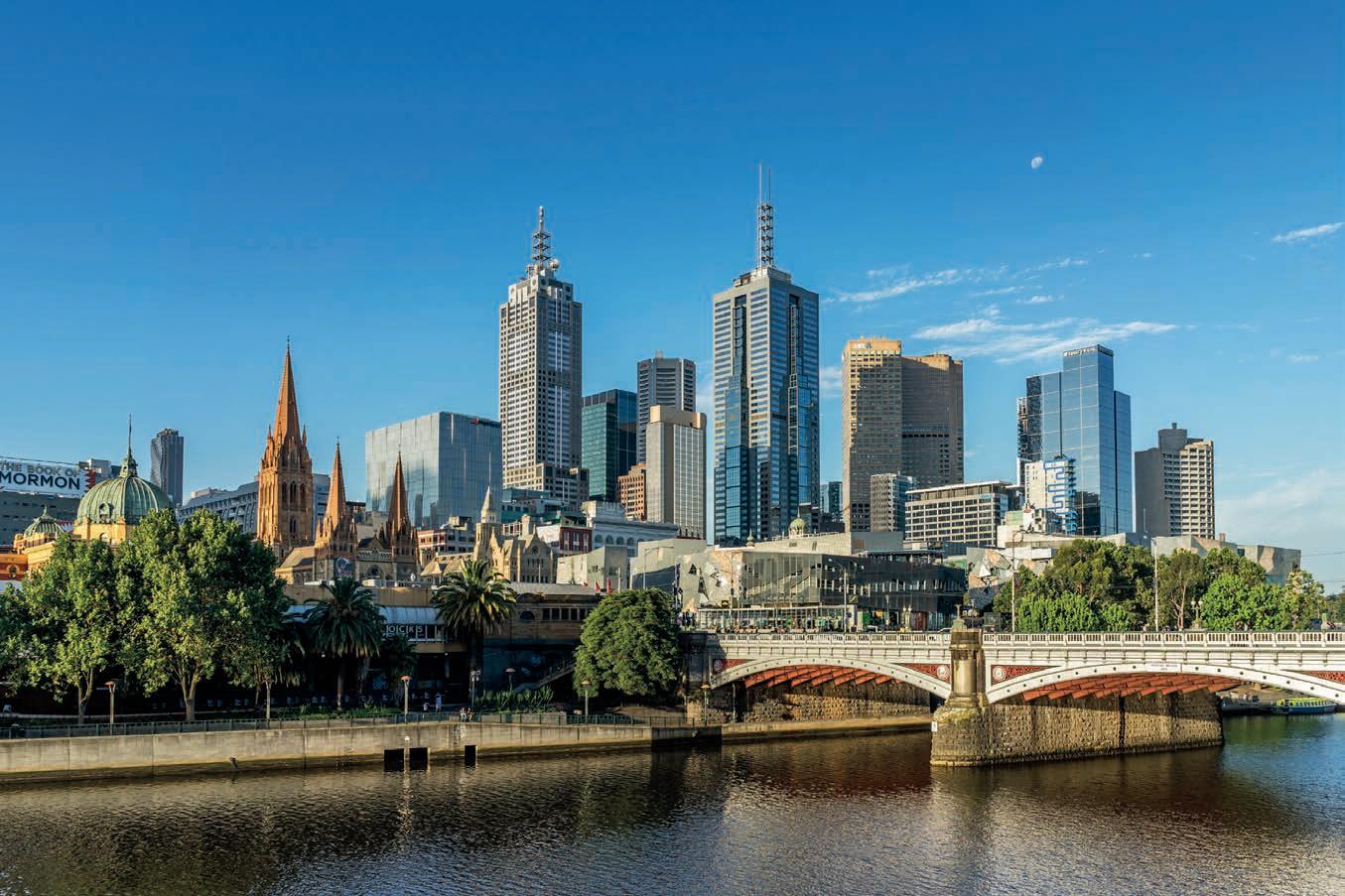


energy, innovative machinery, supply chains, biosecurity, agtech and smart farms, and the human connection.
The conference program includes keynotes from founder of agritech start-up Goterra and 2023 ACT Australian of the Year Olympia Yarger, plus chief scientist for the Food Agility Cooperative Research
Agribusiness researcher Mark Fletcher will provide practical insights on developing farmgate strategies, while DataFarming’s Tim Neale will share the transition to digital agronomy. Farmo founder Nick Seymour will explore key insights around the barriers to adoption in agtech on the Expert Stage within the exhibition.
Thanks to a new partnership, the National Farmers’ Federation will also bring a wealth of expertise and experience to
Melbourne will host the FutureAg Expo in April.
Image: Marvin / stock.adobe.com
FutureAg Expo, exploring sustainable practices, trade strategies, the impact of climate change on agriculture and discuss key policy areas impacting the industry.
“The conference is an opportunity to connect and collaborate with our industry’s leaders, innovators and professionals, addressing the challenges, opportunities and insights which will advance Australian agriculture now and in the future,” Nissen says.
FutureAg Expo will be held across three days between Wednesday 17 April and Friday 19 April 2024 at Melbourne Showgrounds, Ascot Vale, Victoria.
To register or for more information on FutureAg Expo 2024, including exhibitor and sponsorship opportunities, visit www.futureagexpo.com.au
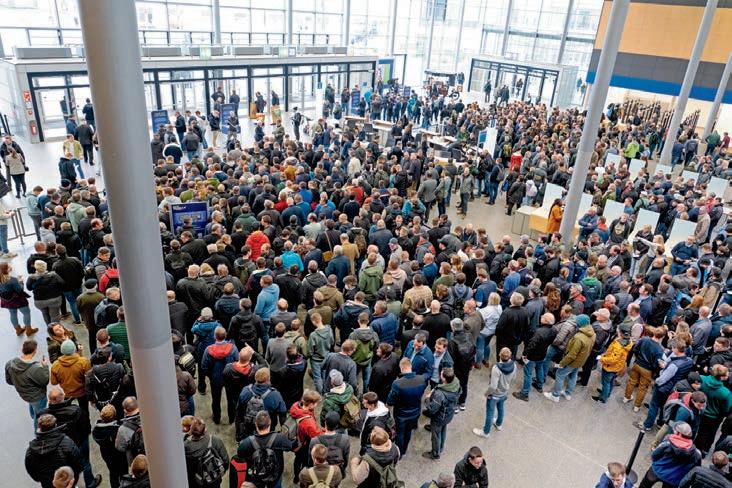

JSG Industrial Systems will use the FutureAg expo to remind customers how lubrication and fire suppression equipment can improve daily operations on a farm
As FutureAg provides a snapshot at what the next generation of Australian agriculture will look like, it is important to remember every aspect of the farming process and the need to consider maintenance.
Machines will evolve, as will the technology powering them, but the importance of lubrication and fire suppression will remain constants.
This is the core business of expo exhibitor JSG Industrial Systems, which will be showcasing its product range under the theme of “adding value to the crop cycle”.
Lubrication
Providing an extensive range of lubrication systems is an area of expertise for JSG, which can offer its customers everything from basic and manual setups for small farm equipment through to fully automated systems for large-scale broadacre machinery.
This variety will be on display at FutureAg, with JSG’s experienced team able to guide potential customers through the most suitable options available, depending on their specific requirements.
Regardless of a machine’s size, the importance of regular lubrication is fundamental, as JSG’s lubrication product sales manager Branco Zivic previously told Farms & Farm Machinery.
“What we’re trying to introduce is the idea that regular greasing or periodically greasing a machine is better than doing it once a day,” he said.

“Small amounts of grease, but often, is better than a one-off situation once a day.
“It’s also important that farmers keep introducing new technologies or systems that can benefit greater productivity and
reliability of their equipment,” Zivic added.
“If we can provide them a product that would reduce labour and increase productivity, then they’re a lot better off.”
Much of JSG’s lubrication product range bears the SKF Lincoln brand name.
A newly launched product is the SKF Lincoln compact lubrication pump series (CLP). Lightweight, simple and easy to use pump with a compact design, it is suitable for small progressive lubrication systems.
Among these options is the CLP Basic and Basic Plus, designed to be both reliable and affordable for the more simple lubrication tasks.
It offers reliable functionality and easy maintenance and can be controlled by an external lubrication controller or the machine control system. Using the SKF eLube app allows users to determine lubricant levels and pump functions remotely.
There is no need to stop the machine or physically access the pump to check lubricant levels and this can save time and also reduce the risk of accidents.
By adding an automated CLP system, farmers have the dual benefits of both reduced maintenance at the end of a long working day, and an easier and more cost-effective regular machine service.
Another of JSG’s most recent additions is the automated electric cartridge pump (AECP), which only hit the local market late last year.
Designed to provide simplicity and compactness for machines such as small tractors and telehandlers, the AECP can

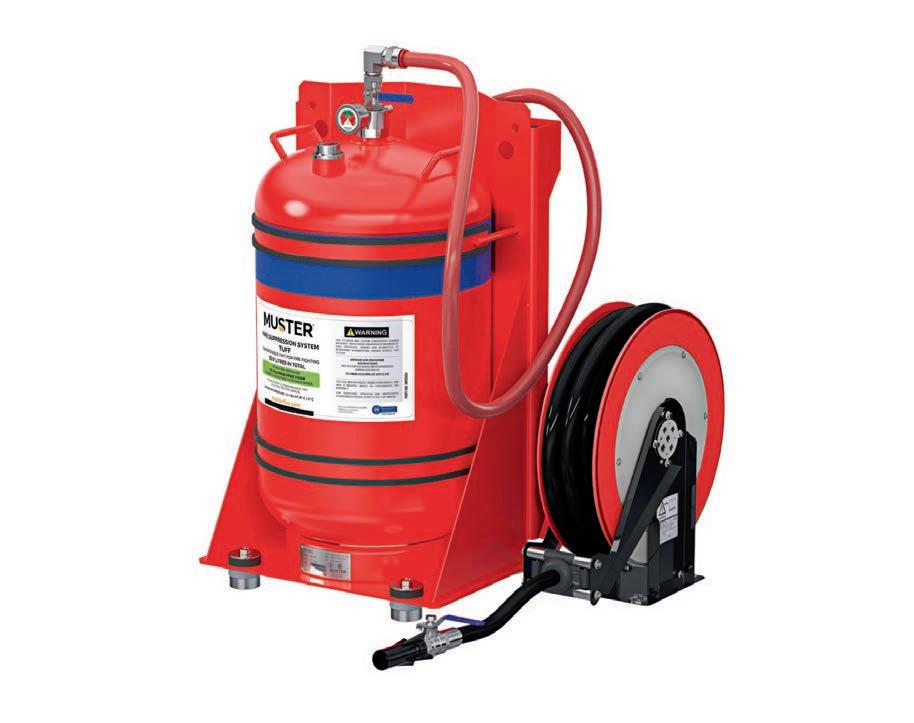

be placed directly on to the machine.
It lubricates progressively throughout the day while the machine is in motion, with the only ongoing requirement being to replace the empty grease cartridge.
JSG’s larger-scale systems also provide real-time data and predictive maintenance alerts, optimising a farmer’s lubrication schedules for maximum efficiency.
Fire suppression
Australian farmers regularly work in extreme heat and remote environments, where a small fire caused by mechanical failure or overheating can quickly become a major problem.
It is for this reason JSG says that equipping machinery with its fire suppression systems is vital.
“These are designed to detect and suppress fires quickly, safeguarding equipment, crops and operator safety,” JSG says.
“These systems are not only critical for preventing immediate fire dangers but are also crucial for maintaining continuous farming operations and essential for sustaining agricultural productivity.”
JSG offers fire suppression systems from Muster, which can be broadly split into the Muster Foam Based System and Muster TUFF system.
If excessive heat or flames are detected within the engine bay while a machine is operating, the Muster fire suppression sensors will immediately discharge an environmentally-responsible firefighting foam solution.
The TUFF system – which stands for
Transferrable Unit for Fire Fighting – is easily attached or positioned on mobile equipment or the back of a support vehicle. This is a flexible unit designed to provide more power, and is available in three sizes (38L, 66L and 110L) and two different pressure capacities (700kPa and 1,370kPa).
Ideally suited to the agricultural market, it works off nitrogen pressure and comes with a 15m retractable hose reel.
This means fires which may have quickly spread around the machine can be swiftly and effectively dealt with.
To learn more about what JSG Industrial Systems can offer, visit www. jsgindustrial.com or visit them at Stand 82 at next month’s FutureAg.

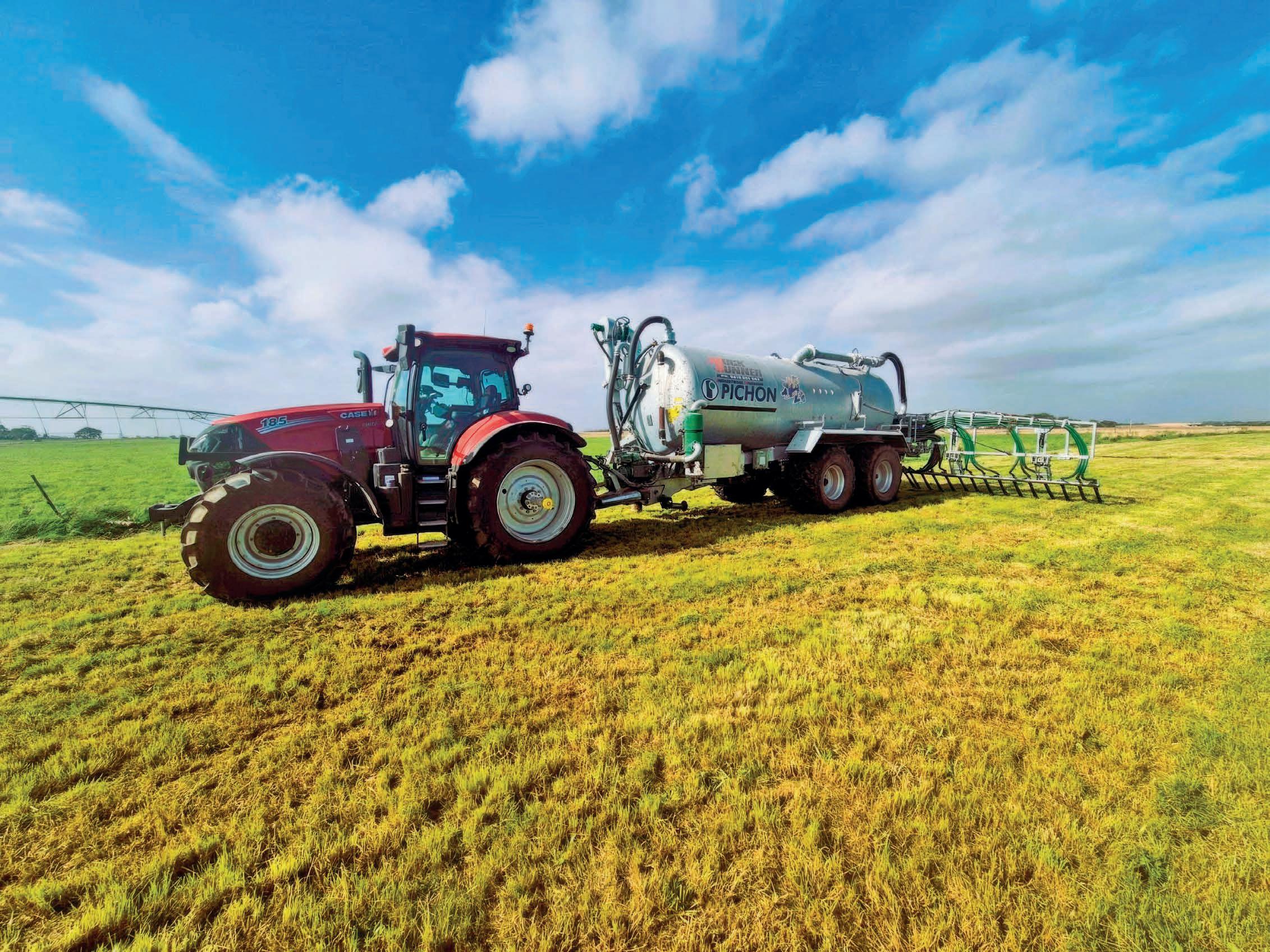
In the six years after he started working on his family dairy farm in 1984, Tom Paltridge saw a significant expansion of the herd.
But the larger herd meant dairy effluent was starting to become a problem – the natural cow by-product that, if not managed properly, can have negative impacts on the environment.
An EPA designed effluent system, consisting of a weeping wall, underground pipes, a manure pump and a travelling irrigator, meant they were constantly reactive to blockages.
And, as the application of effluent was restricted to paddocks close to the dairy, these were constantly overloaded with nitrates due to high application rates.
Frustrated by what he saw as a waste of nutrients, Tom invented his own way to transport the effluent further by converting an old fuel truck.
He would pump the effluent directly into the fuel tank and then gravity feed the effluent out the back of the tank via six-inch pipe dropping onto a plough disc – a very rudimentary splash plate – 1000 litres at a time.
When he showed his invention to a visiting Irish farmer, the Irishman smiled and said we have tankers to do that job.
So, knowing that UK and European farmers had been spreading effluent on pastures for many years, Paltridge started looking for a workable and beneficial solution to manage the effluent produced on his dairy farm.
While on exchange in the United Kingdom in 1996, Paltridge attended a field day where he met Philippe Pichon – who had a stand for his family’s machinery manufacturing business, Pichon Industries.
Pichon’s business was family owned at the time and based out of France – selling vacuum tankers for sucking up and spreading dairy and intensive animal farm effluent, back onto paddocks.
Key to Paltridge’s dairy effluent prob-
into Australia – starting his own business Muck Runner Pty Ltd.
“That encounter in the UK was the beginning of a life-long friendship between Phillippe and I, and a close relationship between Muck Runner and Pichon Industries,” Paltridge says.
Based out of Mount Gambier, South Australia, Muck Runner still sells Pichon machinery to farmers and contractors all over Australia.
The Pichon range focuses on muck
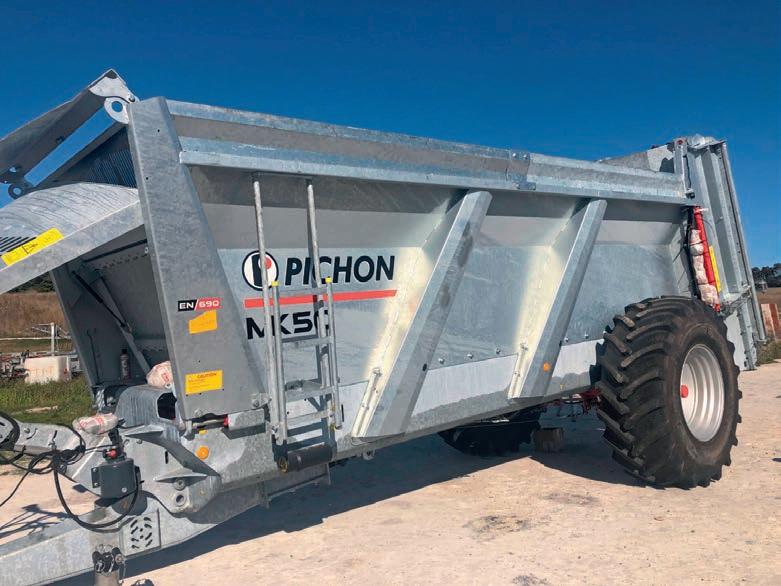

slurry tankers and solid spreaders.
Paltridge says all of these machines specialise in effluent handling – which can be manure from cows as well as the water that is used to keep yards clean.
According to Paltridge, effluent is a widely unused resource in Australia, but he has been using Pichon machines for many years to put effluent nutrients back on paddocks – assisting in growing pastures.
“The beauty of these Pichon machines is that the farmer already owns the product, and the nutrients are in the effluent, we can then use the machine to get those nutrients out to the paddock to grow the grass,” he says.
“And because they are mobile, we can use the tanker or spreader to target the paddocks that may be deficient in organic matter.”
Pichon speciality
Muck Runner solely focuses on the Pichon brand, importing these machines either for stock or for specific customer orders.
Based out of France, Pichon makes galvanised tankers, solid manure spreaders, slurry stirrers and tanker attachments for applying the effluent, such as trailing shoes, drip hose booms, and tine or disc injectors – handling dairy effluent and effluent from intensive husbandry overseas.

machines together ourselves, we know our way around them,” Paltridge says.
Tankers range in size from 5,000 to 20,700 litres, while solid spreaders range in capacity from 10 to 24 cubic metres.
The Pichon tankers, one of Muck Runner’s key product focuses, are used to suck up and transport manure and wash down water that runs into holding pits or ponds on dairies, piggeries and other intensive animal husbandry operations.
What ends up in the pit or pond is a wonderful organic fertiliser full of nutrients.
Paltridge explains the businesses’ vacuum tankers product as a pressure vessel.
“Being a system that uses vacuum, the air is sucked out of the tanker and then atmospheric pressure forces effluent in,” he says.
“When we go to the paddock, we pump air back into the tanker and that forces the product out.”
The benefit of this is that the Pichon tanker is only pumping air, not the effluent – leading to less problems such as blockages of pumps.
There are also no moving parts coming into contact with effluent.
Muck Runner assembles the imported machines on-site in its Mount Gambier workshop and provides them Australia-wide, with the Northern Territory and Canberra being the only two places the product hasn’t been sold to yet.
Having this knowledge of the machines, Paltridge can be an effective problem-solver for clients – working out most issues with just a phone call.
Paltridge believes the Pichon machines are unmatched for quality, performance and longevity.
All machines are hot dip galvanised at 480 degrees, with up to 8mm thick steel on bigger models, have stainless steel valves, bolts and fittings and oversized axles.
Such features make for a machine that will last for generations and is a great return on investment.
“I use the same machinery on my farm as the ones we sell for Muck Runner,” he says.
In fact, the very first tanker Muck Runner brought to Australia is still in use after nearly 30 years.
It had been in use weekly on Paltridge’s farm but has recently been sold to another farm to continue its service, as Paltridge has now upgraded to a 20,700 litre tanker.
He currently removes four loads a week from his effluent pit for his 400-cow herd.
“That first tanker is still going after 30 years and is as effective as it was the day it was built,” he says.
Muck Runner’s most recent sale has been
shoe attachment.
This attachment goes on the rear of the tanker and places effluent directly on top of the ground, underneath the leaf of the grass.
Paltridge says this tanker is hot-dipped galvanised to protect the 8mm thick steel from the corrosive effects of effluent – giving the machine a long lifespan.
The tanker has been fitted with a 14,000-litre/minute vacuum pump and has a plunger arm auto filler with turbo –allowing the driver to suck effluent from pits or ponds without getting out the tractor or dragging heavy hoses around.
With touch screen control and an electronic flow meter, operators can control the amount of effluent spread.
Recently, there has been increased interest using attachments such as trailing shoes and injectors to go on the Pichon tankers.
Paltridge explains that in doing so, effluent can be applied under the leaf of a plant, but still on top of the ground –therefore giving better utilisation of the business’ product.
“We want the poop back out on the paddocks, because that’s when it’s making us money!”
For more information on Muck Runner’s Pichon products visit www.muckrunner.com.au or call Tom Paltridge on 0419 851 543.

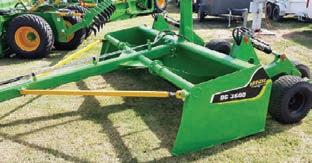
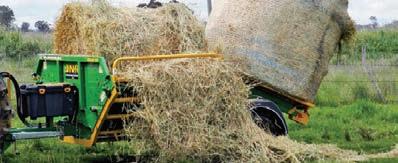
The


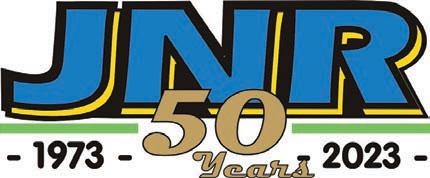



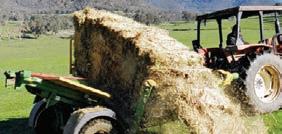




Sawquip’s extensive range of Australian made saws means both farmers and rural contractors can find a product to handle their unique needs
Any product that is many times faster than the traditional alternative, easy to operate and which eases the physical burden on farmers is ticking multiple boxes.
All of these benefits are what Sawquip says its range of towable firewood bench saws offers to customers.
Due to celebrate its 20th anniversary in business next year, Sawquip is in a position of experience to know the benefits of its Australian-manufactured products and the importance of local backup.
Sawquip’s technical sales manager Troy Pilcher cites the firewood bench saws as being the most popular product among the farmers in the company’s customer base, while the excavator saw range is the most sought-after by rural contractors.
Farmers and rural contractors are a significant portion of Sawquip’s clientele, according to Pilcher, along with arborists and civil contractors, plus land clearing and tree-care companies.
Pilcher says there are several key areas that customers are drawn to across all industries and which have helped Sawquip to develop and progress over almost two decades in business.
“We’ve developed a competency in large tungsten circular saws, which is one of the things we specialise in,” he says.
“Over the last 20 years, we have a lot of experience in dealing with circuit blades in different applications, cutting timber, vegetation and different materials.
“The range we’re doing at the moment is primarily timber focused, but one of the things that gives us a bit of a difference is

Sawquip’s towable firewood bench saws can be separated into three distinguishing characteristics.
There are two models which are motor-driven – the SBS30 and SBS36 – and both of these also have an electric-start equivalent.
The other model – PTOSBS36 – connects to a tractor via three-point linkage and is driven by the PTO.
The main difference between the SBS30 and SBS36 is the cut capacity.
The SBS36 has a 900mm tungsten-tipped blade compared to the 750mm tungsten-tipped blade on the SBS30, which gives the SBS36 a larger cut capacity of 355mm compared to 280mm.
Another standard feature across Sawquip’s towable bench saw range is concealed rollers, which bolster both its safety and efficiency by ensuring logs glide effortlessly across the bench saw and reduce both friction and the risk of jams.
Pilcher says there are three main rea-

sons why farmers are drawn to Sawquip’s towable bench saws.
“They are very portable, so farmers can take it around to any paddocks where they have timber to chop up or dead Iimbs that have fallen,” he says.
“The second thing is it’s quite quick, probably three to five times faster than using a chainsaw and you don’t have the maintenance involved.
“A third thing is that it saves your back bending over like with chainsaws, which particularly helps a lot of farmers that are middle to older generation.”
The bench saw concept has been around farmers and timber cutters for decades, and Sawquip prides themselves on manufacturing the ultimate bench from years of industry knowledge and feedback to provide the most efficient and safest benches on the market.
Sawquip’s range of excavator log saws are the most popular with rural contractors, and are becoming a recognisable
attachment for efficient and precise processing of Australian hardwood timbers, like ironbark, box and gum species. This range is available in four different sizes suiting excavators from 3.5 tonnes to 30 tonnes.
The Logripper range provides contractors with the versatility to handle up to 800mm cuts with a 1,830mm tungsten-tipped blade.
These specifications relate to the topend X18, which is designed to handle the toughest jobs.
Between 180L and 200L of hydraulic flow per minute is required for the X18, and an excavator between 15-30 tonnes is recommended to run the powerful 880kg unit.
Sawquip’s next model down – the X15 – offers a 1,520mm blade and 650mm maximum cut, which then steps down to a 1,220mm blade and 510mm maximum cut on the X12 and a 900mm blade and 370mm maximum cut on the X09.
Each Logripper model can be fitted to any excavator with appropriate auxiliary

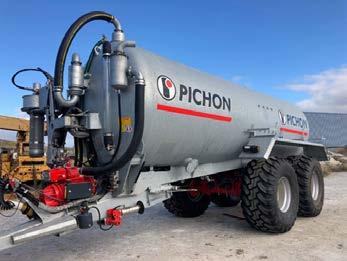


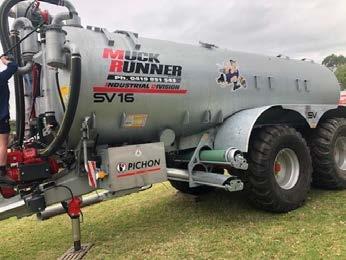
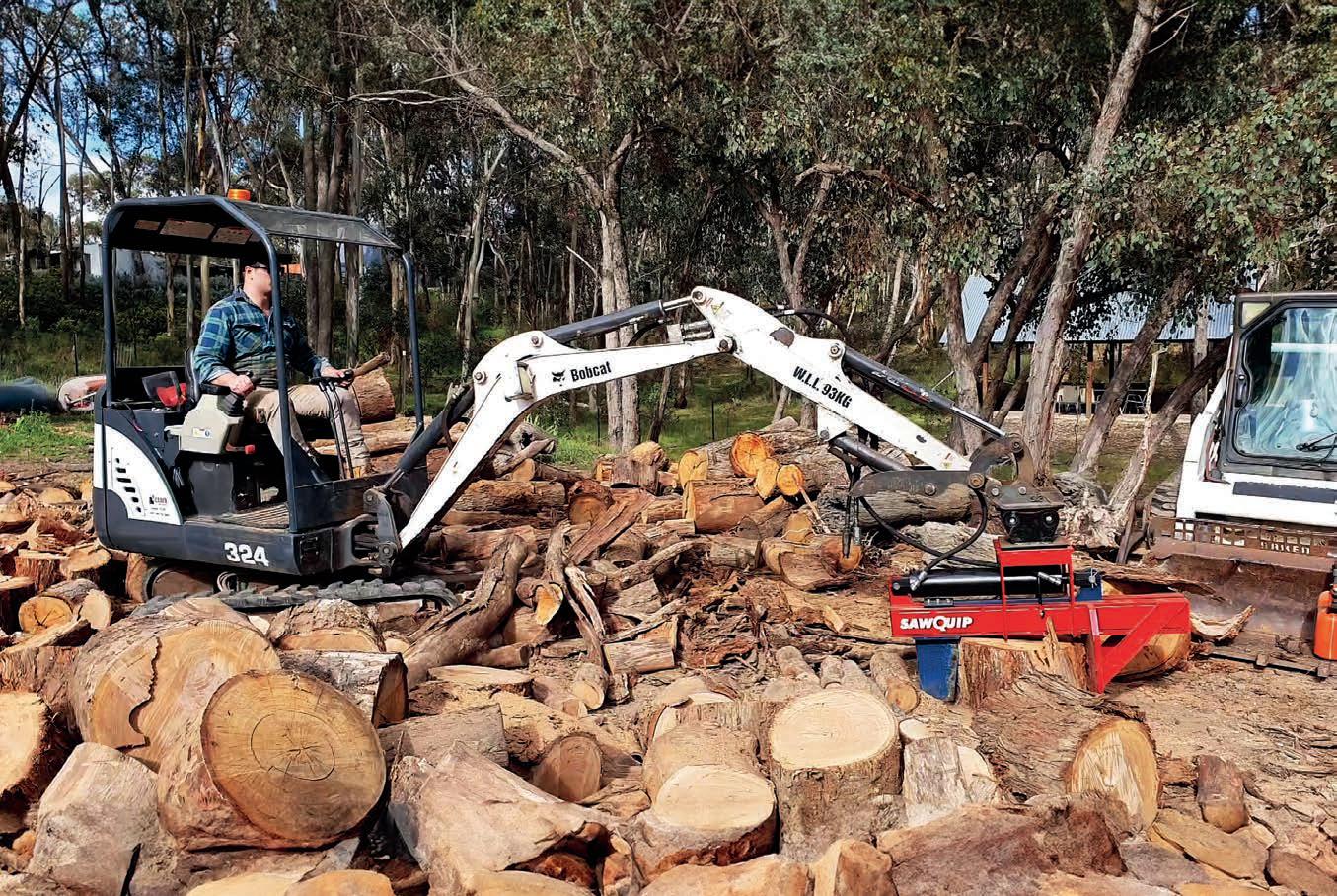




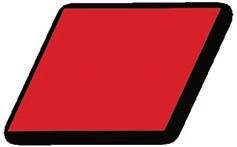

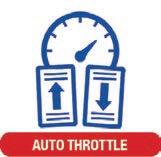










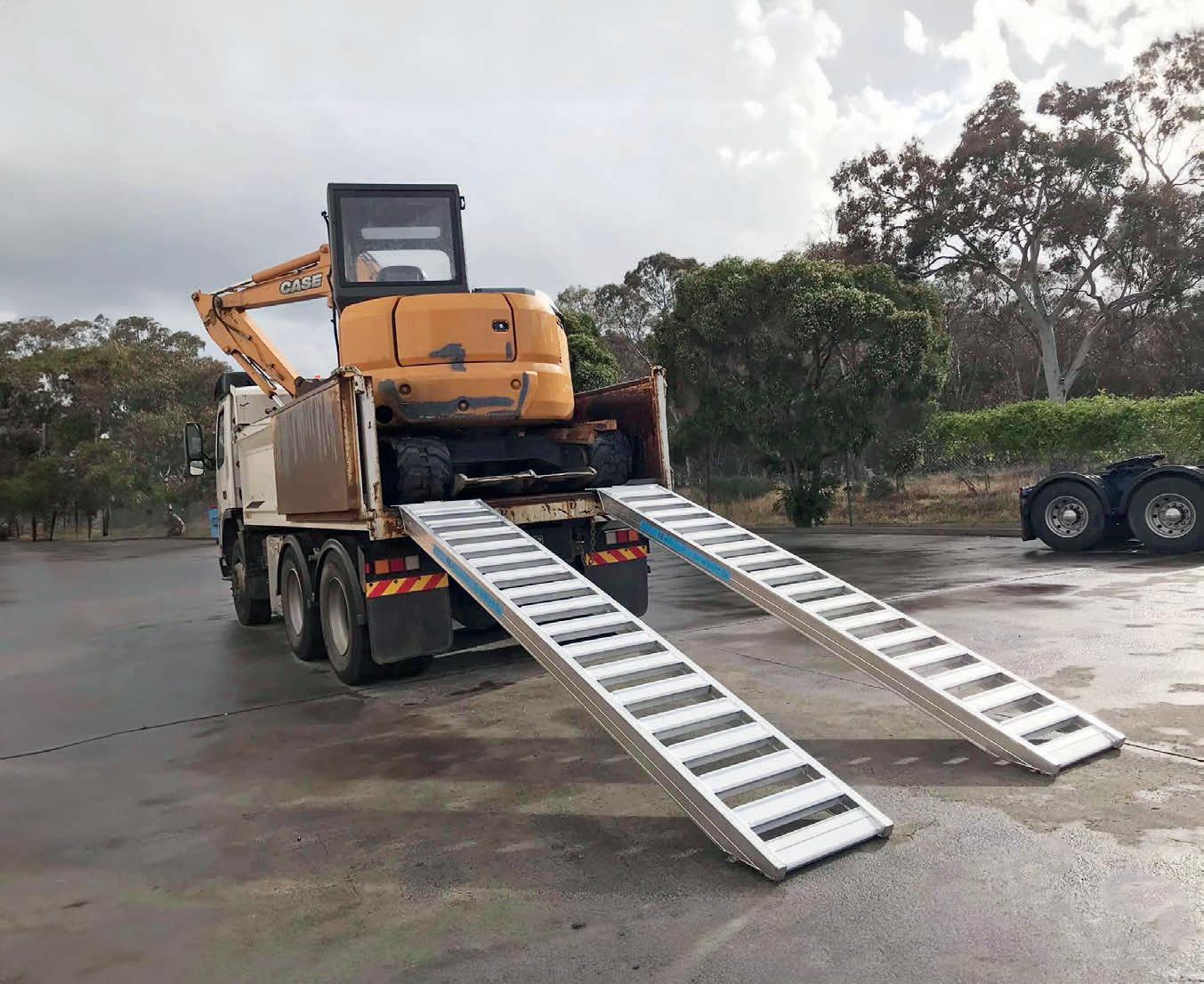
As machinery such as loaders and excavators increase in popularity on Australian farms, every logistical aspect of their daily operations needs to be considered.
One part of the equation – particularly for broadacre farms with long distances between where the machine may be needed – is safe transportation.
This is where Jetland Loading Ramps enters the conversation.
The Australian-owned company designs and sells high-quality ramps to handle everything from ATVs through to 42-tonne machinery, while also catering to non-farm specific needs such as wheelchair and walk ramps.
Jetland is experienced enough to know that while many farmers’ ramp needs are similar, a one size fits all approach is not always the answer.
One of Jetland’s points of difference is its ability to custom build ramps to any specification, depending on a customer’s requirements.
Jetland stands out through the ease with which customers can both purchase their ramp and have it delivered.
Jetland’s website is kept up to date with an extensive and detailed product selection and provides the ability to order online.
Crucially, if something is listed on the website, it means stock is available at Jetland’s warehouse in the Melbourne suburb of Mordialloc.
From there – Jetland promises free delivery Australia-wide to any commercial address with loading facilities, while also having a network of depots around the country where ramps can be delivered.
This represents a huge potential saving for customers in delivery costs, while also providing the confidence in knowing the locally built ramps will arrive quickly without delays in either manufacturing or overseas shipping.
Being able to get a product delivered anywhere within Australia for free – and quickly – would not count for much if the ramp itself was substandard.
This is not something Jetland ramp users need to consider though, with a wide variety of satisfied customers that are
not only farmers but also who represent industries as diverse as plumbing and removalists.
Jetland ramps are built strong and heavy-duty for Australian conditions, with four different series available to help customers decide what will best suit their needs.
The first of these, the A Series, is suitable for rubber track machines and is available with load capacities between 2 and 6 tonnes and in lengths between 2.5m and 4.5m.
The B Series is suitable for rubber track and rubber tyre machines. This is available in 2 to 6 tonne load capacities and 1.8m to 4.8m lengths.
Jetland’s C Series is also suitable for both rubber track and rubber tyre machines and comes in with 4 to 21 tonne load capacities and 2.5m to 4.5m lengths.
Jetland’s heaviest duty offering, the D Series, is suitable for steel track, rubber pads on steel, rubber track and rubber tyre machines, and is available in 2.5m to 4.5m lengths.
The D Series has recently been upgraded to support much heavier loads, a move
Images: Jetland.
which Jetland says highlights the company’s commitment to innovation.
Designed by Japanese engineers, the D Series now supports up to 42 tonnes, where it was previously only rated up to 21 tonnes.
Jetland says this makes it the first 42-tonne rated loading ramp available in Australia.
This is evidence of the variety offered by Jetland, while another aspect to consider is the machine wheelbase.
Jetland says it is important for customers to consider the machine wheelbase when evaluating their ramp loading capacity.
They should also choose a ramp with an internal width that is at least 5cm wider
than the wheels or tracks of the loaded machinery, the company says.
All Jetland ramps across the four series are built from super-strong aluminium, which helps to make them lightweight and portable.
Thorough safety systems and using high-quality raw material help to ensure a safe and reliable product, which also provides operators with confidence in carrying out secure loading and unloading of different types of machines.
Safety is a top priority when using loading ramps, and the Jetland team has put emphasis on ensuring their ramps not only meet but exceed safety standards.
The ramps feature anti-slip surfaces, ensuring maximum traction for vehicles and machinery during both loading and unloading.
They are also fitted with safety pins, ensuring the ramp remains securely in place during use.
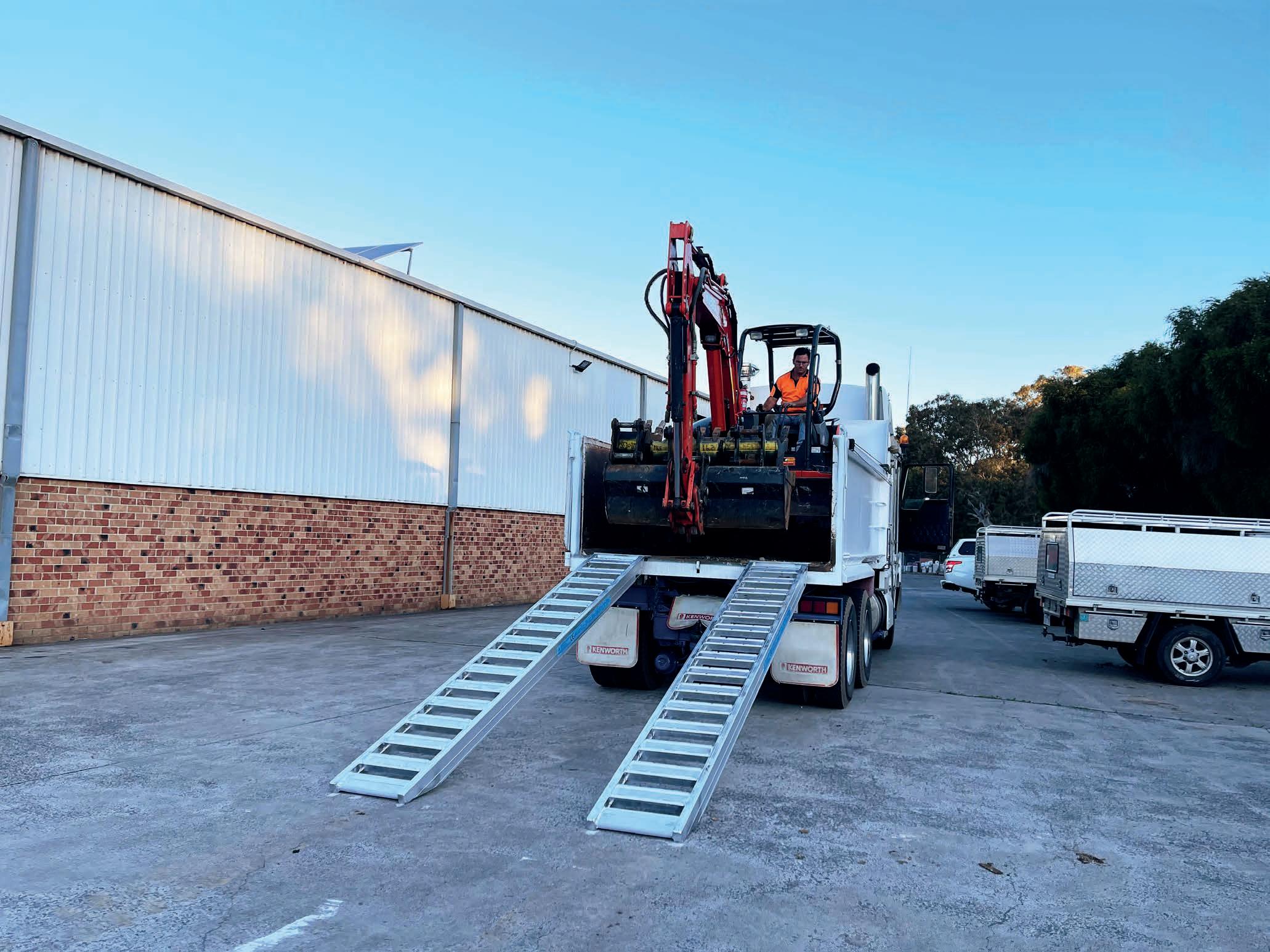
Other features available across various Jetland models include a non-skid surface, flat rungs for smooth loading and heavy-duty raised tread on flat rungs.
All Jetland ramps are also backed up by a 12-month warranty, giving users additional peace of mind.
Jetland’s full range of ramps, and the delivery depot network, can be viewed online at www.jetlandramps.com.au
The ramps can comfortably handle a variety of heavy machinery
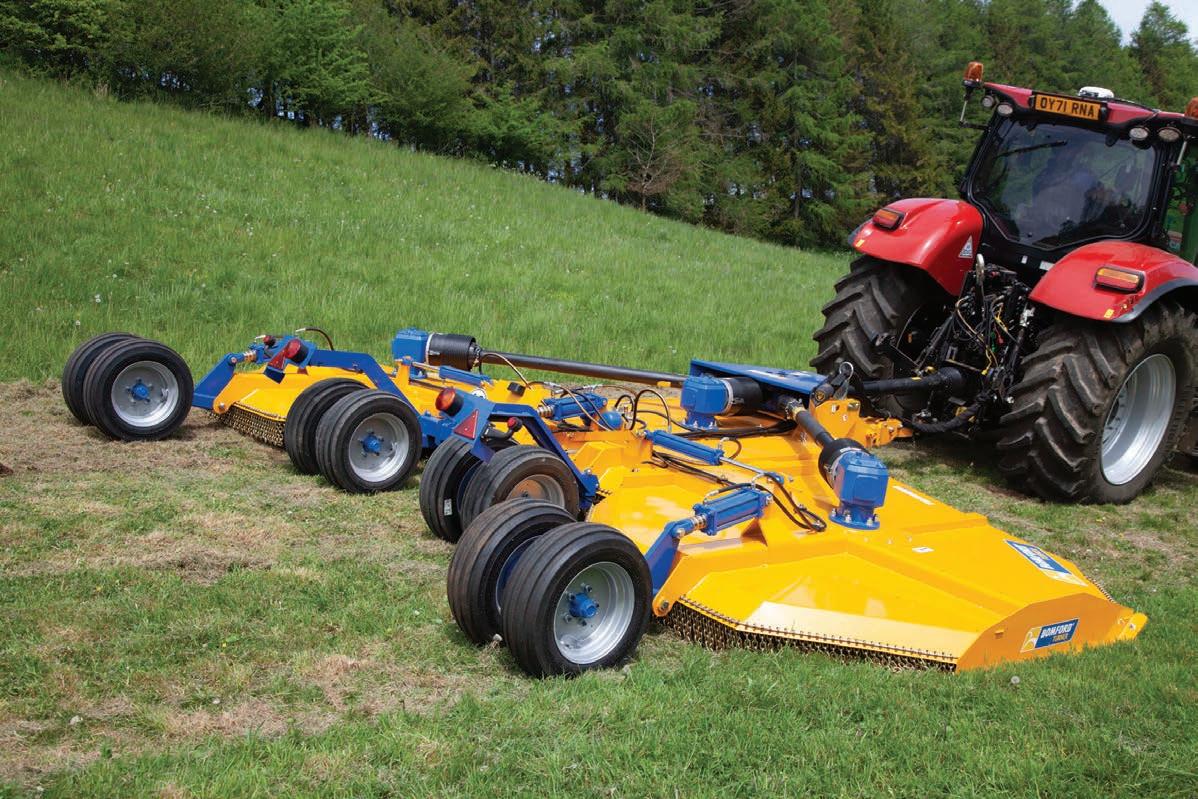
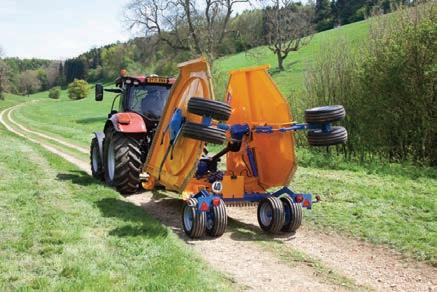
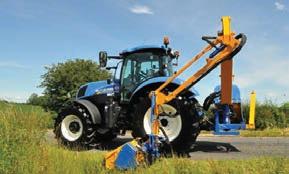


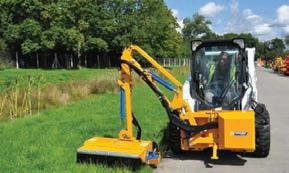


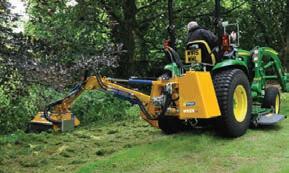



A Victorian government grant has enabled Duxton Dried Fruits to replace its petrol UTVs with electric units as the producer moves towards net zero emissions
As more private enterprises look to help reduce emissions across industry, one Victorian farm company is already reaping the benefits of government support.
Duxton Dried Fruits received a grant as part of the Victorian government’s $5 million Zero Emissions Vehicle Commercial Sector Innovation Fund, which has allowed for six petrol UTVs to be replaced with their electric equivalents.
Duxton has 540ha of dried grape vines in the Sunraysia region of north-western Victoria and currently produces about 30 per cent of Australia’s dried fruit harvest.
The grant has enabled Duxton to not only purchase six electric UTVs, but also install an on-site solar charging station for them.
The company is currently working with local educational organisations and other groups to develop a report into the machines, aiming to encourage greater user adoption of zero-emissions technology across the agricultural sector.
Duxton sustainability project officer Henry Young says this collaboration has
provided mutual benefits in terms of exposure, education and access to practical data.
“We’ve partnered with TAFE Victoria

and we’ve been working with our local TAFE provider SuniTAFE in Mildura,” he says.
“We’ve developed an educational
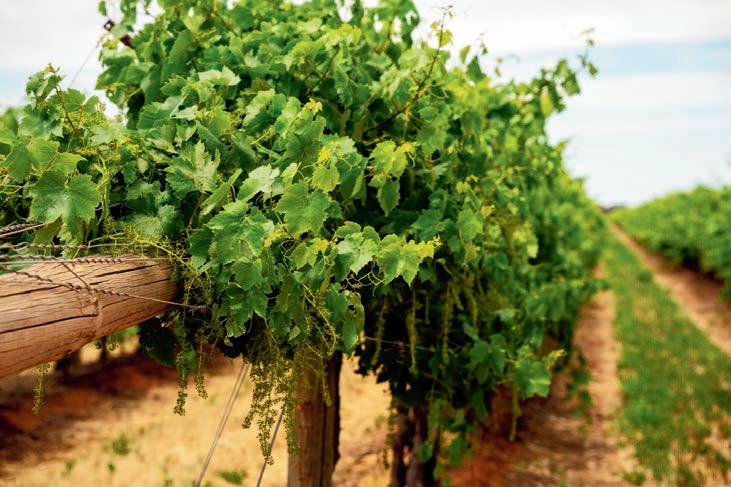
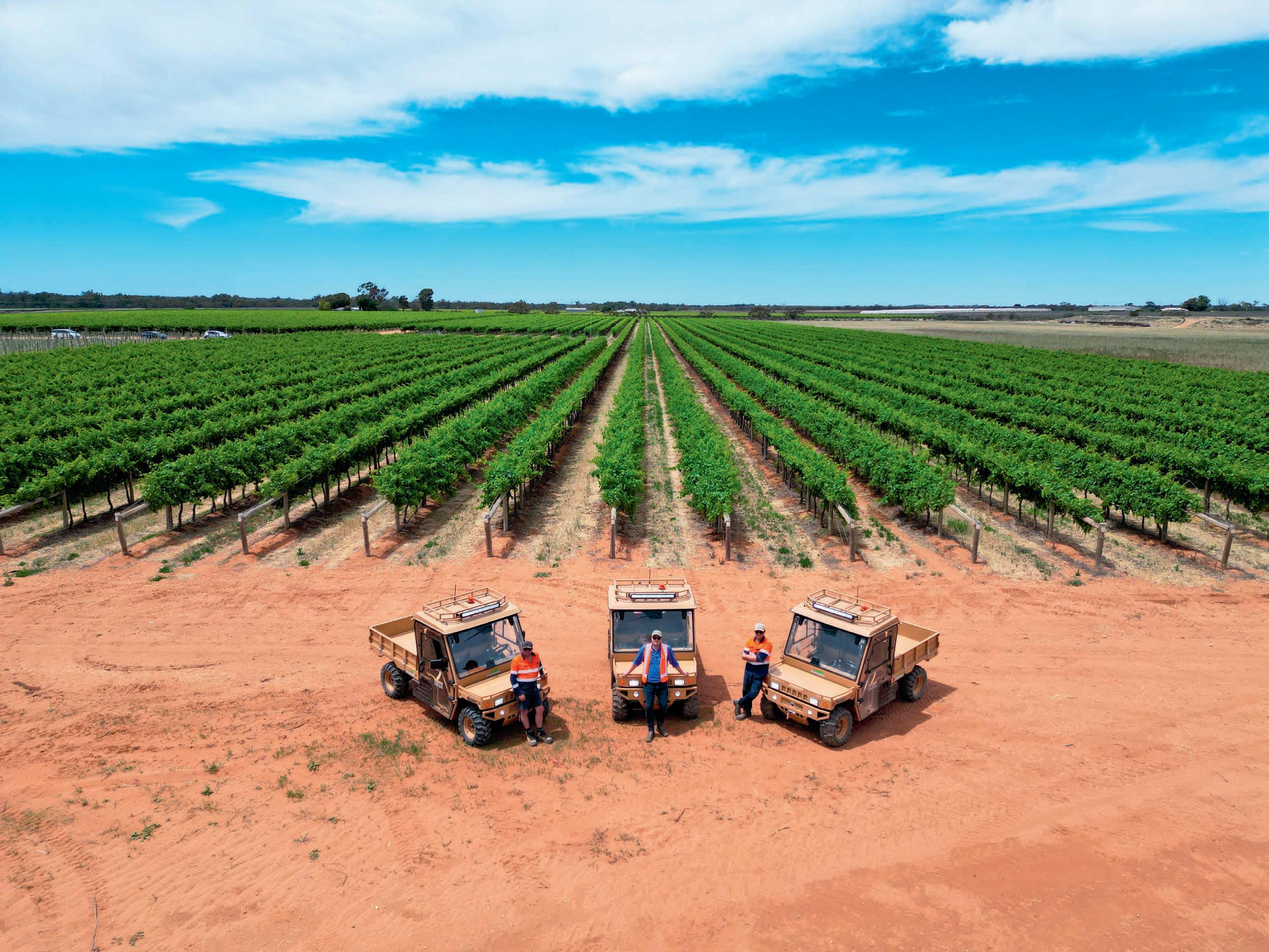
“In terms of the solar infrastructure, we’ve partnered with La Trobe University. They’re being fed the live data and they’re compiling a ‘pathway to adoption’ roadmap for the technology in the agricultural sector,” he adds.
“We’ve been working with the Mallee Regional Innovation Centre. They regularly put on grower workshops and field days and through them we’ve been able to showcase the technology and give it exposure to the local agricultural sector.
“This is a keystone project to demonstrate to our existing portfolios and the wider agricultural community of the way that solar can be adopted on a pathway to net zero.”
Duxton’s solar setup includes a rooftop-mounted solar array totalling 60kW, while a complementary battery system that stores 128kW hours of energy has also been installed.
Duxton used grant funds to engage a solar provider who designed a system which will account for all the company’s power usage and allow for the vineyard to reach net zero emissions.
The vineyard currently uses half a megawatt of electricity per year, Young says, while the solar system is designed to produce one megawatt of power per year.
The new electric vehicles have been “really well received” since being introcourse that our staff are completing that goes through maintenance procedures and operational procedures unique to high-voltage electric vehicles.
“We modelled it that with the increased electricity usage with the electric vehicles that the vineyard will be a net zero producer,” he says.
duced into Duxton Dried Fruits’ operations, according to Young, and operate seamlessly throughout the day before being charged overnight.
“There was a sense of anxiety with battery replacing internal combustion engines, but they have been absolutely faultless so far,” he says.
“The UTVs are integral to our day-today operations. All the machines are used daily by our staff.
“The various roles they fulfil include fuel and harvest support during the summer months, general yard duties, irrigation checks and currently they have been used widely for weed control.
“My favourite thing is probably the reduction in noise in the operator environment,” Young adds.
“They’re also considerably more powerful than the machines we’ve replaced,

and they have got a range of innovative features.”
Adopting new technology on farm often leads to benefits beyond initial expectations, and this has proven the case here for Young and the Duxton team.
“The solar system and battery have, in general, replaced us having a fuel bowser and fuel tank,” Young says.
“We’ve greatly saved on the complexity and labour savings of not having to organise fuel and have emergency run-ins to town, which is about 40km away, for supplies.”
The convenience factor is significant and when time equals money, the financial impact of this is also beneficial.
Young acknowledges while there is a financial outlay for farms to invest in the full electric setup, it was a “no-brainer” for Duxton and is a decision the company expects will yield long-term benefits.

“The machines from a pricing standpoint are on par with what’s out there in the market already in terms of internal combustion engines,” he says.
“There is a significant
solar and battery setup, but that is offset by the greatly reduced operating costs of not having petrol in the system.
“Each business is unique, and you will

having a solar and battery system is a no-brainer.”


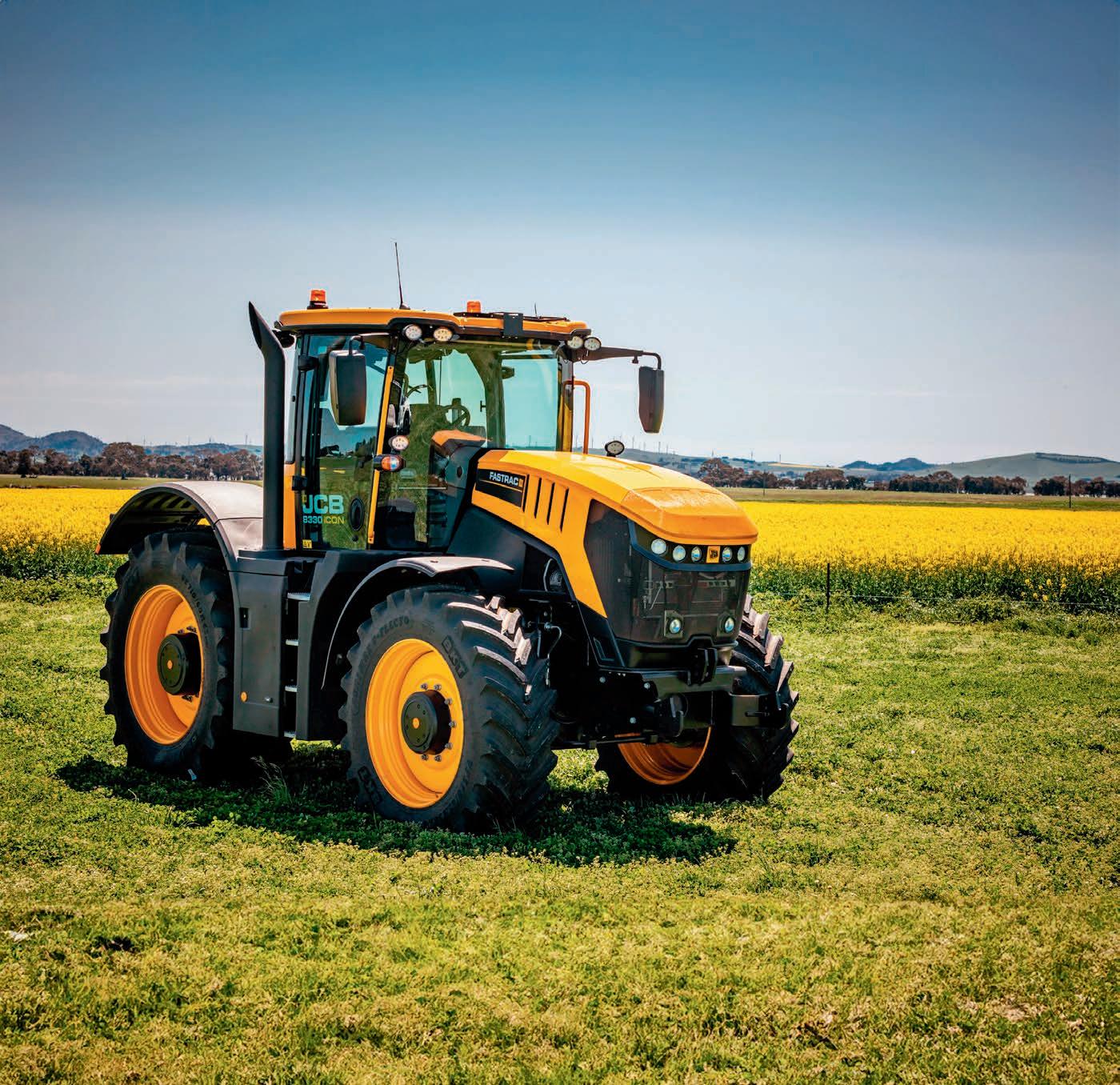



A large-scale cropping operation continues to thrive thanks to its fleet of JCB Fastrac 8330 tractors
When operators are fighting over the opportunity to drive one particular tractor, you know the manufacturer is doing something right.
For staff at Willaroo, a 15,000ha farm owned by Warakirri Cropping, the tractor in demand was a JCB Fastrac 8330 iCON.
“Our operators were fighting over who was going to drive the Fastrac. You spend a full day on that and you’ve still got a spring in your step when you get off it, but on the other one you had a bit of a sore
back by the end of the day,” Willaroo farm manager Matt West says.
Willaroo is located southwest of the Queensland border town of Goondiwindi, but its 15,000 arable hectares are on the New South Wales side of the border.
Cropping the likes of wheat, barley and chickpeas, it is a large-scale operation that requires multiple tractors.
Spending their days towing the likes of trailed sprayers, linkage spreaders and chaser bins, it is imperative that the
tractors selected by Willaroo are both efficient and comfortable.
It has therefore been music to operator’s ears – and relief to their backs – that the JCB fleet has been expanded.
Operators now have the choice of one Fastrac 8330 Series 4, an 8330 Series 5 and an 8330 iCON.
JCB’s Fastrac range has proven to be a clear winner for Willaroo’s operators, which West believes is down to two main factors.
Images: CEA.

“First of all, it’s the comfort,” he says.
“They’re such a smooth tractor in the paddock and the efficiencies gained from the spreading side are significant.
“We’ve been able to spread in the paddock at a higher speed and have operators sit in the seat and be comfortable.
“The tractor seems to cruise across the paddock quite nicely. They’re very smooth and efficient, having that added speed to get jobs done a bit quicker.”
Having previously run a Fastrac alongside another manufacturer’s tractor, prompting the anecdote about operators competing to be inside JCB’s machine, West is able to recognise the reduced fatigue experienced by operators.
As is often the case with Australian farmers, it was a word-of-mouth recommendation that began West’s association with JCB tractors.
It only took one experience for him to realise the potential it could have for Willarroo.
“There was a guy running one in Goondwindi on a spreader, and I went and had a look at it and just had a chat to him,” West says.
“I then went to a field day at (local dealer) WJ Matthews and did a demo on one. We were pulling a trailing spreader and I was

heading sideways across the tram lines.
“We were doing 30km/h and the spreader behind us was bouncing around crazy, but we were sitting in the tractor and it was just gliding across the paddock.
“That was probably the biggest selling point for me, just how smooth this thing was and how much I could improve my spreading efficiencies going forward.”
Fastrac tractors have been part of JCB’s
range since 1991 and have naturally been refined and improved over time.
The 8330 is the manufacturer’s highest horsepower offering that provides up to 348hp (260kW) in power.
A major recent development has been the addition of the iCON concept, which is a new technology-packed control system designed to elevate the user experience.
“The iCON is definitely a step above the

other series tractors,” West says.
“Bringing that technology into the machine has made a big difference, especially with the ISOBUS compatibility and being able to bring that into the separate screens.
“It’s a big improvement and we’re quite impressed with the iCON.”
The first JCB Fastrac 8330 iCON hit Australian farms in late 2022 and boasts the manufacturer’s new electronics infrastructure suite.
Improved ISOBUS connectivity is a critical element of the iCON concept, as is JCB’s new armrest console and 30cm touchscreen display.
Swiping right on the touchscreen brings up a more detailed running screen that includes settings for up to six front and rear spool valves, plus a remote camera view, an ISOBUS 2 Universal Terminal screen and satellite guidance and precision farming options.
This ability to control attachments such as the spreader, sprayer and chaser bin more easily was cited by West as the biggest advantage of the iCON series.
Adding a completely new control system has been a major upgrade, but JCB’s 8330 Fastrac was already a popular tractor – hence why Willaroo already had two in its fleet.
In addition to the powerful 348hp (260kW) engine that produces 1,450Nm of
traction and therefore stability.
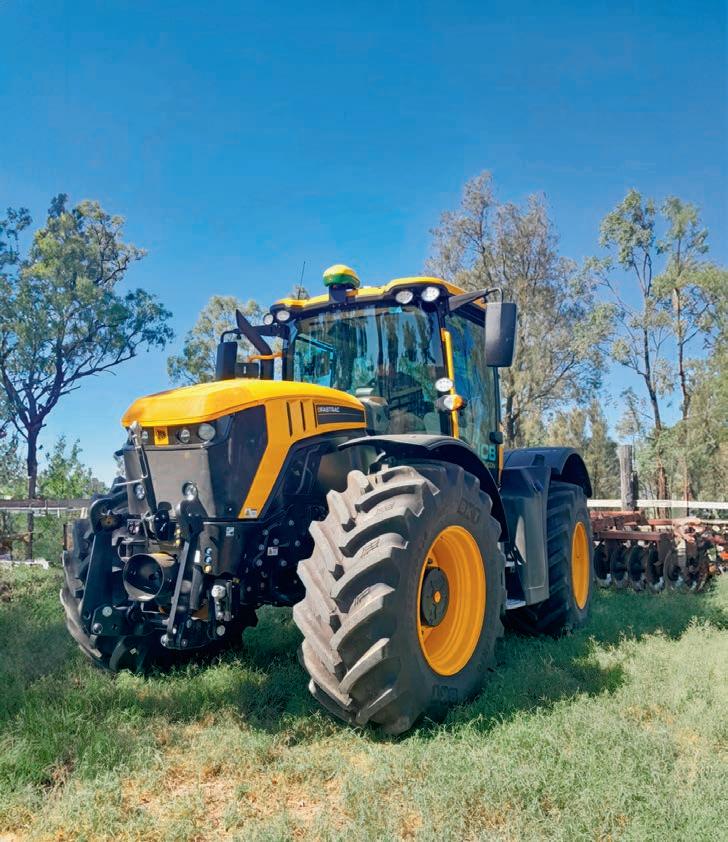
West described the JCB’s speed across the paddock as an advantage over other tractors, and the numbers back this up.
JCB lists the Fastrac 8330’s top speed as being 70km/h, allowing it to move quickly between jobs on large-scale farms such as Willaroo, while a modified Fastrac also set a record for the world’s fastest tractor in 2019.
For West, his initial experience with both the tractor and local dealer WJ Matthews was nothing but positive – and this has continued to be the case.
Any farmer knows even the best plans can go awry, and even the most reliable machines have occasional issues, but the way JCB have handled these have al-
“We’ve had JCB come and train some of the staff through the new tractor and (national Fastrac product manager) Andrew Hacker has been out on the farm too.
“Warranty has probably been a big thing for me too. With any issues that we have had, WJ Matthews and JCB have really bent over backwards for us.
“Nothing has been too much of a drama, they’re willing to listen and help with any issues. With other tractor manufacturers or other companies that we deal with for some of our other gear, we would have been stuffed being down a tractor at harvest.
“I can’t praise them enough for that.”
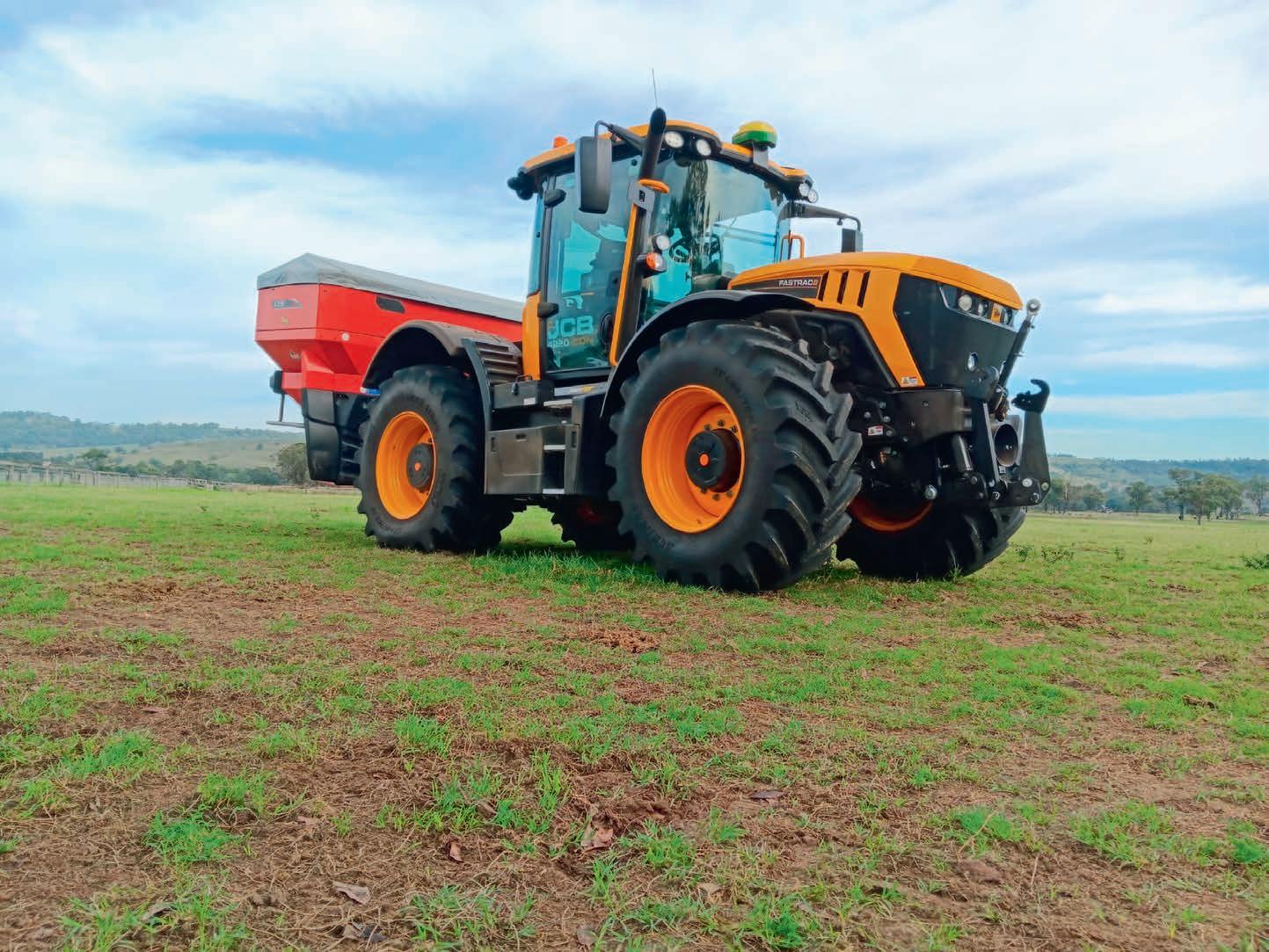 The Fastrac is a staple of JCB’s tractor offering
JCB’s Fastrac being demonstrated in New South Wales
The Fastrac is a staple of JCB’s tractor offering
JCB’s Fastrac being demonstrated in New South Wales

Inlon has hit the ground running to start 2024, bringing new TYM tractors to Australia while welcoming upgrades to Strautmann feed mixers
An official launch event for new utility cabin tractor models TYM T68 and T78 was held at the main office of Australian distributor Inlon earlier this year.
In addition to the new tractors, TYM dealers from across Australia also got
TS25 and T2900HST compact tractors.
Three representatives from TYM Korea travelled to Australia as part of a factory delegation and learned more about the local market.
“After the inevitable ‘pandemic lull’ in
up for lost time, with four new models released in the last six months and two more to come in 2024,” Inlon’s sales and marketing manager Gary Surman says.
“It was an opportunity for the delegation to speak with dealers and hear about the great customer experiences, new product ideas and needs of the Australian market.”

The TYM TS25 and T2900 ROPS tractors are described by Surman as being “welcome additions to the compact tractor market”.
Both offer auto throttle and HST simplifying operation, while their heavy-duty front axle, longer wheelbase and large industrial front and rear tyres give extra stability when lifting and loading.
TYM’s other additions - the new TYM T68 and T78 cabin tractors - are powered by the German-built Deutz TCD 2.9L turbo diesel intercooled engine, which is fuel efficient, reliable and powerful, with a dual dry-element air cleaner for Australia’s dusty conditions.
The four-cylinder engine produces an impressive 67hp and 75hp respectively and only 2200 engine rpm for optimal fuel efficiency.
“Importantly, the electronic engine governor holds the set engine rpm, under varying loads, delivering the maximum power of the engine when required, without rpm droops or spikes,” Surman says.

“This is ideal for PTO work, as the PTO speed is maintained without loss of rpm up to the maximum power rating.
“In comparison, an engine with a mechanical governor experiences rpm droops and spikes as the load varies in operation.”
Power shuttle transmission for the TYM T68 is 24-speed, with 18 speeds under 10km/h and 16 speed, with 11 speeds under 10km/h for the T78.”
Distributed Australia-wide by Inlon, the TYM T68 tractor loader package starts from $74,900 while the TS25 starts from $20,713 (tractor only).
The TYM range can be viewed online at www.tym.ag/931.
Mixer innovation
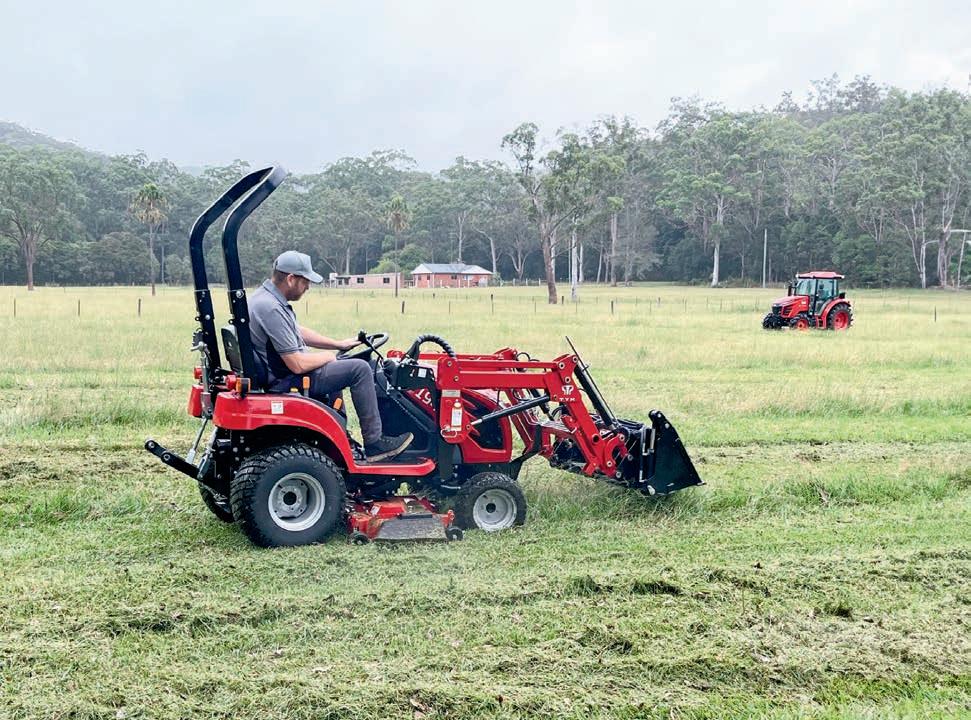
Strautmann, another brand represented in Australia by Inlon, has continued its innovation and development of its feed
Now in its fourth generation, Strautmann has introduced its new Intensive Mix System (IMS) auger.
Strautmann pioneered the develop-
agitates, lifts and loosens feed material, for a faster mixing time, uniformity and lower power requirements. With the new IMS, Strautmann has increased the number
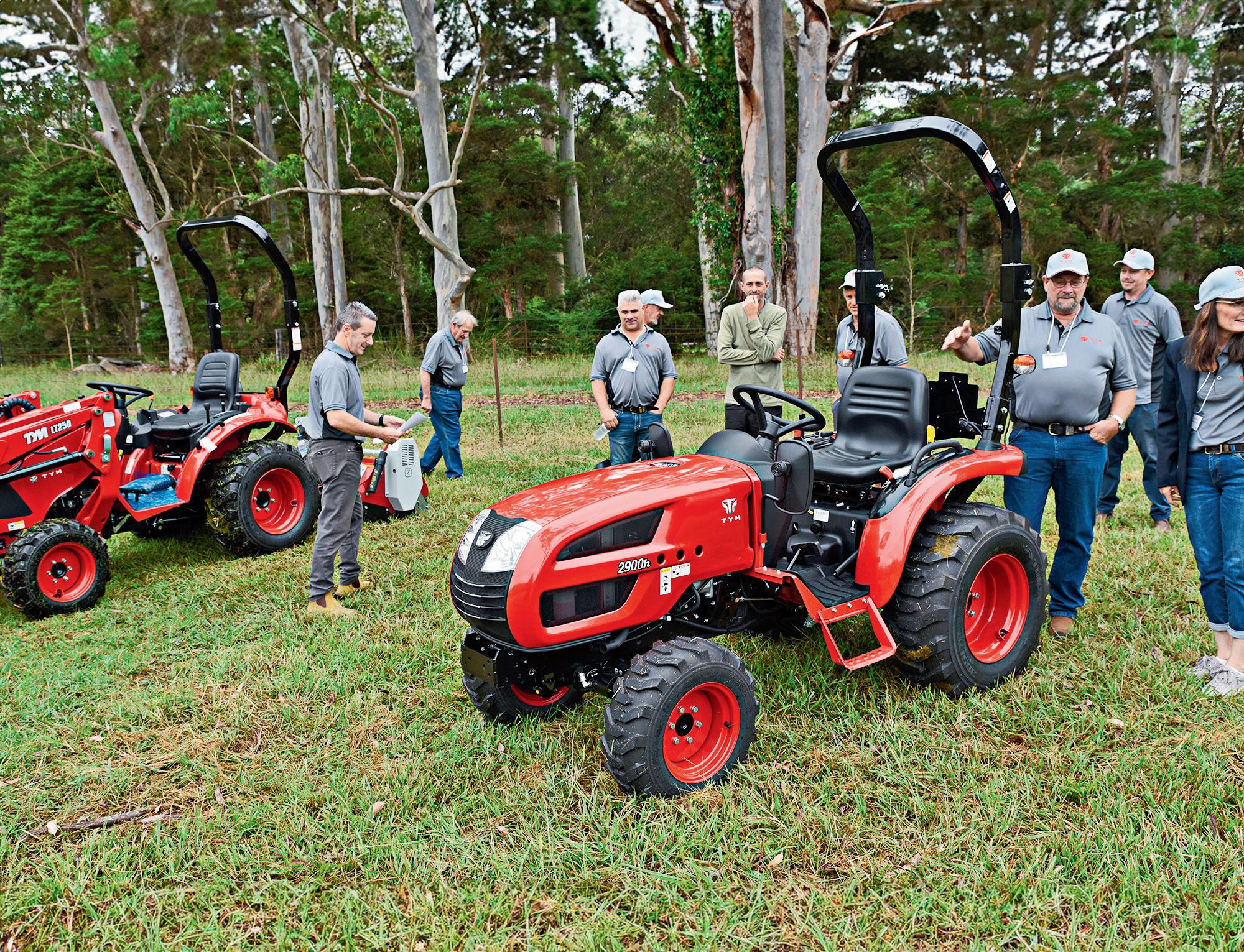
of steps, making them smaller and more frequent.
The steps now occur every 60 degrees of auger angle rather than the previous 90 degrees, which the manufacturer says accelerates the mixing process while using less power and reducing wear on the auger.
Strautmann also has a patented knife adjustment system, and this means the IMS auger can be adapted to specific feed components that need increased cutting in the mixing process, such as straw and complete round bales.
The knives are available in two lengths and their working angle can be set according to whether an aggressive cutting action or mixing is needed.
A mix of knife types and angles can be arranged along the auger flight.
A special mounting position is available for the top auger knife which enables it to more aggressively and quickly break up complete bales that are loaded into the bowl.




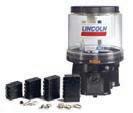


“The stepped design gives fast, low horsepower mixing because the steps lift and loosen the fodder as it mixes, creating a uniform feed ration without over processing,” Strautmann product manager for feed mixing technology Andreas Haggeney says.
“Tests comparing traditional pure smooth spiral augers with the stepped flight auger have showed considerably reduced power consumption with the stepped design.”
The German-built product has performed strongly on Australian farms for over 30 years and is set to go to a new level thanks to the latest upgrades.
Strautmann offers a wide variety of Verti-Mix models with capacities

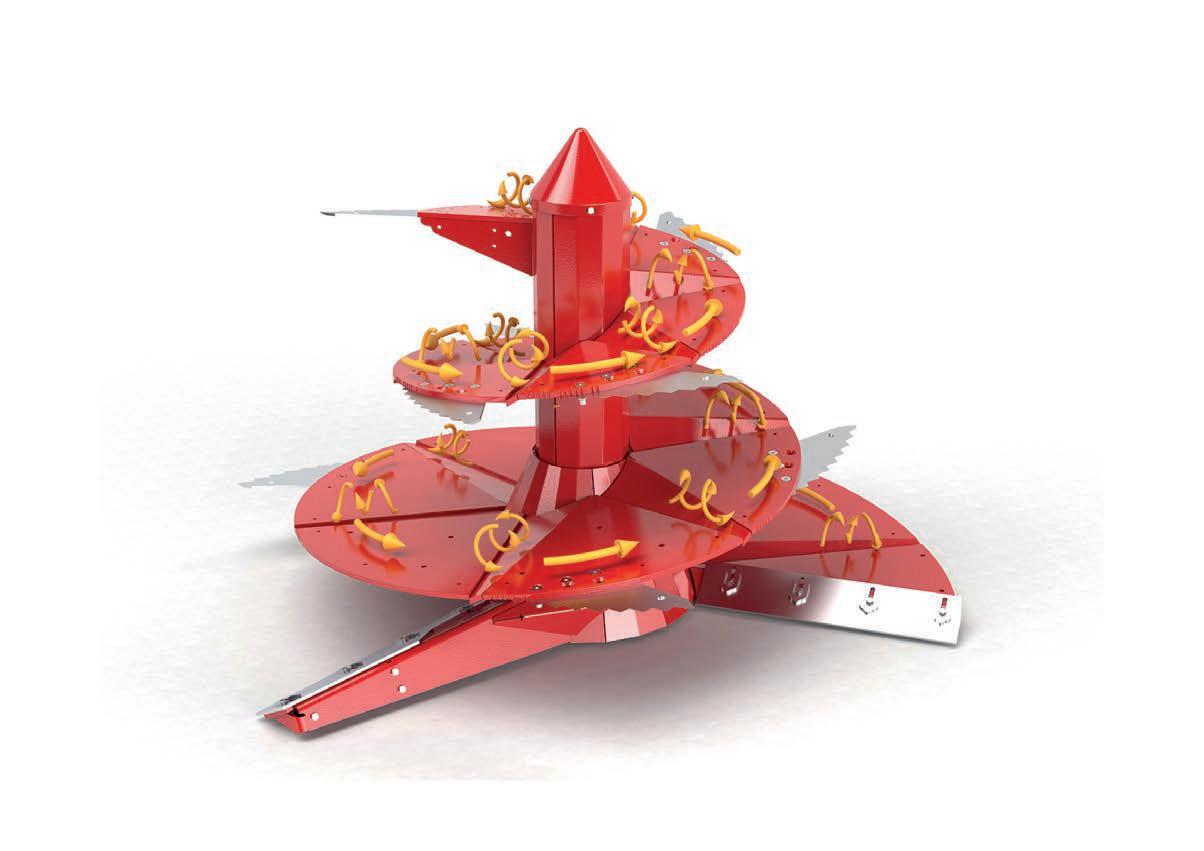
whole herd will benefit from optimum nutrition.
Uniformly mixed feed provides better weight gain, fertility and improved feed




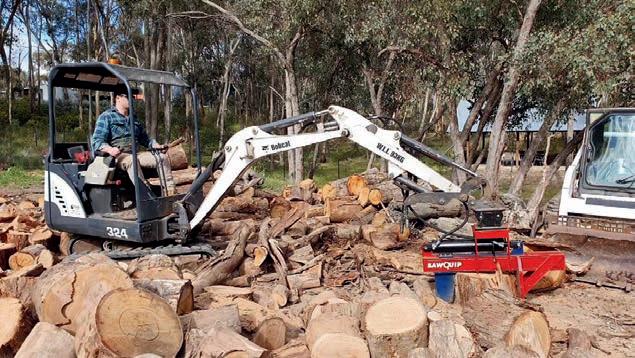
Strautmann’s new IMS auger

Strautmann’s Verti-Mix is distributed in Australia by Inlon, and the full range can be viewed at www.inlon.ag/932.




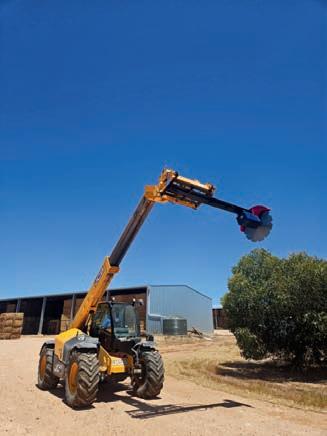

The Cotton Pro 70.10 telehandler is another example of Dieci’s commitment to industry-specific solutions for Australian farmers
Dieci’s philosophy has always been to not only provide versatile telehandlers, but also industry-specific models that suit the unique needs of certain operators.
One such example lies in the Italian manufacturer’s Cotton Pro 70.10.
Carrying around large bales of cotton is heavy work and requires a telehandler with grunt, which is why the Cotton Pro has a 7,000kg maximum lift capacity and a 9.65m maximum lifting height.
As a 12-tonne unit, the Cotton Pro not only weighs in heavier than Dieci’s popular all-rounder, the Agri Plus 40.7, but also its other specialised telehandlers such as the Poultry Pro and Piggery Pro.
The Cotton Pro 70.10 also exceeds these units in terms of its reach and capacity as well, showing it can comfortably handle the big jobs required by cotton producers such as combining bales of raw cotton or spearing hay bales.
All Dieci telehandlers are made in the same region of Italy as Ferrari but are also engineered locally to ensure the end product is perfectly suited to Australia’s tough conditions.
One example of an Australian-specific
addition on the Cotton Pro is the tropical cooling pack, which is added exclusively to local units in recognition of the extra heat faced Down Under.
This is designed to shield the intercooler from cotton, debris and dust, while heat shields around the exhaust pipes help
The engine’s cooling system also utilises a reversible fan to blow any dust and fibres away from the radiator.
A 125hp (93kW) FPT Tier 3 engine powers the unit, which has a 130L per minute hydraulic flow rate. Dieci’s Cotton Pro is available in three steering options includ-
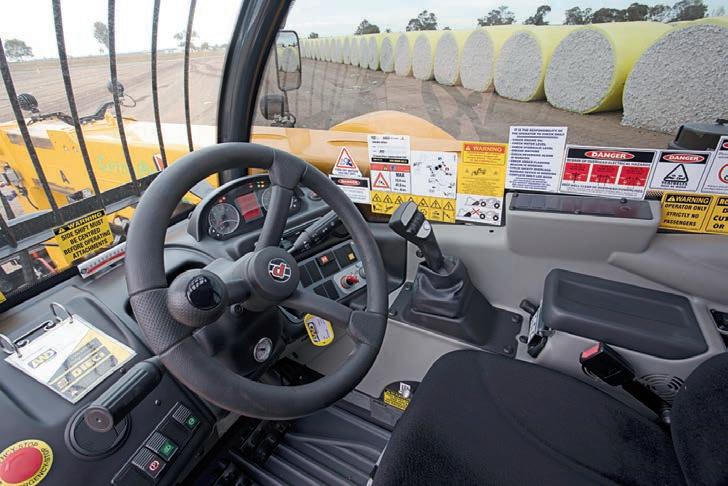

The Cotton Pro’s hydraulically operated telescopic boom is equipped with sideshift that allows the carriage to be shifted from side to side to tightly pack loads.
This means users can move a bale from the front to either the left or right in small increments without needing to move the whole machine. Such a feature adds versatility and ease to an operator’s day, and D ieci has ensured they can do so while also being comfortable.
An Australian-designed air condition ing system is installed in the third-generation cabin, as are a luxurious air seat, excellent thermal and sound insulation and 360-degree views that boost both safety and convenience.

There is continuous oil function on hydraulic sockets, hydrostatic transmission with variable flow pump, plus a patented compensation cylinder inside the lifting ram to ensure the load on the boom is balanced at all times.
Dieci’s telehandlers – including the Cotton Pro – can be customised with a wide array of attachments such as forks, buckets and clamps to ensure they can
perfectly handle whichever tasks a farmer needs done.
“Dieci has dedicated its efforts to ongoing research in cutting-edge technologies within the agricultural, industrial, mining and construction sectors,” Dieci Australia CEO Pat Italiano says.
“The aim is to manufacture fit for purpose telehandlers that are not only
innovative but also prioritise the operator’s needs. This commitment to quality is reinforced by delivering exceptional after-sales support and service across the country.”
The Cotton Pro, along with all Dieci telehandlers, can be viewed online at www.dieciaustralia.com.au

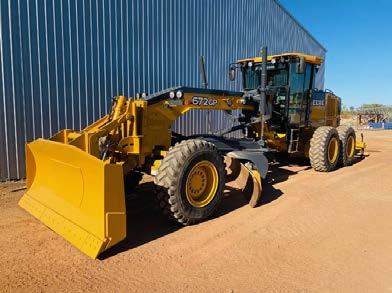
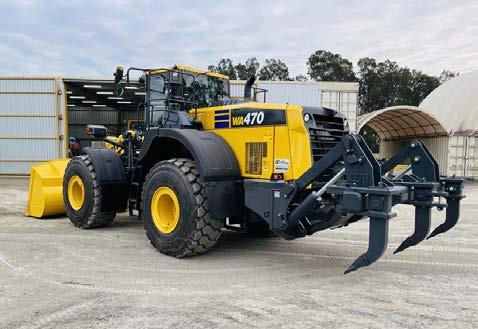



Antonio Carraro’s philosophy has always been to provide solutions to unique challenges faced by farmers.
The Italian manufacturer’s tractors might not be the enormous broadacre beasts aiming to tackle jobs requiring several hundred horsepower, but that is not what they are claiming to be.
Instead, the tractors are focused on the needs of its core market – the horticulture sector – where space is tight and every centimetre counts.
Antonio Carraro’s tractors meet these needs in several ways – by being low enough to fit under branches and narrow enough to fit in between tight rows.
It is this latter factor for which the SRX range of tractors is known, and which Antonio Carraro Australia’s national sales manager Marco Corra says is becoming increasingly popular.
“There are more and more vineyards that are planting narrower rows around that 1.2m distance, particularly in Western Australia as well as in Victoria,” he says.
“When people are adding new lines and new vines into their already-set-up
vineyards, they tend to do it as narrow as possible, while allowing the machines to
“We want to let people know that they can really push their rows as much as 1.2m


There are two main models in Antonio Carraro’s SRX range, the 90hp SRX9800, and the 110hp SRX8900.
While it has evolved over time, the SRX range has been part of Antonio Carraro’s offering for over 60 years.
The larger of the SRX tractors also offers a pressurised cabin for operators which features air-conditioning and sound buffering, but which also remains low enough to be ideal for farmers in horticulture environments.
While the SRX range is designed to be compact and operate in tight spaces, it is certainly not undersized in terms of power or capability.
In addition to the 90hp and 110hp outputs, both tractors have a PTO shaft and 2,400kg lift capacity, meaning they can be used with a variety of attachments.
It is in its attachment capabilities that one of Antonio Carraro’s most unique features comes into its own.
The tractors are reversible, meaning a quick rotation of the turret which houses the driving system allows operators to operate the SRX in the opposite direction - effectively turning a rear implement into a front one and increasing both versatility and visibility.
This feature, Corra believes, contributes to an important part of the winemaking
process and ensures the best quality product - something both farmers and consumers can surely agree upon the importance of.
“Even just when it comes to pruning or de-leafing, you can do the job according to each tree rather than just setting the bar at a certain height and cutting each tree the same,” Corra says.
“The fact you have the reversibility on the tractor means you can adjust your attachment according to the need of each plant rather than each row.
“That benefits the grapes that you’re going to pick from that particular tree and then the wine. It’s all the domino effect of making the best wine really.”
Beyond just winemakers, the SRX is also popular with growers of berries such as blackberries and blueberries.
This is because of the fragility these particular fruits have, Corra says, and their tendency to fall off the tree as soon as they are touched by any machine.
The tractors have an oscillating chassis of 15 degrees, thanks to the manufacturer’s patented Actio, which increases stability and traction.
In addition to offering the Actio, the SRX range has articulation in the centre of the tractor, which removes the need for front steering wheels and therefore pushes the
front wheels closer to the bonnet, thus achieving the narrowest of tractors.
This helps to create a tight turning circle and can be a gamechanger for farmers with only narrow distances at the end of the row to manoeuvre into the next row.
The SRX being articulated means operators can rely on the rear wheels following the path set by the front wheels.
Corra contrasts this setup with that of a car, where the fixed axle creates a different dynamic when turning.
“With a car, for example, where you are fixed and the chassis doesn’t bend in the centre, the rear wheels don’t follow the front wheels and they actually cut the corner a little bit when you turn,” he says.
“With the articulated tractor, you’re following the exact same passage that your front wheels are, so it becomes as a peace of mind that if you are out of the row with your front wheels, you are 100 per cent sure that you’re not going to knock down any tree.
“You’re not going to touch anything, and you don’t have to steer wider to make the turn. This is a major benefit of the SRX and part of the reason why it is so popular.”
The SRX range – along with all Antonio Carraro tractors – can be viewed online at www.antoniocarraro.it/au

AGRICULTURE FARMING EDUCATION WASTE MANAGEMENT RESOURCE MANAGEMENT
CONSERVATION MANUFACTURING RESOURCES
ENERGY HEALTH & SAFETY INFRASTRUCTURE ENGINEERING MINING CONSTRUCTION
QUARRYING AGRICULTURE FARMING EDUCATION
WASTE MANAGEMENT RESOURCE MANAGEMENT
CONSERVATION MANUFACTURING RESOURCES
ENERGY HEALTH & SAFETY INFRASTRUCTURE ENGINEERING MINING CONSTRUCTION
QUARRYING AGRICULTURE FARMING EDUCATION
WASTE MANAGEMENT RESOURCE MANAGEMENT
CONSERVATION MANUFACTURING RESOURCES
ENERGY HEALTH & SAFETY INFRASTRUCTURE ENGINEERING MINING CONSTRUCTION
QUARRYING AGRICULTURE FARMING EDUCATION
WASTE MANAGEMENT RESOURCE MANAGEMENT

SEARCH FOR TOP INDUSTRY TALENT THROUGH OUR JOBS BOARD.
CONNECT WITH ALIGNED CANDIDATES.
BOOST YOUR CHANCES OF FINDING SKILLED APPLICANTS.
SCAN TO CREATE AN ACCOUNT TODAY AND DISCOVER YOUR PERFECT MATCH!


Brisbane Mini Excavator Sales’ new Hercules loaders, graders and telehandlers have arrived, with customers eager to get their hands on the in-demand machines
March has been an exciting month for the Hercules machinery distributor – bringing in a new suite of machines that it says customers have been calling for.
As an expanding company, Brisbane Mini Excavator Sales (BMES) has increased the size of its Hercules farm machinery fleet – providing cost-effective options without compromising quality, such as with its new loader range.
A key staple of the line-up is a new loader model, the Hercules HLM series, better known as the ‘Loadmaster’.
“They’re a new range for customers that want a cost-effective loader that doesn’t lack quality,” sales executive Steven Ragenovich says.
An offshoot of the orange coloured ‘Series 2’ models, the Loadmaster
encompasses a different engine and transmission type but still provides the same Hercules quality.
“We’re getting customers that only want to use a loader for marginal hours, so they want to spend less money,” Ragenovich says.
“The Loadmaster is a cost-effective machine for those wanting to use a machine for these types of hours.”
Images: Brisbane Mini.
BMES offers three different types of loaders – the yellow heavy-duty HD series, the Series 2 models and now the Loadmaster HLM series.
Among the new lines of machines, BMES has also introduced the Hercules H738 telehandler which according to Ragenovich offers a very competitive price when compared to other brands.
With increasing demand from customers, Ragenovich says it became clear that BMES had to start stocking telehandlers such as the H738.

“We’ve been asked by a lot of our clients about telehandlers, so we’ve decided to fulfil their request with these new machines,” he says.
The new telehandler boasts a 100hp (73.5kW) Cummins engine, a seven-metre maximum reach and a rated load of three tonnes.
Sold with load sensing displays and three different steering modes, Ragenovich says the H738 has impressive quality – a common theme of the new models.
The new telehandler comes in with
Also new to BMES’ fleet is its Hercules HG140 motor grader.
With a larger cabin space than most competing brands and a 1.9m height, he says the grader provides exceptional comfort and safety.
“The grader comes with 360-degree bush guards as standard, providing extra safety and protection for an operator in the cabin,” Ragenovich says.
This new machine weighs 18 tonnes
front blade,” Ragenovich says.
Discussing the three new models of machines, Ragenovich says it is a testament to the business’ focus – constantly upgrading and making products better for customers.
As a family-owned business, BMES strives to support its customers and give them the best solutions for their projects, Ragenovich says.
BMES continually caters towards

customer demands and this is why the company is looking at bringing in even more machines.
“We’ve gone to great lengths to keep upgrading our machines over the course of the last 13 years in loader development and other machines, to make our products better and reliable for our customers,” Ragenovich says.
“Clients have asked us about wanting bulldozers that are built by the same factory that supply Hercules Loaders, so we’re going to move into the dozer market eventually.”
With four individual buildings and nearly 20 staff, BMES can sufficiently support its customers Australia-wide.
As a supporting partner of BEEF 2024, about 20 of BMES’ machines will be on display during the event in Rockhampton between May 5-11.
Ragenovich says about 10 of these will be new models, with the HLM Loadmaster, H738 telehandler and the HG140 grader all planned for showcasing.
For more information on BMES’ new Hercules machines, visit bmesales.com.au or call 07 3807 4333.






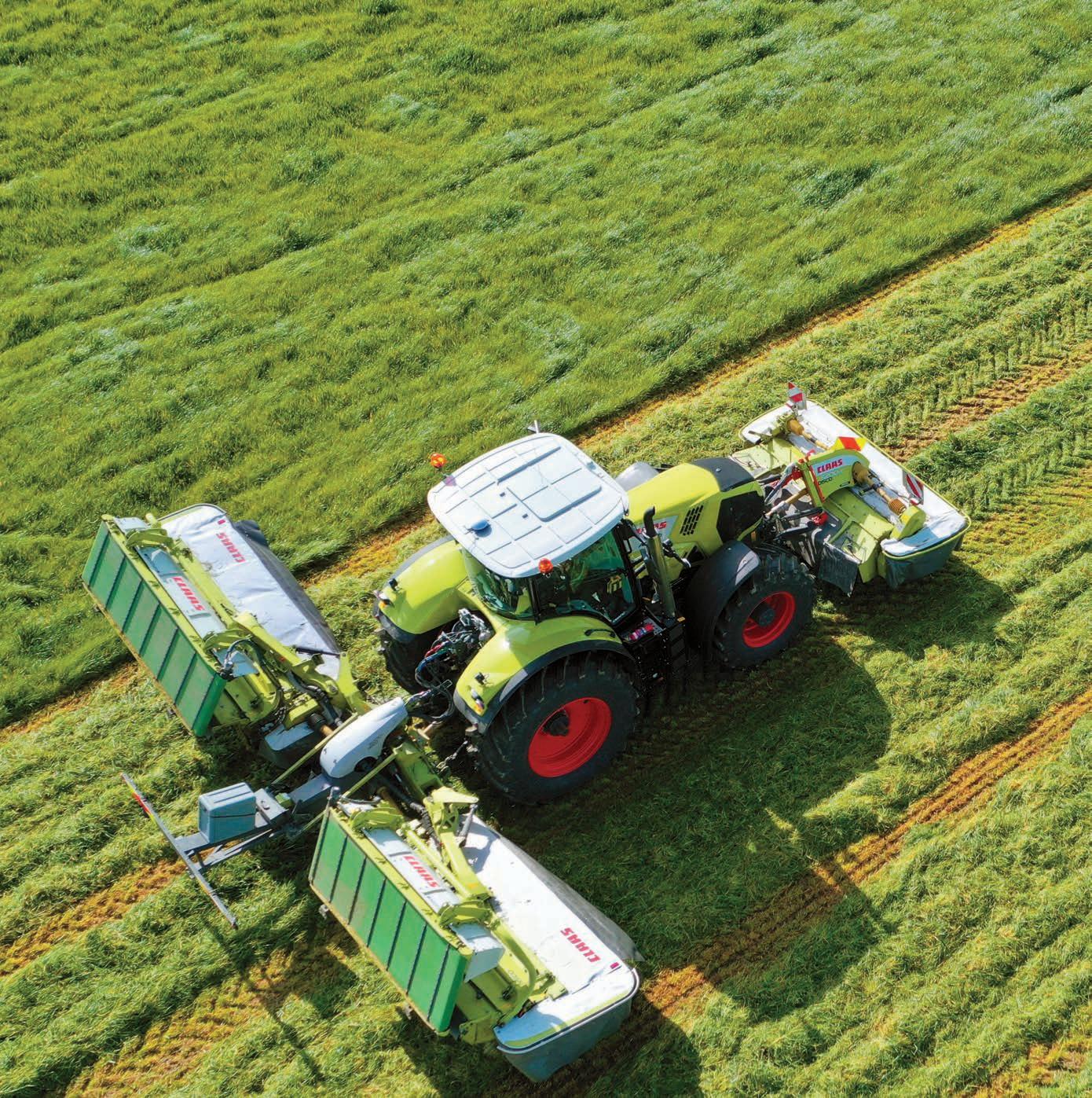
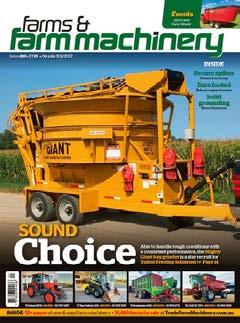

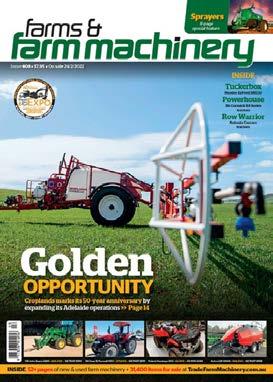


Slow start to 2024’s tractor sales but areas of strength show reasons for overall optimism

January saw a rather subdued performance for tractor sales, however a spike in large tractor sales was experienced thanks to demand in Western Australia.
Overall, about 650 units were sold for the month nationwide compared to around 800 units in January 2023, when the industry was still benefiting from the Federal Government’s Temporary Full Expensing Program.
This picture reflects an ongoing return to normal trading conditions and while it is always challenging making predictions from one month’s trading, the general outlook appears less pessimistic than may have been expected.
As was the case last month, while the unit numbers may have been down compared to last January, the dollar value was up.
In dollar terms, January 2024’s sales were 48 per cent stronger than January 2023.
Falls were experienced in all machine categories except for the 200hp plus (150kw plus) range.
This category, which was also up last month, jumped this time by an incredible 158 per cent compared to the same month last year.
Much of the activity for larger tractors
continues to occur in WA where major fleet replenishments appear to be underway.
Elsewhere, the small, under-40 hp (under 30kw) category was down by 35 per cent for the month.
This ‘leisure’ market has long been considered susceptible to interest rate rises and subsequently manufacturers appear to be responding with interest rate specials and other incentives to try and stimulate demand.
The 40hp to 100hp (30-75kw) range was also down by 33 per cent compared to January 2023.
Lastly, the 100hp to 200hp (75-150 kw) category was down by 13 per cent.
Looking at each state, it is unsurprising that Western Australia reported a big lift in January.
The west was up 29 per cent on the same time last year and was one of only two states to report an increase along with South Australia which was up 11 per cent.
Queensland was down 16 per cent against the same month last year, while New South Wales was down 32 per cent and Victoria was off 12 per cent.
Tasmania was off 56 per cent for the month with sales in the Northern Territory finishing 47 per cent down.

Sales of combine harvesters began with a trickle in January, as always, and we should soon get some insights into the full year forecast as dealer order books begin to finalise.
Baler sales have continued their up and down run, up 40 per cent on January last year, and sales of out-front mowers were up by around 47 per cent in the month.
This year’s TMA conference is scheduled to take place on Thursday July 18.
It will be held at the iconic Melbourne Cricket Ground, a venue the association last visited in 2017.
Details regarding the event will be announced during the next few months with ticket sales likely to commence in April.
This promises to be another great event so please save the date.

New emissions standards for new light commercial vehicles sold in Australia could threaten the ute, and offer a new opportunity to the Opposition, Trevor Whittington writes
Did anyone else notice the announcement, dropped just before Christmas, of the new emissions rules that will impact sales of most of the popular utes, SUVs and 4WDs that farmers and tradies rely on?
In case you missed it, the Federal Government has announced plans to impose the Euro 6 standard as the minimum for all light commercial vehicles that are sold by the end of 2025.
Euro 6 is the sixth standard for exhaust emissions, it came into play in Europe in 2015, with Australia moving to adopt it in 2026. Australia adopted Euro 5 standards back in 2009.
For a diesel to be Euro 6 compliant, it cannot emit more than 80 milligrams per kilometre of NOx gases, while a petrol car can emit no more than 60mg/km.
Not only do the new standards cull out most big engines, but in parts of Europe where the local council has set a clean air zone, any vehicle that does not have a Euro 6 engine is subject to a daily charge of around $20 – something that will no doubt warm the hearts of our progressive councils with enthusiasm for renewable vehicles.
But it does not end there.
Europe has just signed off on the Euro 7 standards which are coming into force from July 1, 2025, which cuts diesel cars down to the same level as petrol at 60mg per kilometre.
This means big diesel utes are on their way out across Europe, as only vehicles
with small engines and more expensive exhaust particulate filters will meet the standard.
Already, a number of global manufacturers have announced they will soon end the development and manufacture of the next generation of new combustion engines.
This means that small city hatches are on the chopping block, as the engine technology they use has not kept up with the new standards. It also means that other sportier cars are also on death row as their engines are too big and powerful, which equates to higher emissions.
With Euro 7 forthcoming, the business case to even keep building internal combustion engines becomes less viable by the day, closing the door on the European car industry and opening the door for new, cheap imitators.
In its wisdom, our government has set us on the journey to follow the Europeans and legislate big engine cars off the road, which is crazy brave politically, when the top three selling vehicles last year were all utes, Ranger, Hilux and DMax.
This is the problem when the decision makers live in Melbourne, Sydney and Canberra far from the reality of the commuting tradie or farmer, both of which need utes as a tool of the trade.
The new fuel efficiency standards the government has adopted is specifically targeted at driving SUVs off the road, with the Euro 6 emissions allowed to progressively reduce from 199g/km in 2026 to 81g/

km in 2029. That’s a 60 per cent reduction within five years, with none of the currently existing utes meeting the target set for 2030.
While the big utes with big engines won’t be banned from the road, carmakers will be fined about $100 for every gram of carbon per vehicle their fleet exceeds the threshold from 1 January 2025.
There will be a credit-trading system, with suppliers who beat the targets able to trade credits with those who fall short, but few will be in a hurry to trade credits as all manufacturers will be scrambling to drop their average emissions across their fleets.
Motor vehicle commentators are saying that the new fuel efficiency standard could force half of all new car sales to be electric by the end of the decade.
The decision by Albanese reminds me of Bill Shorten’s mad emissions target that he announced ahead of the 2019 election that also was aimed at big SUVs.
At the time the green left within the ALP got very excited but Shorten quickly dropped the policy when he looked at the polls which were responding to the “Short-

en wants to end the weekend” campaign run by Morrison.
This time round Albanese is trying to sell the upside of having an e-ute by claiming that the cost-of-living saving is $1,000 a year in fuel, while quietly ignoring the depreciation and cost of buying a $90,000 Chinese-made eLDV vs $50,000 for the diesel version.
The Chinese car manufacturer doesn’t care which one you buy, they will make and sell you either, but battler Bluey from the bogan boonies might not be too happy when told that while his aspirational dream vehicle – a RAM V8 5.7 Hemi or Landcruiser 79 series V8 – may no longer be sold, but he can always aspire to own a Chinese made e-ute.
This is political gold for the Opposition.
To meet the targets, manufacturers will have no choice but to drop models or push up the process to encourage buyers to select smaller or electric vehicles out of their fleet.
Dutton has the opportunity to wedge the government by accepting the standards for non-commercial vehicles, but arguing that any ute registered to a


business should remain with Euro 5 until there is widespread access to electric vehicle charging stations across regional and remote communities – something that is decades away.
The Opposition should also hold the line and say Euro 7 will not be introduced under their watch. Rather, they will let the market drive the take up of electric vehicles by offering tax incentives for homeowners and businesses to install electric chargers and batteries linked to solar at home.
This is a win-win, as it leaves tradies and farmers to buy the vehicles that best suit their circumstances while offering a carrot to homeowners to install home infrastructure for electric vehicles – which might attract a few Teal voters back to the Liberals as they love taxing the poor for their own personal benefit.
Without a viable alternative policy that rolls back the Euro 6 standards on utes and prevents the introduction of Euro 7 standards, we are looking at the end of an era of the ute as part of our culture.



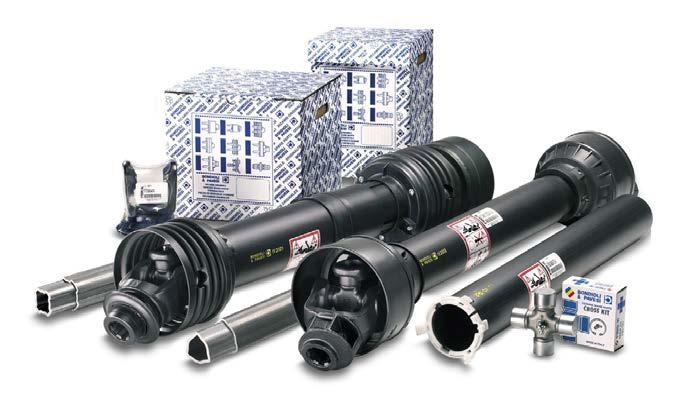

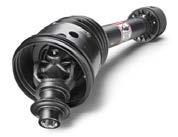

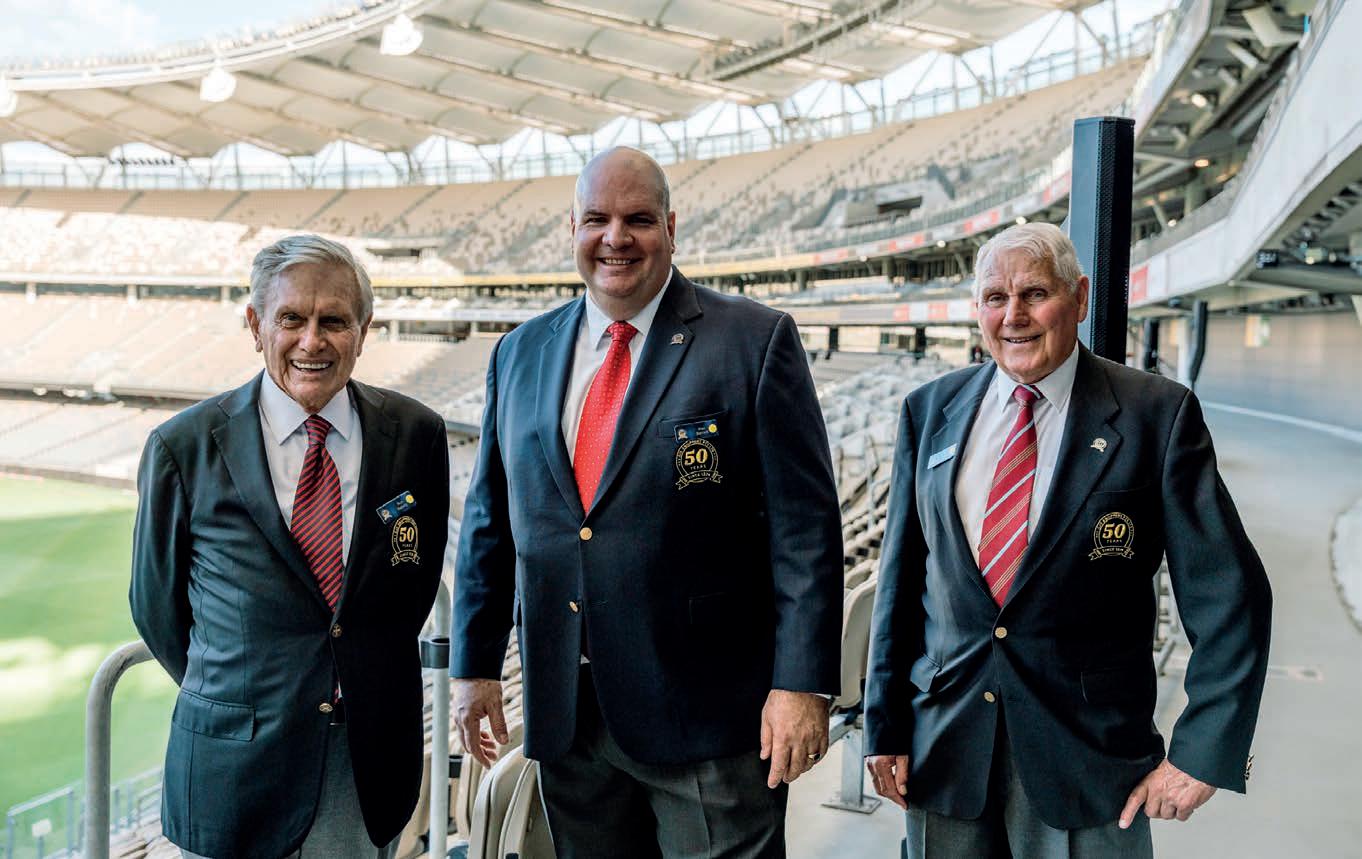
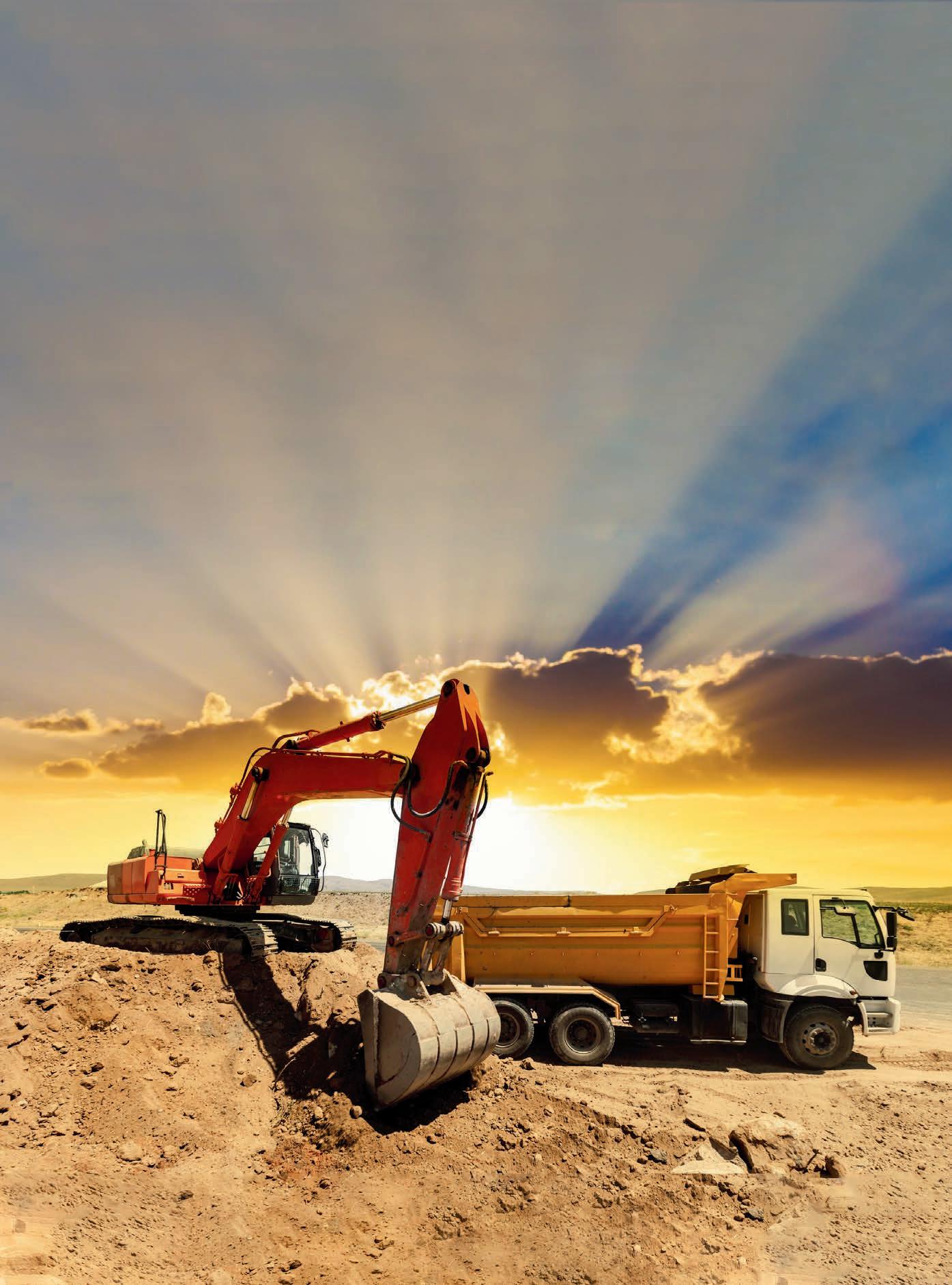








The loyalty, commitment and ethics of the people behind CJD Equipment have helped shape the collective spirit of the company, which has contributed to its growth and development for more than 50 years
When Chamberlain John Deere sold off its dealerships around Australia in 1973 to focus on manufacturing, two enterprising sales executives within the company saw an opportunity too good to pass up.
Ron Rafferty and Rob Jowett – work colleagues who had spent their early careers with agricultural equipment maker Chamberlain Industries before John Deere took over – made the leap of faith to purchase the WA dealership and start up a business in their own right.
The result was CJD Equipment, which began operations in February 1974. And the rest, as they say, is history.
Today, half a century on, CJD is regarded as one of the country’s leading distributors of construction equipment for the resources, civil, agriculture and forestry sectors. The portfolio includes world-class brands such as Volvo Construction Equipment (CE), SDLG, Kenworth, DAF Trucks, Isuzu and Fuso.
Still headquartered in WA, the company has spread its wings to 23 branches nationwide, many of which also serve as parts and service support outlets for every product the company sells. It’s among the top 100 listed private companies in Australia.
To celebrate the milestone, CJD held a gala celebration at Perth’s Optus Stadium in February, attended by more than 400 past and present staff, guests and representatives of the core manufacturers of the equipment that fill the company’s display yards.
Rafferty, now CJD Executive Chairman, talks of the pride he and Jowett have in
building the business up from its humble origins.
“CJD started with 28 employees and turned over $4.5 million (in 2023 dollars) in its first full year. Today, it has about 600 employees and brought in nearly $1 billion in sales revenue for the 2023 calendar year,” he says.
“Our success can be attributed to three main factors: determined leaders, committed employees, and the global brands we stock.
“The company’s leadership continues to maintain the family-oriented atmosphere
in the great lengths of time so many employees choose to stay with CJD.”
This connection is exemplified right from the top. Rafferty and Jowett have been in partnership now for all those 50 years and been personal friends for more than 60.
In 2008, they passed on the management reins to Alan Barnett, who first joined CJD in 2001, and remains at the helm today as Managing Director.
Jowett reiterated that the company’s growth and achievements were “due to the quality of the people that we’ve
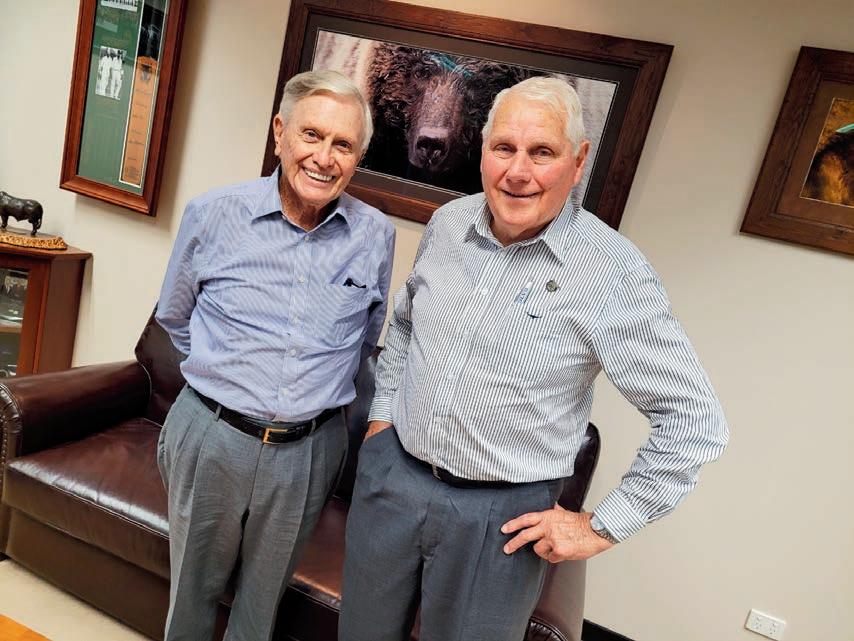

“We’ve been very lucky. We’ve had some wonderful people come along on this journey with us,” he says
“And it has been a memorable journey. When we began, we were of course selling Chamberlain and John Deere equipment, before establishing farm equipment dealerships throughout Australia, while still continuing with this business in WA. And we were selling enough to make the business very successful.
“Very early on, we acquired the White Truck franchise for WA. When they went bankrupt, we were very fortunate to be able to pick up Kenworth trucks in WA, and a little while later we became the Australian distributor for Volvo Construction Equipment, where we are the importer, the wholesaler and the retailer.”
Jowett says the industry has seen a cavalcade of businesses come and go during the five decades.
“There isn’t one of those original truck and construction equipment businesses in existence in the way we used to know them. CJD is the exception,” he says.
“We’ve always been at the same address, doing the same thing, all the while expanding our offerings and adding other locations.”
Rafferty says the future for CJD holds great promise.
“Not only do we have a great team of people, but we are also very fortunate to represent some of the best world’s brands,” he says. “And with names like that, you can’t help but attract other good people to the company.
“As a company, we are always exploring opportunities to grow. Our longevity is testament to the principles and core values that have always driven us, underpinned by our people.
“We look forward to the next 50 years of CJD Equipment.”
Barnett said he was privileged to be able to build on the foundations laid down by Rafferty and Jowett.
“I’ve been Managing Director for 15 years and the time has flown by,” he says.
“As we continue to grow, the key is to ensure that our people always feel part of the CJD family.
“We need to grow organically through improved performance and best practice. We need to grow by acquisition.
“We need to review our branch network continually to ensure we provide the highest levels of service to our customers. And we need to look for business opportunities that will enable the entire group to grow, not just for the company, but also the staff and their livelihoods.”
There’s no doubt that CJD’s acquisition of the Volvo CE franchise in WA in 1992 has been a major stepping stone towards its climb to its current heights.
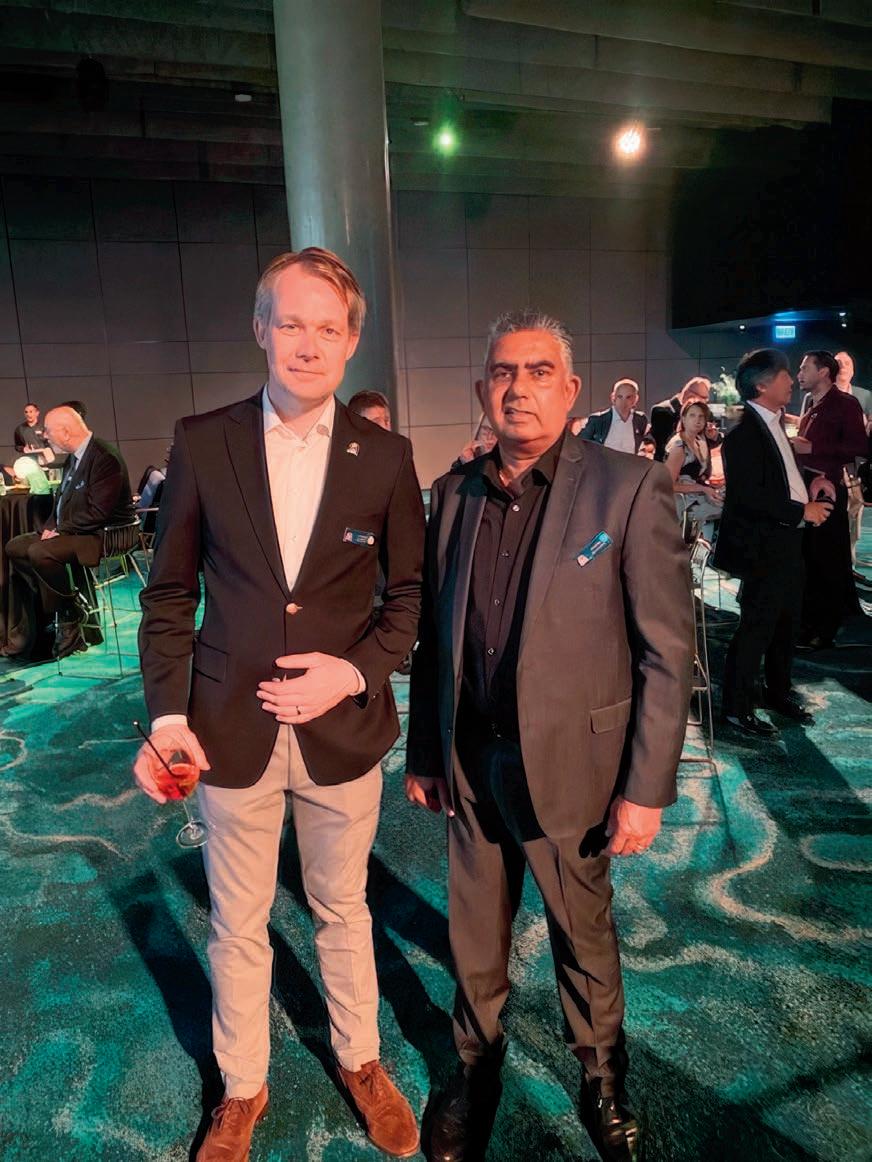
Less than 10 years after the agreement, the company had taken over as national importer and distributor for the entire Volvo CE business in Australia.
Now, almost 32 years later, the working
association is rock solid, with the partnership continuing to reap dividends for both parties.
Volvo CE Head of Region International, Joakim Arndorw, flew in from Sweden to visit several CJD branches throughout Australia, a trip culminating in the 50th anniversary celebrations in Perth.
“Volvo has been very happy with the relationship and that’s why it’s still continuing,” he says.
“We have always looked at Australia as a market where we can develop the product better, we are always after feedback to improve.
“The machines that Volvo sell are tested for all the environments that they are being used in. Australian customers can be assured that the machines have been thoroughly trialled in local conditions.
“Australia has some of the harshest conditions in the world, from heat to remoteness to dust, and we regularly test our products so that customers know they’re cared for and thought of that way.
“We sell about 800 units in Australia annually – articulated haulers, crawler excavators, wheeled excavators, wheel loaders, road machinery – and we’re constantly improving our machines. I think we have the best in the business.
“And it’s important to have really good partners like CJD that take care of the machines when they are in the market being used by the customers. Because I think to be successful you need to have good products but also have good support.”
Joakim says that while Volvo continues to innovate and improve traditional engines, its big focus moving forward is on sustainability and the development of electric mobility machines.

It’s the next step forward in Volvo CE’s ambition to reach net zero value chain greenhouse gas emissions by 2040 –alongside development of hydrogen fuel cell solutions and more sustainable internal combustion engine products –and is part of Volvo Group’s target to have at least 35 per cent of its sales of vehicles fully electric by 2030.
“That means that by 2040, all new sold Volvo Group products shall have net-zero emissions,” Joakim said.
“So our target is to sell 35 per cent electric machines by 2030 and we have taken the first step here now in Australia, by launching electric compact excavators and electric compact wheel loaders, which are being tested at the moment.”
Using them is relatively simple, Joakim says.
“You can either charge with a fast charger or with a regular power socket
for the smaller machines,” he said.
“There’s still a lot of development going on in this area when it comes to battery management and battery capacity, but this will happen fairly quickly.
“We’re moving to being solution providers: the days of just selling a product are changing. We’re trying to provide the complete solution to customers for them to reduce their emissions and not just for the product, but for them.
“Our customers need full servicing operations, package support, the data connectivity; and it’s information that we can provide to help them be more efficient, and get the right product offering.”
Joakim said CJD’s 50th anniversary was an achievement worth commemorating.
“When you have done 50 years, it’s important that you celebrate that, because it’s a really good achievement. And the
dinner event showed how proud the people and the employees of CJD were to work for the company and to carry the Volvo brand,” he says.
Barnett says CJD works well with Volvo because they share the same goal and desire.
“Partnerships that have the same vision achieve greatness together. There’s always the ups and downs over the journey, and with Volvo, we built not just the working relationship, but friendships, and I think that’s the other thing that comes out of it,” he says.
“It becomes very personal. It’s not just a job. It’s not just a business. It’s not an e-mail relationship. That makes a difference because we care.
“We represent ourselves to the customers. We’re one together always. You know we can’t do it alone. And Volvo can’t. But together we can.”

Wimmera Machinery Field Days celebrated a milestone in style, with plenty of machinery for visitors to see earlier this month
Thousands of visitors went through the gates for the milestone 60th year of the Wimmera Machinery Field Days earlier this month.
Held at Longerenong near Horsham in western Victoria, warm weather greeted crowds as they attended between March 5-7.
Wimmera organisers also presented awards during the second day of the event.
Agrimac was judged as the best agricultural machinery outdoor site, while John Shearer’s Mk4 seeder bar won the prestigious machine of the year prize.
Here is a selection of what exhibitors were displaying at Wimmera:
John Shearer
Occupying pride of place at John Shearer’s stand, even before its machine of the year win, was the Mk4 seeder bar.

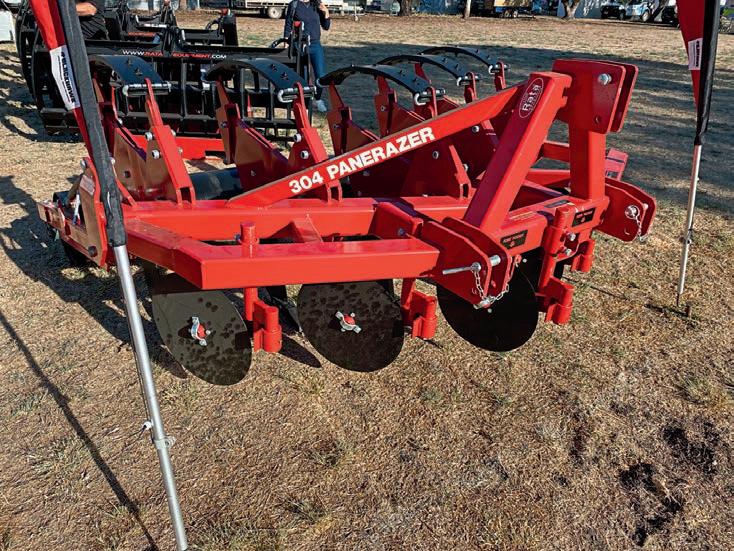
For Victorian multi-brand dealership Greg Allan Farm Machinery, field days always mean a diverse selection of machinery is on display.
At Wimmera, two of the standouts were a Mandam disc harrow and a Valtra tractor.
Manufactured in Poland and Finland respectively, these two products are just a small selection of what is available through Greg Allan.
Rata
In addition to its popular Power Claws, there was also a Field Wave 304 Panerazer on display at Rata Equipment’s stand.
Described as the manufacturer’s most popular model in the subsoil aerator range, it has an innovative double-V frame design to allow users to pull more with less horsepower.
Crowds at the opening day of Wimmera earlier this monthRobust construction makes it ideal in tough conditions, while shin guards give clean results while cutting through the soil.
It works to a maximum depth of 450mm while offering five, seven and nine leg models with working widths of 2.5m, 3.5m and 4.5m respectively.
Michaels Group
As a JCB dealer, Michaels Group had a wide selection of the manufacturer’s tractors and telehandlers available.
The latter is growing in popularity on Australian farms, and the 560-80 AgriPro telehandler was one model available for Wimmera visitors to see.
Capable of 145hp (108kW) and with a 5,500kg maximum lift capacity and 7.9m maximum lift height, this is a telehandler which can handle agricultural grunt work.
An EcoMAX engine improves both power and productivity thanks to producing torque and power at low revs, lessening the strain on the engine and overall fuel consumption.
Jadan Group
The tried-and-tested Big Bale Stacker was prominent for Jadan Group during the event.
Manufactured in New South Wales, the stacker is robust and sturdy and designed to provide a reliable and no-nonsense operator experience.
It works by collecting bales through two grab arms at the front, where it is then tipped and slides gently down the track, before eventually placing the collected bales into a neat stack.
Depending on the bale’s size, it can handle stacks of either four or six bales.
Bourgault
The Canadian manufacturer is celebrating 50 years in business, and a
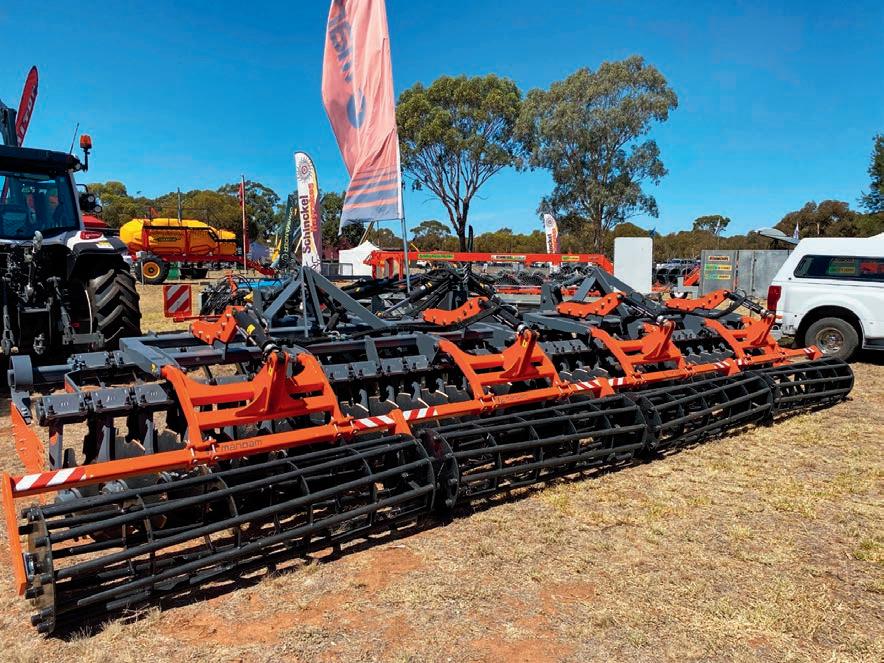
special anniversary decal was present on a machine it displayed at Wimmera.
The 8450 Air Cart, which forms part of the 8000 Series, was the machine in question, named for its capacity of 450 bushels (15,800L), with this capacity split across four tanks.
Both leading and trailed models are available, with three different sizes in each category, making this an ideal machine for farmers needing decent size without the enormity of Bourgault’s larger 9000 Series.
Goldacres
Sprayer manufacturer Goldacres showed off its latest G4 Crop Cruiser Series 2.
The Crop Cruiser has a 4,000L tank capacity and a variety of boom sizes up to 36m.
It can be fitted with the Ballarat-based manufacturer’s Weedetect spot spraying system, which involves cameras being positioned every 3m to detect and target weeds.
Other features of the 200hp sprayer include Goldacres’ G-Hub integrated system and Fast Fill, plus a cabin with reduced noise and multiple wheel track options available to reduce crop damage.
O’Connors
Local Case IH dealer O’Connors showed off the FD241 FlexDraper by MacDon.
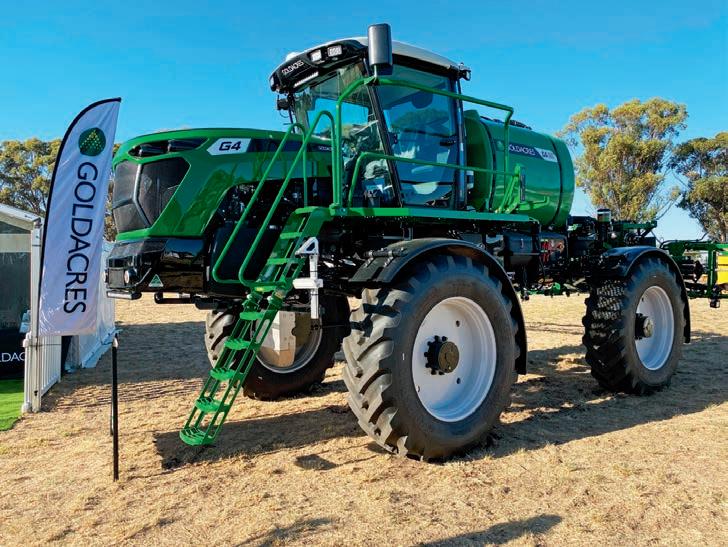


This unit forms part of the FD2 series, which offers both rigid and flexible cutterbar configurations, variable cutting speeds and a wide range of cutting widths.
A full suite of Case IH machinery – including both small and large tractors – was on display at the O’Connors’ site, continuing a busy time for the dealership group which was sold late last year to USA-based Titan Machinery.
Agrimac
Victorian dealership Agrimac won the best agricultural machinery outdoor site at Wimmera.
Supported by staff from its brands Kubota and Krone, there was plenty to see across the site.
One machine on show was the Krone BiG Pack 1290 HDP II (XC).
This large square baler is an eight double-knotter and has been refined since its release.
Krone says this model matches its BiG Pack 1290 HDP HighSpeed for density, while producing up to 70 per cent higher throughputs at the same ground speed.
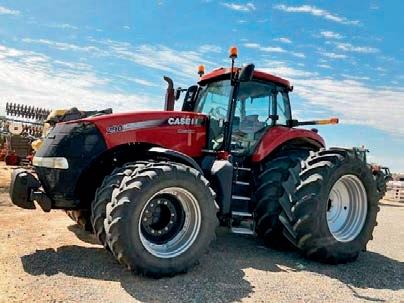

Vennings showed its new 12-inch diameter augers at Wimmera
Emmetts
John Deere dealer Emmetts had plenty of the manufacturer’s offerings on display.
One highlight was the 8RX 370 fourtrack row crop tractor.
Capable of producing 370hp (276kW), this tractor also has a 9.0L PowerTech engine, the choice of e23 PowerShift or infinitely variable transmission, plus a spacious and comfortable cabin.
A range of track widths and tread
CASEMAGNUM290
Oneowner,lowhours, Dualsallround,3PLand PTO,inexcellent condition,GPSfitted.
S49. TA1205614. POA
settings is available to add versatility and suit individual needs, while row spacing options are available for all track widths.
Geronimo
A 62-foot (19m) land roller from Riteway was prominent at New South Walesbased Geronimo Farm Equipment’s stand.
The land roller is designed to help germination by effectively rolling rocks
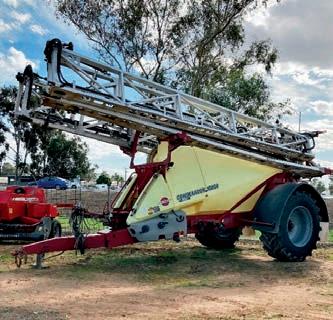
HARDICOMMANDER
10000LTR
45maluminiumboom isobus,oneowner,in excellentcondition,will beworkshopserviced.
S47. TA1174680. POA
into the ground without rolling the crop out ahead of it.
Widths are available between 12-foot and 89-foot (3.6m to 27m) and rollers are available in one, three, five or seven sections.
All Riteway land rollers also fold up for easy transportation.
Agribin
Another Australian-made product on display at Wimmera was Agribin’s grain lick feeder.
This is a new addition to the manufacturer’s offering and is designed for 100 per cent grain and pellets.
It has a deep trough to prevent wastage, folding weather verandahs and an easily adjustable flow rate.
The feeder measures 2.44m long, 1.22m wide and 1.6m high. It has a 2,600L volume with feed capacities varying depending on grain density.
Vennings
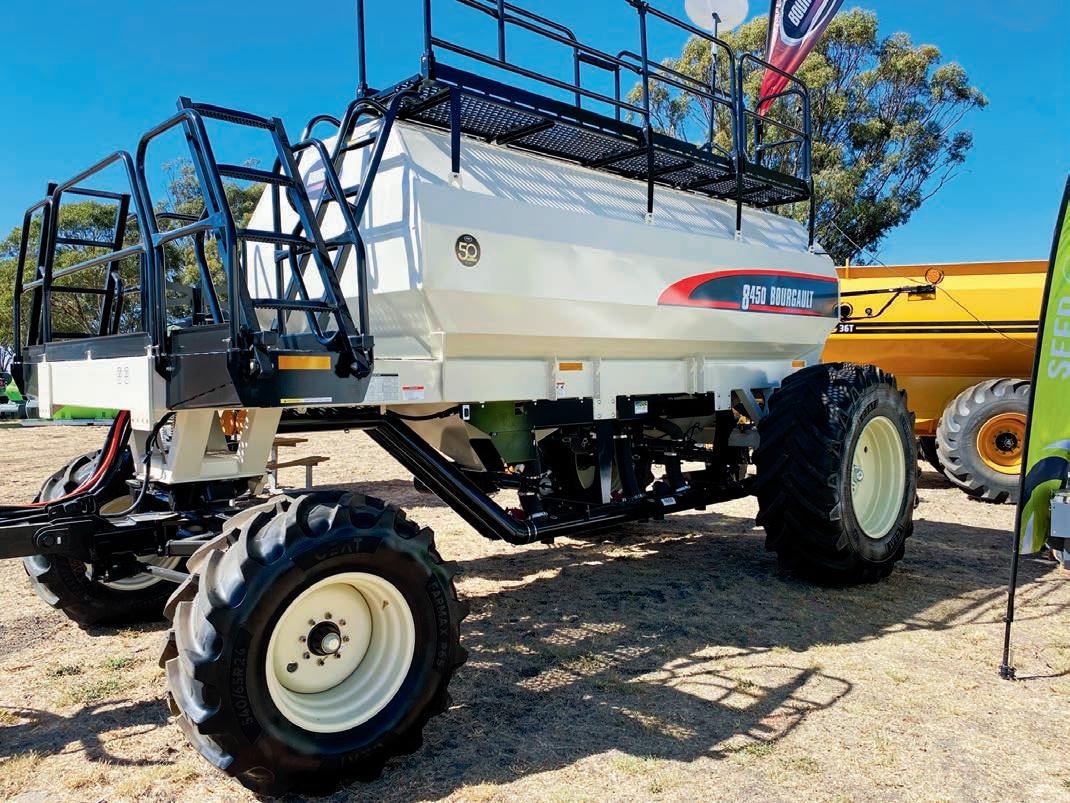
augers during Wimmera.
South Australian grain handling equipment manufacturer Vennings showed off its range of self-propelled



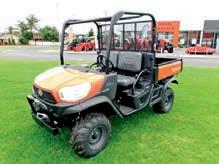

$44,990
KUBOTA RTV-X900G-A In stocknowonly 100hours,ATV tyreS,3-cylinder diesel,2range Hydrostaticdrive .S789. TA1206823.
KUBOTARTV520
Variable Hydrostatic Transmission,2 cylinderKubota engine .S791. TA1207848.
Soaring high into the sky, one major addition of note was the introduction of a 12-inch (30cm) diameter.
This is now the largest diameter in Vennings’ range, which previously only
had 9, 10 and 11-inch models available.
All models have 35, 42, 50 and 60-foot varieties (between 10.5m-18m), giving customers a variety of sizes to choose from.
Chaser bins were among the other products being shown by Vennings.
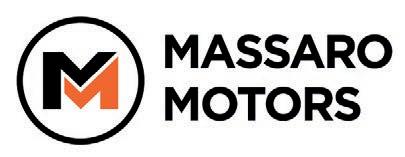
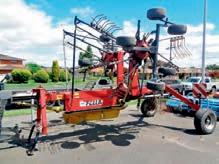
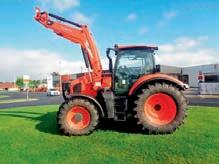

FELLATS671 FellaRake,Good workingcondition, 6.6MWORKING WIDTH.S664. TA1155500. $15,900
KUBOTA M7152STD DELUXE 2023, 150hpdiesel engine,50k powershift transmission. S759. TA1190033. $218,000
KUBOTA
MX5100HD Brand newenginefitted 3rangehydrostatic Powersteering Cat2linkends. S774. TA1202416. $44,990
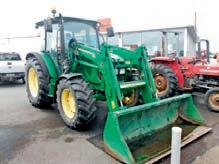
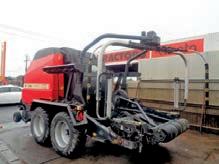
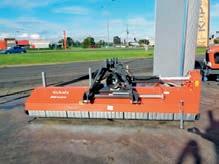
JOHNDEERE
5080R 2009, 16-speedfour, speedpowershift transmission. S787. TA1205524. $64,990
VICONRV2160
2008,low29000 bales,bale wrapper combination,wide pickup.S615. TA1134225. $37,990
KUBOTASE4325
2022,InStocknow, frontandrear connect,540/1000 rpmunit.S639. TA1143676. $23,058
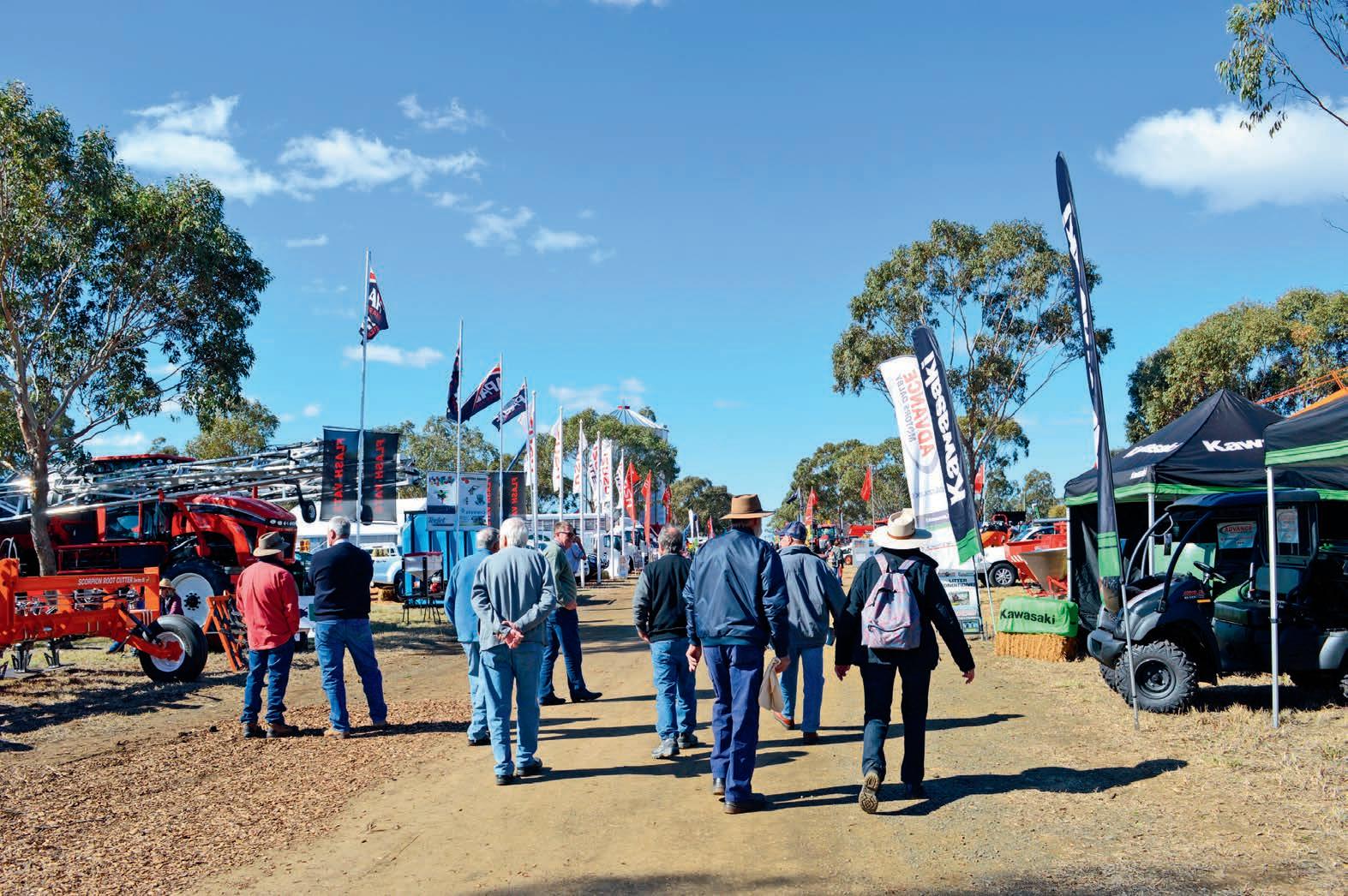
Here are upcoming field day and agricultural events for 2024. Information was current as of going to press.
First held in 1823, the Sydney Royal Easter Show is Australia’s largest annual ticketed event, attracting over 850,000 attendees on average. Revenue generated by it allows the RAS to invest in agricultural programs, competitions, education, youth and rural NSW.
When: March 22–April 2, 2024
More info: www.eastershow.com.au
For more than half a century, Farm World has been providing patrons the opportunity to get up close and talk with experts in the field, learn all there is to know about farm animals, and purchase some great products and farm machinery direct from the manufacturers and suppliers spread across up to 100 acres in Victoria’s Gippsland region.
When: March 22-24, 2024
More: www.lardnerpark.com.au/ farm-world
– Murray Bridge East, SA
The Karoonda Farm Fair is an annual two-day event local, state and interstate farming and general interest products, services and events. With over 300 exhibitors each year, and crowds of around 7,000–10,000 over the two days, Karoonda Farm Fair caters for everyone.
When: April 5-6, 2024
More Info: www.farmfair.com.au
An iconic event on the East Gippsland calendar, this Bairnsdale-based field day has proudly been run by the Lindenow Lions Club since its inception in 1986. With over 350 exhibitor spaces and
numerous quality promotions at the Field Days, East Gippsland is one to see.
When: April 5–6, 2024
More Info: www.egfielddays.com.au
Held in the heart of Victoria at Kings Park, Seymour, the Expo features approximately 500 exhibitors and attracts 20,000 visitors across three days. Explore the latest technology, practices and trends in small and backyard farming, visit the animals and enjoy the market style shopping, food and entertainment.
When: April 12-14, 2024
More: www.seymourexpo.com.au/
Diesel Dirt & Turf Expo is a familyfriendly event designed to boost the Western Sydney construction boom – showcasing the biggest range of earthmoving machinery dealers, earthmoving attachments, trucks, bikes, utilities, mowing equipment and more.
When: April 12–14, 2024
More:
www.dieseldirtandturf.com.au
In its inaugural event, the FutureAg Expo will bring together exhibitors with cutting-edge agritech solutionsfrom precision farming to AI-powered analytics and robotic automation. With interactive demonstrations, expert-led panels and presentations and many networking opportunities, FutureAg 2024 will be a ground-breaking event.
When: April 17-19, 2024
More info: www.futureagexpo.com.au
The Toowoomba Royal Show is an unrivalled production of the very best in entertainment and agriculture displays on the Darling Downs since 1860. Every year has new entertainment so bring the whole family and enjoy world class acts, competitions and exhilarating rides in sideshow alley.
When: April 26–28, 2024
More info: www.towoombashow.com. au/royal-show/
Organised by the Coffs Harbour Show Society, the Show has trade exhibitors as well as competitions and rides.
When: April 26-28, 2024
More info: coffsharbourshowsociety. com.au/
Agfest is a multi-award-winning event and offers an excellent opportunity for your business to showcase its products to thousands of people. Operating for over 35 years, Agfest is a Tasmanian success story that injects millions of dollars into the local economy annually.
When: May 2-4, 2024
More Info: https://www.agfest.com.au/
Tocal Field Days showcase a range of livestock and animal handling and husbandry skills to landholders and the community. The site also features a large land management area with information on caring for our environment.
When: May 3–5, 2024
More info: www.tocalfielddays.com/

Held at the Griffith Showgrounds each May, Riverina Field days attracts over 5,000 people each year and showcases what’s new in farming, best farming practices and new technology, and forms a networking opportunity for farmers across a vast range of industries.
When: May 10-11, 2024
More Info: www.cdfielddays.co.nz
Positioned as being ‘Australia’s sustainable farming expo’, Norco Primex has evolved from a localised event to one of the country’s leading primary industries expos. It now boasts more than 1,000 different companies on show and more than 25,000 visitors across the three day event.
When: May 16-18, 2024
More: www.primex.net.au





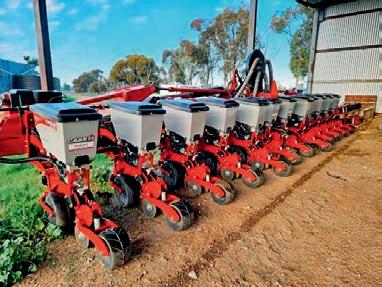
CASEIHUNKNOWN2130 2021,12 row
Planter,12 row on30or40inchspacing,Pneumatic downforce,pneumaticclosingwheels,Vset2seedmeter electricdrive,ResidueManagers,Liquidinjection,Onlydone
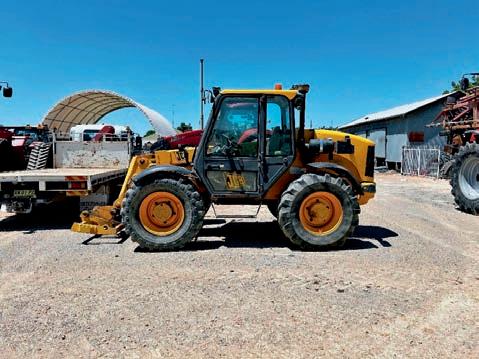
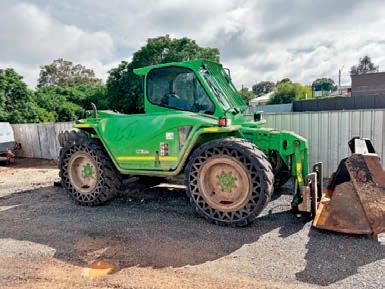
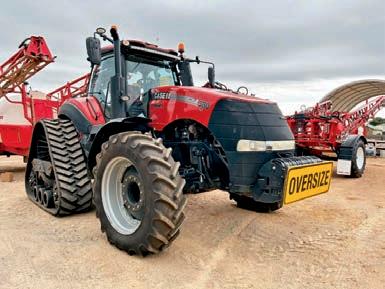
transmission,24tracks80%,3mtcentres,nav,372, pro 700, autosteer,linkageandquickhitch,540/1000PTO,frontaxle andcabsuspe.... TA1206748. $300,000



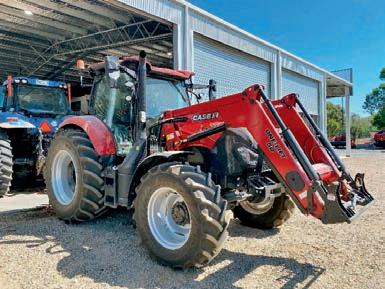
CASEIHUNKNOWNMaxxum135 OneUsed2021CaseIH Maxxum135Tier4BMulticontrollerUltimateSpecTractorwith approx.800Hours&theTractorisstillwithsome Warranty. 480/65R28FrontTyresat90%&600/65R38RearTyres....





Case IH’s most powerful Steiger tractor ever, the 715hp Quadtrac, is now available for Australian customers
Case IH has upped the game with its latest Australian tractor release, offering customers what it says is the highest horsepower tractor available locally.
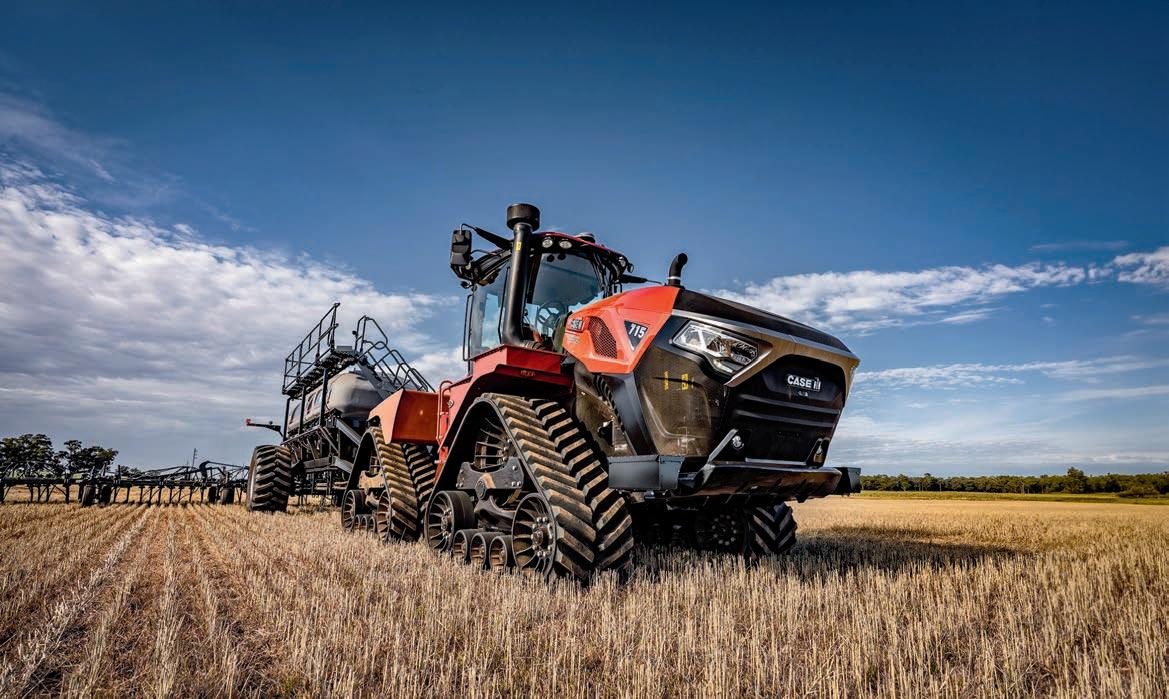
The Steiger 715 Quadtrac - the most powerful Steiger Case IH has ever developed - has an engine rated for 715hp continuous (527kW) and a peak of 778hp (572kW).
The manufacturer describes the tractor as having “power with purpose”, putting more power to the ground to do more in a day, while being agile and versatile enough to navigate a single lane of traffic.
“With the arrival of the Steiger 715 Quadtrac, combined with the new Steigers we launched to the local market last year, it positions the range as one of



Case IH’s most flexible tractor offerings. The large-scale broadacre sector of our industry has been demanding more power, and we’ve delivered with the Steiger 715 Quadtrac,” Case IH ANZ Steiger product manager Justin Bryant says.
Beyond just the increased horsepower, Case IH has added a host of features to the new Steiger 715 Quadtrac, including a new heavy-duty undercarriage with a longer track design, which offers improved traction and flotation.
According to the manufacturer, a new FPT 16L TST twin-stage-turbo Tier 2
IH’s
Quadtrac is now available in Australia.
Image: Case IH
engine provides a 23 per cent increase in displacement over the 13L version, delivering more power and more torque.
There is a higher three-point linkage capacity and full engine power through the whole working range of that three-point linkage, plus a 16-speed PowerDrive powershift transmission and increased fuel capacity to allow longer paddock stints.
The state-of-the-art cabin has optional dual Pro 1200 displays for increased functionality, a ventilated and heated leather seat, telescoping steering wheel,, and a leather MultiControl armrest.

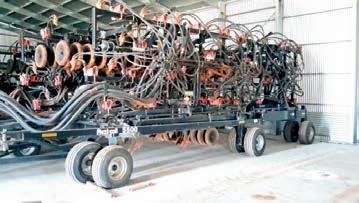
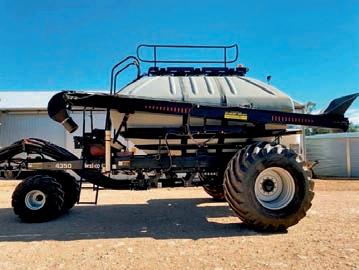
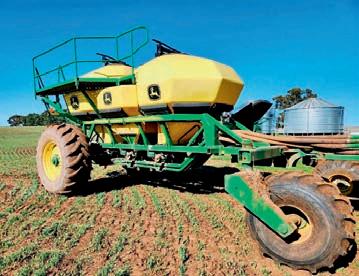
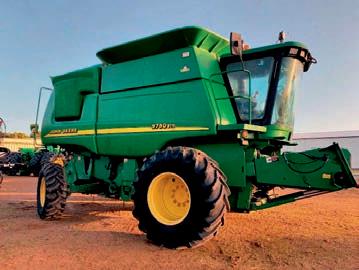
FAE has updated its line of midsized stone crushers, introducing the new STCM line
FAE, a designer and manufacturer of tractor heads, has replaced its current STC line with the new STCM line – working

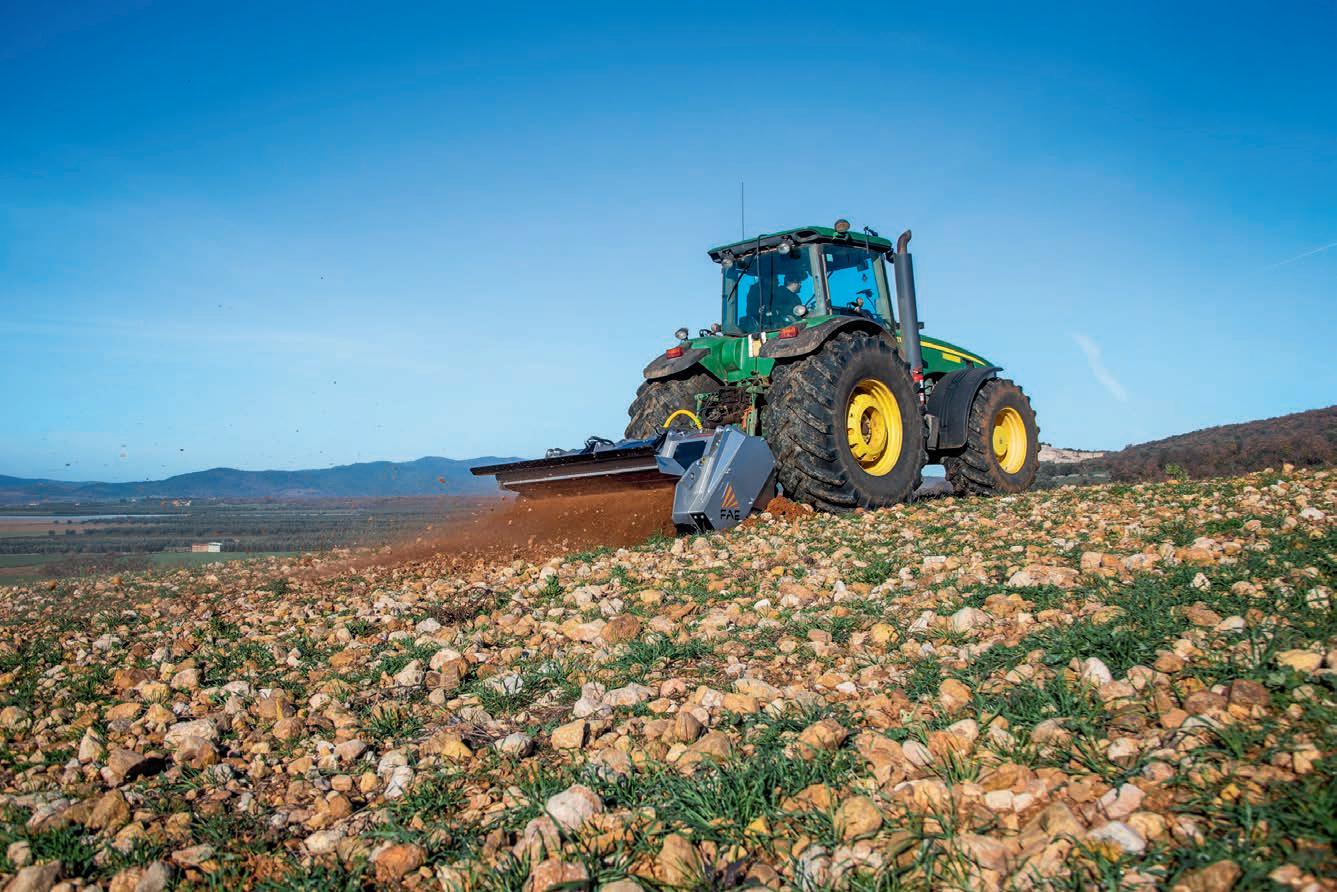
Improving on the previous STC line, the STCM opening has been enlarged to allow for the intake of more material from the surface and underground.
The adjustable counter blade is now hydraulic for added granulometry control
with wear-resistant steel being used for the frame.
The STCM is available in seven models and five widths, and the line includes three different types of teeth that can be selected based on the working conditions.


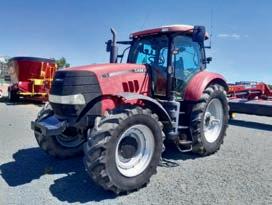




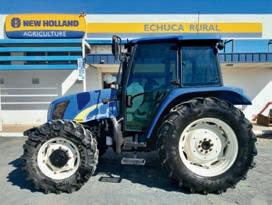
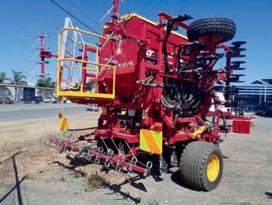







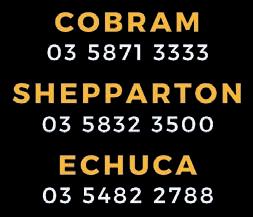

Case
Flow technology producing its biggest ever combine with the
Case IH says its new AF Series will meet growers’ needs for capacity, speed, precision, technology and simplicity – to make up for labour shortages and a goal of delivering more efficient harvests.
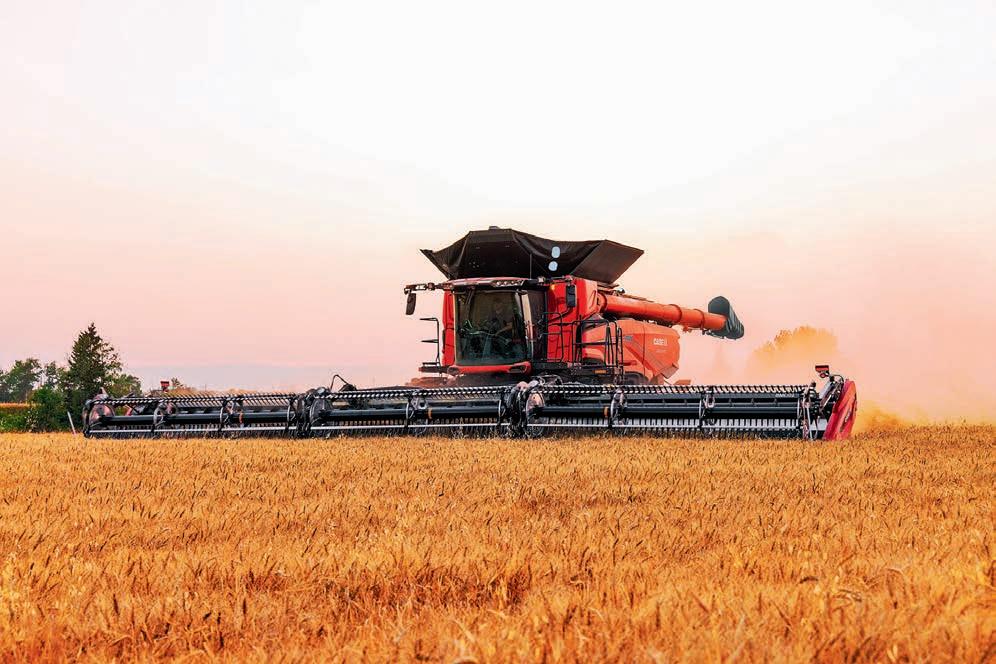
“Farmers depend on being able to manage harvest as efficiently as possible and the AF Series takes this to another level,” Case’s Australia/New Zealand hay and harvest product manager Tim Slater says.
With engines up to 578kW (775hp), 24 per cent more than previous models, Slater says the AF series will offer the most powerful Axial-Flow ever.
Case IH launched its Axial-Flow technology in 1977 and Slater says the new series expands upon this.
“The AF series provides a further evolution in the Axial-Flow story. It will offer industry-leading cleaning system capacity and grain tank size,” he says.
Boasting a new industry-leading capacity, holding up to 20,000 litres, the company says farmers will be able to cover more hectares in less time.
Case IH says the combination of efficient power, increased throughput and larger cleaning and grain handling systems

The Case IH AF Series is the biggest combine the brand has ever produced.
Image: Case IH
will maximise crop flow throughout the machine.
The AF series will also provide a longer rotor than previous models, with 50 per cent more separation to process high yielding crops, Case IH says.
A 25 per cent increase in fuel tank size is also featured in the new series.
Details on the commercial release of the AF series will be announced later in the year.

PRICES ARE INC GST, CONDITIONS APPLY
DEUTZAGROTRON180 2016,7LEngine 24/24Syncrotransmission 540/1000PTO 3PointLinkage CabSuspension Frontpivotingfenders Trainingseat 4setshydraulicremotes fittedwithTrima&5.1FELwith a210Eurobucket TopconX25console&AES-35 electricsteeringwheel. WSXCI20200LD10150. TA1205557. $104,500


HARDI7036 COMMANDER 2009,forceFTZboom, upgrade464pump, 6sectionEFCfluid system,filteredfresh waterfill HC5500controller, 60litrechemicalhopper 20.8-42Tryes.1002779. TA1167795. $55,000
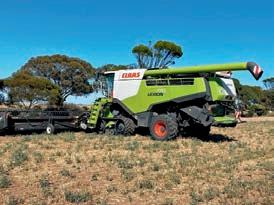
CLAASLEXION770TT 2017,enginehours1956 Separator1350 Specialcutspreader 735terratrac 4XLauger,13,500Lgraintank CEMOSauto Sep,clean,cropflow,cruisepilot Guidanceunlock 2017MACDONFD7545' w/trailer.102818102819. TA1168771. POA
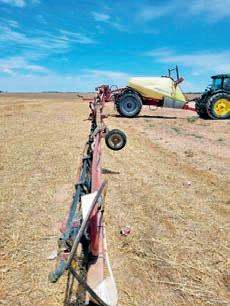
CATIT28F 1997,Caterpillar3116DIT (97KW)130HPDiesel EngineTier Tyres20.5/2560% 189LFuelTank Transmission-CatPower Shift4F/3RSpeedranges Topspeed38km/h Generalpurposebucket withboltonteeth. IJL00344. TA1198089. $90,750
HARDICOMMANDER 7036
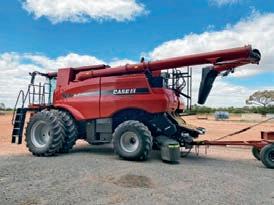
2008,FTZforceboom8 sectionEFCwithtriplet nozzles,2yearold464 hydraulicdrivepump,35 litrechemicalhopper withdirectchemical suction,3"banjofresh waterfill,HC5500 controller,102837. 0406001437. TA1164910. $55,000

CLAASLEXION770 2017,635mmTerraTracSystem CEBISIISystemwith8.4" Screen CEBISyieldmapping CEMOSAutoCruisePilot C-MotionJoystick 12,500Lgraintankw/foldinglids 3XL130Lminunloadauger V8Mercedesengine,16Lair compressor 13.7m/45ftflexdraper(no trailer).102830-102831. TA1171737. POA
CASEIH9230
**HeaderOnly** Cursor13Tier2 4speedhydrotrans 12,300Lgraintank AFS Pro 700 Mavchopperspreader 600/70R28steertyres 620/70R42driveduals Chaffdecknot included.102825. TA1178603. $297,000
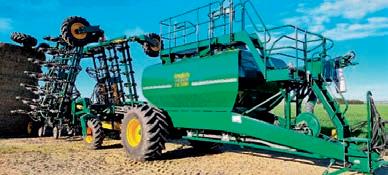
SIMPLICITY304TERRITORYPLANTERAND30 SERIES
12m53tyres,230mmspacings,fittedwith WS-80rootbootpoints,2021Simplicity30 seriestowbetween,2binaircartX35control, 10'auger,5000lliquidtowbehindcart,liquid systemcontrol.102746-102747. TA1126262.
$539,000
The Shantui DH17-C3F
high-end finish and wide-range visibility in an enlarged cabin with a user-friendly monitor display. With a Weichai WP7 204 horsepower fuel efficient engine and fitted with new two-stage air filter, providing filtration efficiency of more than 99.9 percent and integrated pre-filtration.
The Linde hydrostatic transmission system allows for quick shift or constantly variable speed. Hydrostatic steering eliminates steering clutches and brakes, providing smooth and powerful turns. With wide maintenance access to the engine, hydraulics, and electrical systems, a centralised hydraulic pressure testing location, and all daily
at ground level, the DH17-C3 offers
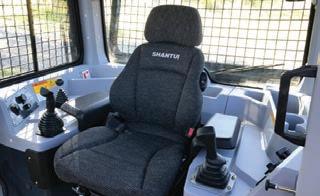

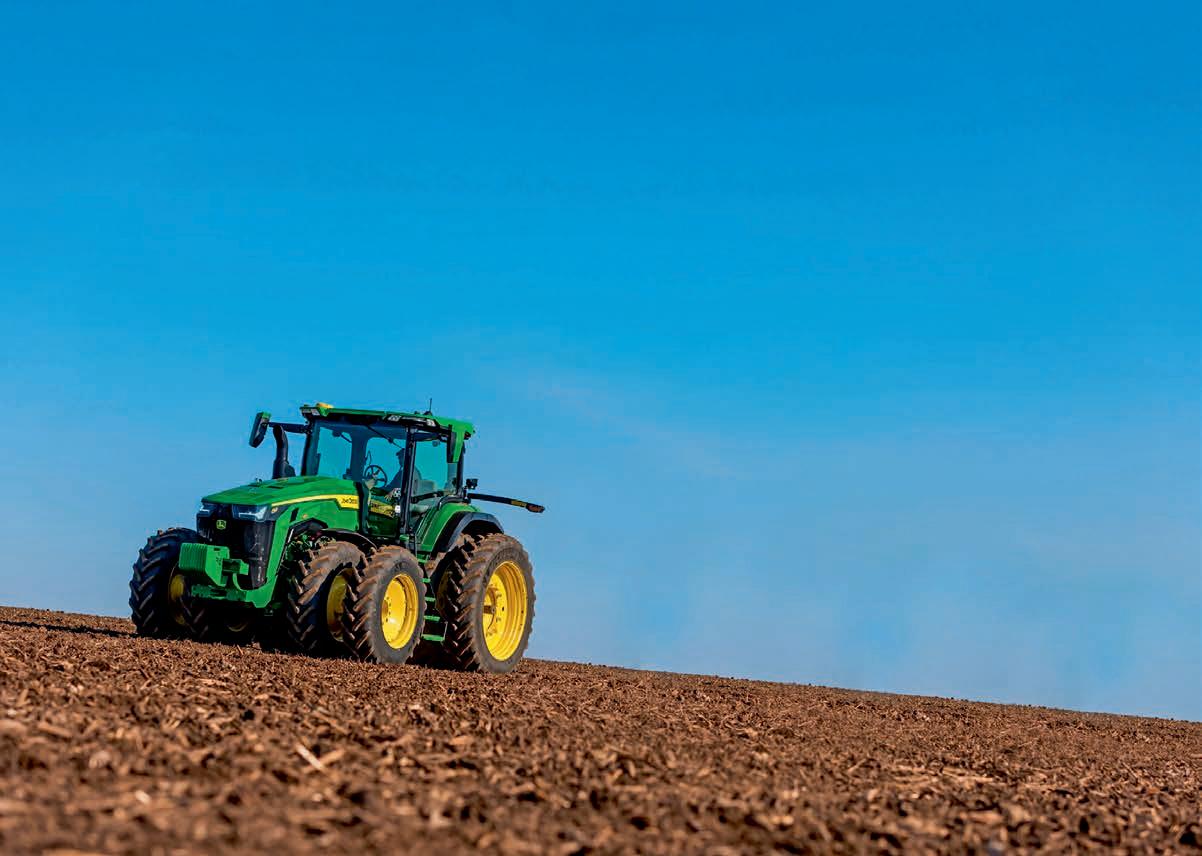



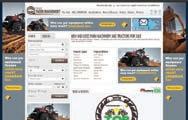





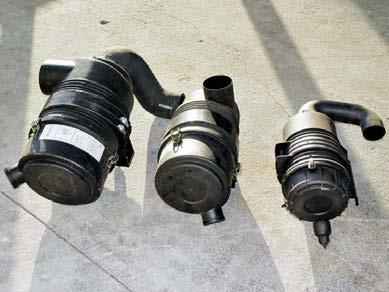

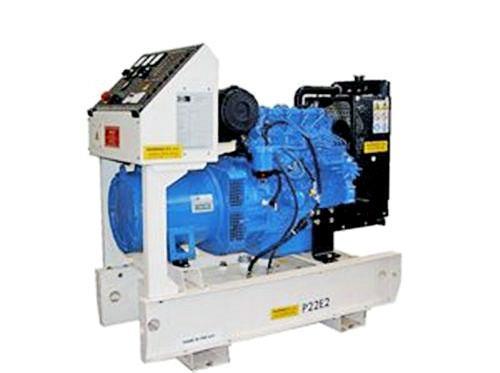
engineprotection,500hours serviceintervalsIdealbackupor primepowerCall for yourspecial price!.AW54939-ST190912.
DPLIn27583.
POA


TACHOMETERSFORDIESEL
ENGINES
Tinytach for dieselenginesgives adigitalRPMreadingregardless ofthenumberofcylinders.A transducertakesapulsereading fromtheinjectorlineSimplybolt thetransducertotheinjectorline, supplya12-24VDCsupplyand awayyougo!Itevenhasa built-inhourmeter,service functionandmaxrpmrange. S22. DPLIn27532. $264
JAPANESEDIESELS
Partsavailable for small Japanesediesels. AW54939-FM077-060-07.
DPLIn27496.
POA

BLADES
To fit smallJapanesetractors. From$8.80eachincGST. AW54939-FM077-060-08. DPLIn27497.
$9
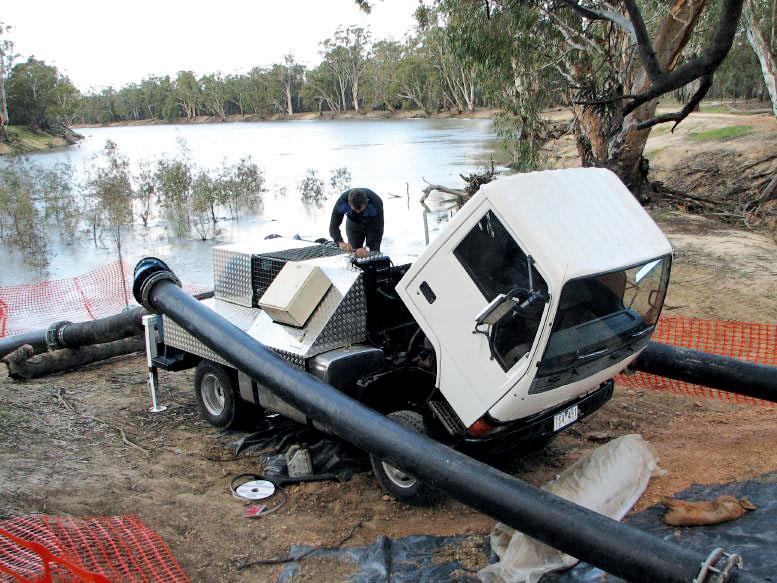

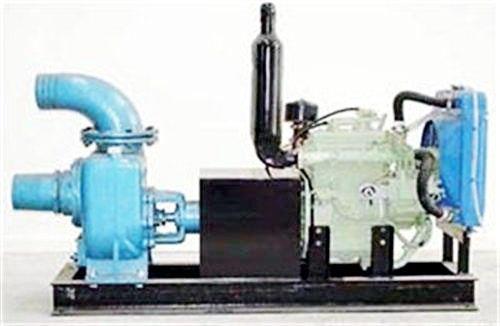





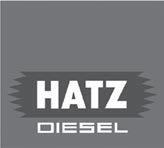


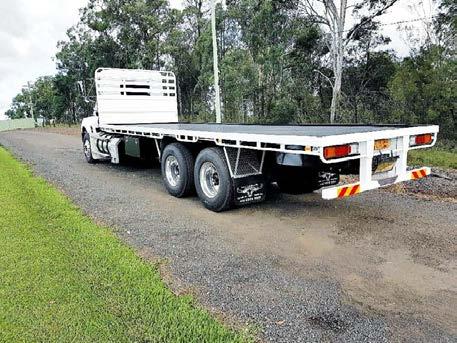
SAMMUTTRUCKTRAYS H/DAustralianmade.3mmor5mmfloor.Custombuild. Chassismodifications.Newandusedtrucksavailable. S360. TA1025472.


GEARMASTERTRAILINGTURFMOWER
2020,Buydirectfromthemanufacturerandsave.We havebeenmanufacturingmowersinAustralia for over 25years!Australianmade,onepiecestainlessdeck, fullgeardrive,stainlessdeck,75HPgearboxes,3plor trailing,sizesfrom1.5mtrto12mtr,suitable for Turf farms,golfcourses,councils,contractorsandmore. S364. TA1025498.
Pricefrom$17,000+GST

SAMMUTHARDOXTIPPERBODIES H/Dbuild. Onepiecesides,2waygate.Optionalwell hoistortwinunderbody.Optionaldropsides.Custom build.Colourofchoice.Sandblastedandfinishedin
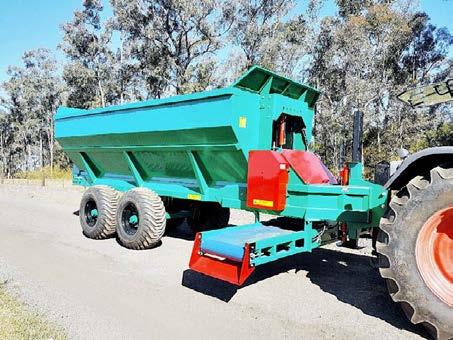
SAMMUTMILLMUDSPREADERS,AUSTRALIAN MADE 2020,H/DAustralianmade Fullhydraulicdrive,singleor3row Frontfeed,Singleordoubleaxle,optionalrear spinners Sizesfrom8m3to30m3.S365. TA1025500. Pricefrom$28,000+GST


TOSCANOSTONEBURIEREXTRAHEAVYDUTY 2020,Extraheavyduty Hydraulicliftroller,geardrive Anti-panblades 2200mmto3200mm.S369. TA1025532.
Pricefrom$17,900+GST
SAMMUTSPREADERS
2020,H/DAustralianmade,fullhydraulicdrive Wecancustombuild.Optionalfrontfeed Optionalsidedelivery.Chainorbeltfloor Sizesfrom2m3to30m3.S367. TA1025524.
Pricefrom$18,000+GST
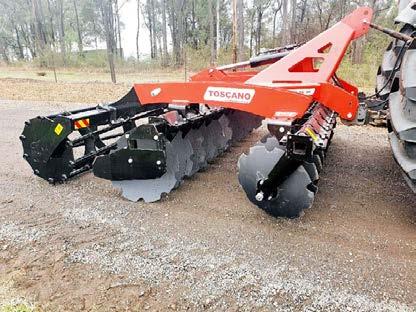
TOSCANOSPEEDDISC
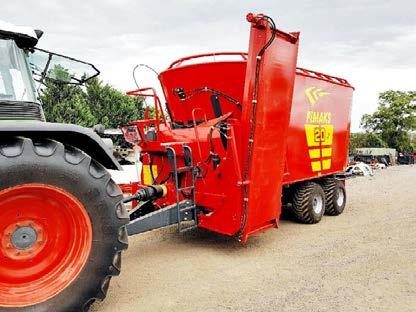
FIMAKSVERTICALFEEDMIXERS
2020,Hardenedbinandfloor,H/DComerItalian gearboxes,sizesfrom3m3to30m3,scales,incab controls,ptionalfoldingconveyorwithoptionallength, reductionbox.S371. TA1025537. From$25,000+GST

2022,Buydirectfromtheimporterandsave! Heavyduty,Hydraulicliftcrumbleroller,560mmdiscs ,3plandtrailing,2.5mtrto6mtr(trailing).S368. TA1025525.
Pricefrom$13,900+GST
FIMAKS18TONE,TWINVERTICLEBEATER,MULCH /MUCKSPREADERS
2022,BuyDirectfromtheimporterandsave!From5 toneto30tone,heavyDutyconveyorchain,slurrydoor, incabcontrols,twinverticalbeaterswithbottom spinner,suitable for allyourhardtospreadproducts etcWetcowmanure,mulch,greenwasteetc,18TONE MACHINE(ASPICTURED).S373. TA1025543. From$69,000+GST
$35,500INCLGST
JOHNDEERE1585TERRAINCUTRIDEONMOWER 4 wheel drive,reardischarge,diesel,airconditioningcab,72"mower deck, yearapproximately2016,1,497hoursasindicated,excellent unit, readytogo.7116. TA1150886.
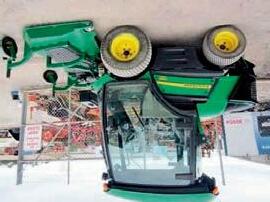
$34,000INCLGST
TA1190218.
CASE3230TRACTORFRONTENDLOADERFORKS& BUCKET 4wheeldrive,QuickReleasefrontendloader,forks &bucket,rollframe&roof,approximately1,600hours/60 horsepower,immaculate,withbooks.7262.

$16,850INCLGST
TA1070342.
MASSEYFERGUSON240TRACTOR 2wheeldrive,newtyres allround,extrahydraulicpump,powersteering,45 horsepowerapproximately,newroof.6893.

$37,000
$18,250INCLGST
TA1121629.
KUBOTAK008-3MINIEXCAVATOR 1,800hrsapprox.,3 cylinder diesel,2xbuckets:-450mmGP,900mmtiltingmudbucket, SWL65kg, folddownrollframe,hydraulictrackadjustment,newrubbertracks, goodtightmachine,excellentcondition,readytogo.7062.

$98,000INCLGST
7135. TA1159450.
JCB3CXBACKHOELOADER,4CYLINDERDIESEL engine no:SB3240344U1538214,approx.2,589genuinehours indicated,rearextenderboom,3xbuckets,nooilleaks.
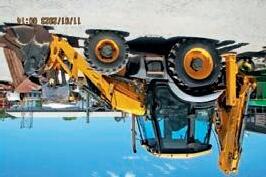
$11,650INCLGST
NOBILINOBILI/SILVANVKD230FLAILMOWER sideshiftto therightwithhydraulicsideshift&heightcontrolisbyan adjustablefullwidthroller,withnewspareblades&bolts,3 pointlinkage.7250. TA1184478.

7122. TA1155052.
FORD5610TRACTOR Ford5610Tractor,4x4,FrontEnd LoaderwithForks,Rops,Roof,Windscreen,72 horsepower approximately,immaculate,approximately5,280 hours.

$52,000INCLGST
TA1166753.
CATERPILLAR428CBACKHOE 4cylinderturbodiesel, with trenchingbucket,front4.1bucket&forks,showing2,300 hoursapprox(wethinkgenuine),tyres90%allround, exceptionalcondition.7152.

$12,850INCL GST
7281. TA1193905.
SAMEDELFINO35TRACTOR SameDelfino35Tractor,4 wheeldrive,3pointlinkage,approximately35 horsepower.

TA1141898. POA
CONNORSHEASEEDERS 14 row trailingseeder,tyne baker boots,seed&super,withsmallseedsbox$16,950inc. ConnorShea18 row seeders,linkage&trailed,super& seedboxes,readytogo.7107.

$47,000INCLGST
JOHNDEERE5525FWATRACTOR yearapprox.2005-2008,4 wheeldrive,frontendloader,ROPS&roof,91 horsepower approximately,PTO,withfrontweightframe(noweights), approx. 1,900hoursindicated,3pointlinkage.7089. TA1133372.

$18,000INCLGST
KomatsuFD45T-5 Forklift, hydraulicsideshift,approximately6.275tonne, specificationsattached,goodoriginalmachine,diesel,2,600 genuinehours.7308. TA1209335.
$11,900INCL GST
clutch, approximately38horsepower,goodworkingorder,as traded,asis.7301. TA1200484.
KOMATSUFD45T-5FORKLIFT
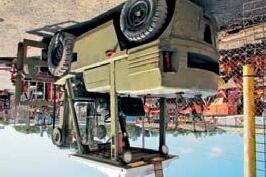
$39,000INCLGST
NEWHOLLANDTN55DTRACTORWITHBURDERFRONTEND LOADER 4in1bucket,4wheeldrive,3cylinderdiesel,withremotes, aircab,approx.1,466hours,newlugtyresallround,60 horsepower approx.7249. TA1182872.

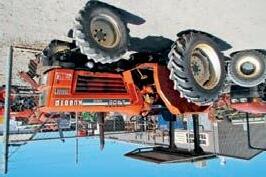
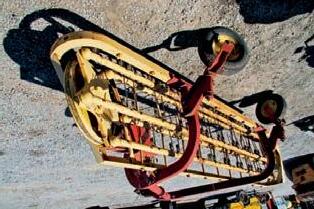


easyinallconditions. www.au.kinghitter.com, S2i360.VIC. DIY1206314.
PlantTrailerSuitallTrades akaPigTrailer-SingleAxle Registereduntil12/07/24 -Excavator -Bobcat -GeneralPlant Fittedwith2NewAxlesand Brakes,YN20CP. NSW. DIY1211983. 0412 823 146. $27,995


SteelTrailer,30ft,Triaxle, RecentlyResprayed, 6T9T2500SG06Fs005.SA. DIY1207207. 0408 282 101. $41,800

makesfencingquickand easyinallconditions. www.au.kinghitter.com, S2i360. VIC. DIY1206314. 03 7044 1940. $25,602
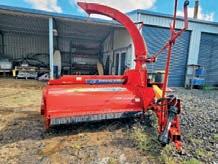


enginewithelectronicfuel injectionandliquidcooling capacityis352cc,automatic CVTshaftdriven transmission,ondemand 4WD, ..NSW. DIY1130342. 02 8783 8411. $10,999






















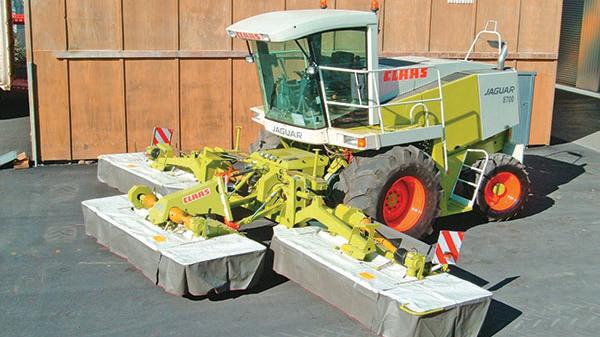
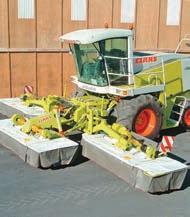










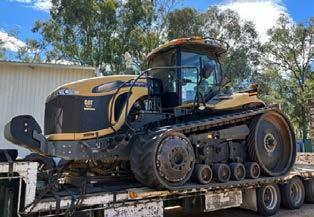

585, 595, 685, 695, 800, 830, 832, 870 2WD, 885, 895, 900, 930, 932, 956, 970, 1030, 1032, 1070, 1194, 1270, 1370, 1390, 1394, 1594, 1690, 2090, 2094, 2096, 2290, 2290, 2294, 2390, 2394, 2470, 2590, 2594, 2670, 2870, 3394, 3594, 4230, 4496, 4694, 4994, 7110, 7210, CVX 170, CX60, MAGNUM 275, MAGNUM 290, MAGNUM 305, MX80C, MX255, MX285, PUMA, STX 375 QUADTRACK, STX425, STX440 QUADTRACK, STX450, STX485, STX500
1896, 4690, 4890, 4894, 5120, 5130, 5140, 5150, 7120, 7130, 7140, 7150, 7220, 7230, 7240, 7250, 8910, 8920, 8930, 8940, 8950, 9130, 9150, 9170, 9180, 9250, 9260, 9280, 9350, 9370 QUADTRACK, 9380 QUADTRACK, 9390, MX90, MX130, MX135, MX150, MX230, MX240, MX200, MX220, MXM175, MX270, MXM190, STX375, STX440, STX480
CHALLENGER SERIES – 35, 45, 55, 65, 65C, 75, 75C, 75E, 85C, 85D, 95E, 65E TRACK MACHINE, MT765D, MT765C, MT865C
3000, 3610, 4000, 4600, 4610, 5000, 5610, 5640, 6000, 6600, 6610, 6700, 6810, 7000, 7600, 7700, 7710, 7840, 8000, 8210, 8230, 8340, 8401, 8600, 8700, 9000, 9600, 9700,, TW5, TW10, TW15, TW20, TW25, TW30
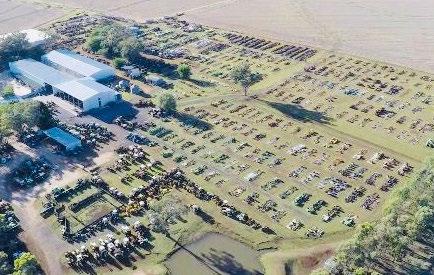

385, 414, 434, 444, 484, 514, 554, 564, 574, 585, 624, 660, 674, 686, 696, 706, 756,766, 786, 856, 866, 885, 886, 956, 976, 986, 1056, 1066, 1086, 1256, 1466, 1468, 1486, 1566, 1568, 1586, 3288, 3388, 3588, 3688, 3788, 4166, 4186, 4366, 4386, 4568, 4586, 4786, 5088, 5288, 5488, 6388, 6588, 6788, 844S, AW6, AW7, AWD6, AWD7, B250, B275, W6, W7,
950, 1050, 1130, 1140, 1640, 1750, 2010, 2020, 2030, 2040, 2120, 2130, 2140, 2250, 2450, 2650, 2850, 3010, 3020, 3120, 3130, 3140, 3350, 3640, 3650, 4010, 4020, 4030, 4040, 4050, 4055, 4230, 4240, 4250, 4255, 4430, 4440, 4450, 4455, 4555, 4560, 4620, 4630, 4640, 4650, 4755, 4760, 4840, 4850, 4955, 4960, 5010, 5020, 5310, 5515, 5300, 6030, 6110, 6170R, 6200, 6220, 6300, 6310, 6320, 6330, 6400, 6410, 6620, 6630 Premium, 6810, 6820, 7210, 7330, 7510, 7520, 7600, 7610, 7700, 7800, 7810, 7920, 7930, 8100, 8200, 8285R, 8300, 8310, 8330, 8345RT, 8360RT, 8370RT, 8400, 8400 TRACK, 8410, 8430, 8440, 8450, 8520, 8520T, 8530, 8630, 8640, 8650, 8760, 8770, 8850, 8960, 8970, 9400, 9410R, 9420T, 9430T
7840, 8430, 8560, 8870, 8970, 9482, 9682, 9860, 9880, 9882, 9482, 9484, G210, G240, L85, L95, T6020, T7030, TG230, TG235, TG255, TG285, TJ375, TJ425, TJ450, TL70, TL90, TM125, TM135, TM195, TN55D, TN95F, TS100, TS100A, TS110A, TS125A, T9060

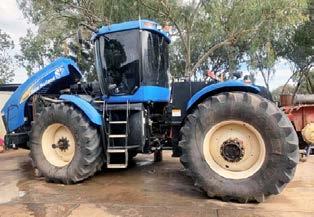
KP525, KP 1350, KP1325, KP1400, BEARCAT 3 & 4, COUGAR 2 & 4 CM250, PANTHER 2, PANTHER 3 ST310 & ST325, PANTHER 4 CM325, TIGER ST470,
VERSATILE
500, 700, 800, 835, 836, 855, 875, 895, 900, 935, 945, 946, 950, 956, 975, 976, 1150, 1156
VARIOUS MODELS OF CHAMBERLAIN, DEUTZ FAHR, FIAT, JCB, LAMBORGHINI, MASSEY FERGUSON, MCCORMICK, SAME – CALL US TO ENQUIRE

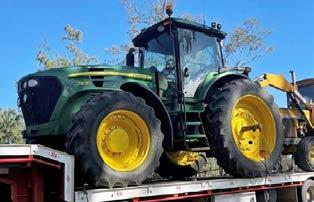

WANTED
CONNOR SHEA SEEDERS ANY CONDITION.

3 PT LEAKAGE AIRWAY AERATOR 8’
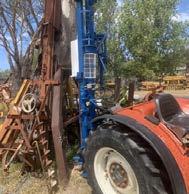
FORD 4600 DIESEL TRACTOR 60HP 3PT LEAKAGE WITH POWER STEERING
12FT LANDPRIDE FOLDING WING SLASHER


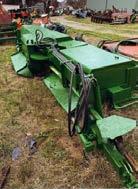
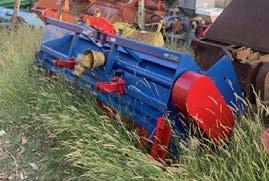
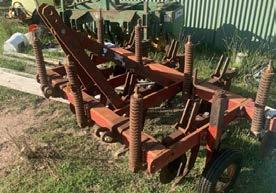

7 TYNE AGRIPLOW SUB SOILING 3PL
5' CONNOR-SHEA 3PL DISC SEEDER (LATE MODEL)


2 TONNE SEYMAUR BELT SPREADER


NAPIER 24 DISC WHEEL OFFSET MASSEY-FERGUSSONPLOUGH3CYL DIESEL

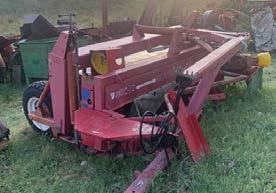
JF 6 DISC MOWER/ CONDITIONER GCS2800
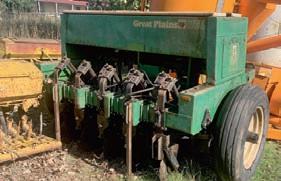
GREAT PLAINS TRIPLE DISC COULTER PRESS WHEEL TEN RUN SEEDER
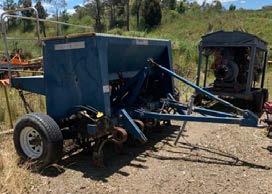

15 RUN AGRO SEEDER WITH COIL TYNES BAKER BOOTS & COULTERS
CRONE 4FT NETWRAP ROUND BAYLOR

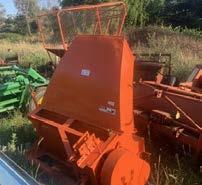
SOUTHERN CROSS 350 TRAVELLING IRRIGATOR
LILLY 4FT 3PL FORAGE HARVESTER AND CART
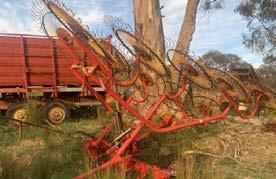
TONUTTIE 10 WHEEL V HAY RAKE
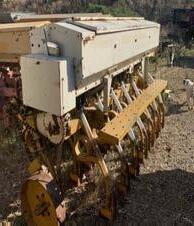
CONNOR-SHEA 7’ COIL TINE BAKER BOOT DIRECT SEEDER

 22' LOXTON MOWER SLASHER (GREEN SERIES)
22' LOXTON MOWER SLASHER (GREEN SERIES)
CONNOR SHEA SEEDERS ANY CONDITION.
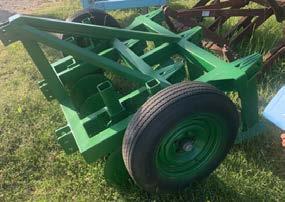





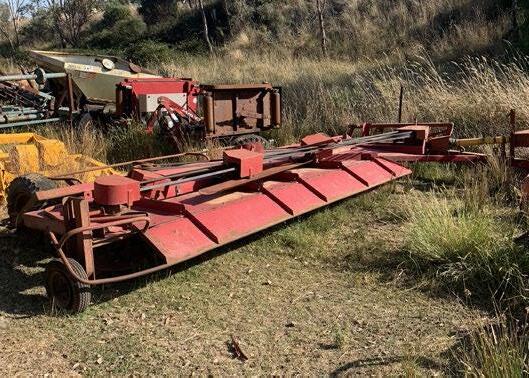
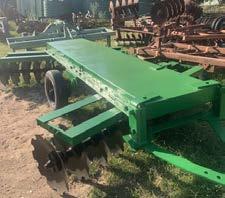
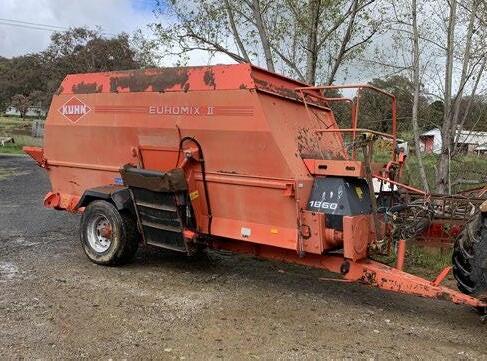



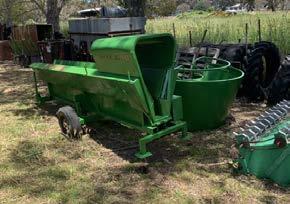

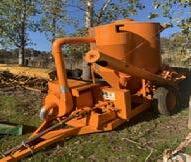


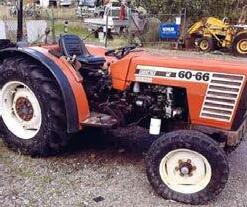 10’ 3PT LEAKAGE TOPPER/SLASHER
3PL ROCK RAKES 6 TO 10 FT WINDROWS, RAKES & LEVELS, 6’, 8’ & 10’. TA307516. POA
KUHN FEED MIXER WAGON
DEUTZ DX160 FRONT END LOADER 160 HORSE P
CONNOR-SHEA 9’ COIL TINE BAKER BOOT COULTER SEEDER
8FT BEREND 3PL GRADER HYDRAULIC SET BLADE
FIAT 60-66 60HP DIESEL 3PL
ISEKI 6500 4WD TRACTOR 60HP
SHEARER 24 DISC WHEELED OFFSET PLOUGH (WITH NEW DISCS AND BEARINGS)
9' CONNOR - SHEA DISC SEEDER WITH 3 BOXES + HYD RAM
WALLACE 5 TYNE SUB SOILING PLOUGH WITH COULTERS
13’ LOXTON MOWER SLASHER
PARKS INDUSTRY HAMMER MILL MIXER
3 TONNE SAM BELT SPREADER
ROBOT HYDRAULIC TIPPING TRAILER 10X6
CAMBRIDGE CULTI-PACKER KINGPACKER MULTI RING ROLLERS
DUNCAN 734 15 RUN TRIPLE DISC SEEDER
10’ 3PT LEAKAGE TOPPER/SLASHER
3PL ROCK RAKES 6 TO 10 FT WINDROWS, RAKES & LEVELS, 6’, 8’ & 10’. TA307516. POA
KUHN FEED MIXER WAGON
DEUTZ DX160 FRONT END LOADER 160 HORSE P
CONNOR-SHEA 9’ COIL TINE BAKER BOOT COULTER SEEDER
8FT BEREND 3PL GRADER HYDRAULIC SET BLADE
FIAT 60-66 60HP DIESEL 3PL
ISEKI 6500 4WD TRACTOR 60HP
SHEARER 24 DISC WHEELED OFFSET PLOUGH (WITH NEW DISCS AND BEARINGS)
9' CONNOR - SHEA DISC SEEDER WITH 3 BOXES + HYD RAM
WALLACE 5 TYNE SUB SOILING PLOUGH WITH COULTERS
13’ LOXTON MOWER SLASHER
PARKS INDUSTRY HAMMER MILL MIXER
3 TONNE SAM BELT SPREADER
ROBOT HYDRAULIC TIPPING TRAILER 10X6
CAMBRIDGE CULTI-PACKER KINGPACKER MULTI RING ROLLERS
DUNCAN 734 15 RUN TRIPLE DISC SEEDER
CONNOR SHEA SEEDERS ANY CONDITION.
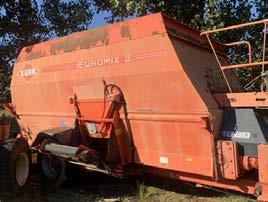

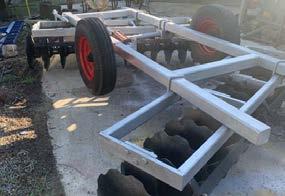



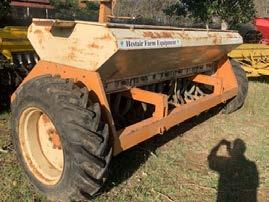
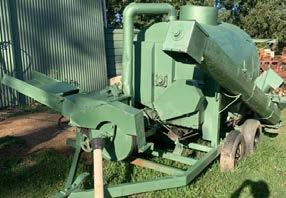






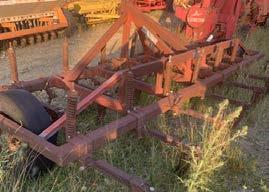

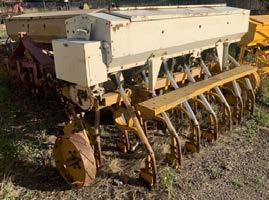

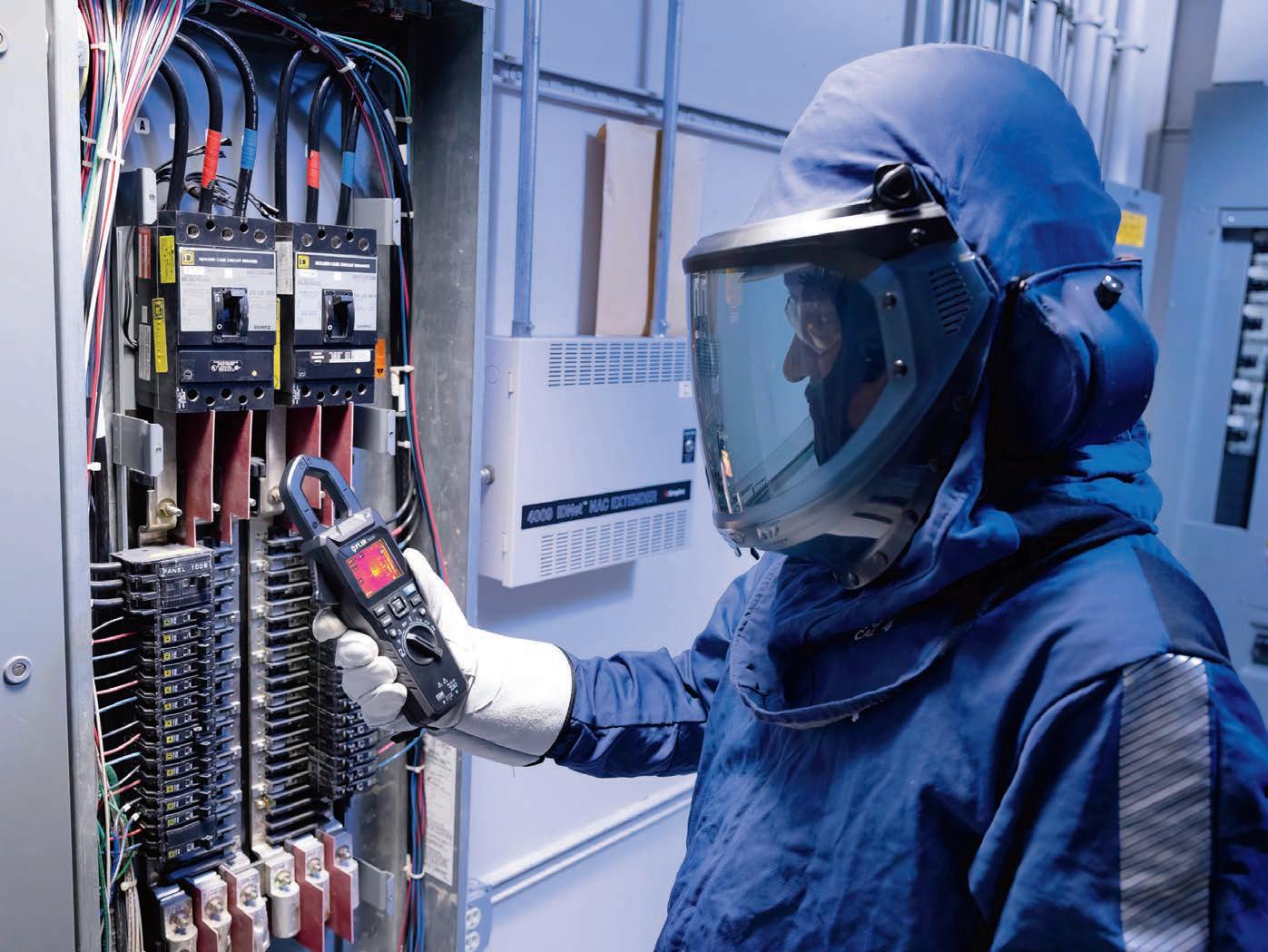 AMAZONE ZAM 2TN 3PL
24 DISC GIBBONS ROARING WHEELED OFFSET PLOUGH (H-DUTY)
3PL BALE FEED OUT UNIT
AGRIPLOW 15 RUN COIL TYNE BAKER BOOT SEEDER
CONNOR-SHEA 7FT 3PL
5 TONNE ARTICULATED HYDRAULIC CHAMBERLAIN TRAIN
FARM MASTER HAMMERMILL MIXER
IZEKI- BROLENS 18HP TRACTOR
KUHN 1860 EUROMIX II
17 RUN BETTINSON TRIPLE DISC SEEDER
3PL 12 TYNE AGROPLOW SUB SOILER
HARDI BOOM SPRAY 6MTR BOON
KOMATSU 2.5T
CONNOR- SHEA 7FT COIL TYNE BAKER BOOT DIRECT SEEDER 3PL
LEITH 6 TONNE BELT SPREADER
AMAZONE ZAM 2TN 3PL
24 DISC GIBBONS ROARING WHEELED OFFSET PLOUGH (H-DUTY)
3PL BALE FEED OUT UNIT
AGRIPLOW 15 RUN COIL TYNE BAKER BOOT SEEDER
CONNOR-SHEA 7FT 3PL
5 TONNE ARTICULATED HYDRAULIC CHAMBERLAIN TRAIN
FARM MASTER HAMMERMILL MIXER
IZEKI- BROLENS 18HP TRACTOR
KUHN 1860 EUROMIX II
17 RUN BETTINSON TRIPLE DISC SEEDER
3PL 12 TYNE AGROPLOW SUB SOILER
HARDI BOOM SPRAY 6MTR BOON
KOMATSU 2.5T
CONNOR- SHEA 7FT COIL TYNE BAKER BOOT DIRECT SEEDER 3PL
LEITH 6 TONNE BELT SPREADER



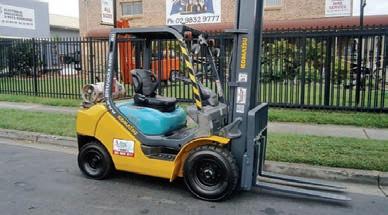
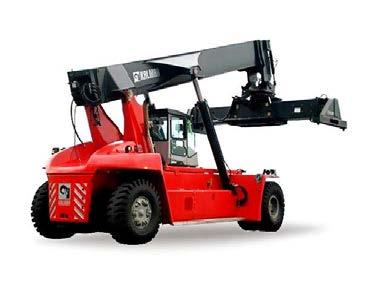
KALMAR(NEW)DRU450 SOLD-Another available.Reachstackerfromglobalindustry leadingporthandlingequipment manufacturer.S89. TA1081384.
ForSaleorHirePOAHiretoBuy

HYSTERH18.00XM-12 2008,stacks12,000kg highcube20'&40'4high.ELME55820x40 spreaderwithtopentrytwistlocks.Frontline unitready for immediatedelivery.R3547. TA829125.
ForSaleorHirePOAFreeCall1800688788

HYSTERH20.00F 2009,Smallestinthisfamily ofmostrobust20tonto32tonforklifts.Can landtransportfullyassembledready for work Cumminsengine,sideshiftandfork positioning2440mmforks.E008E02372G. TA1153814.
ForSaleorHirePOAFreeCall1800688788

CLARKC500Y650D 1983,stacks28,000kg20' highcubes3high.Hassideshift&fork positioningplus8'forks.Cummins6CTdiesel, ClarkHurth28000powershiftxmsn.Easy staircaseaccesstohighviscab. 084AUFL4890. TA1153864.
GoodRunnerataffordableprice$55,000 FreeCall1800688788

KALMARDRT450-65S 2013,Stacksladen 20x40containers5high.CumminsQSM11 dieselengine.Dana15.5HR36000 transmission.Fullyenclosedairconditioned cab.H10300280. TA1153805.
ForSaleorHirePOAFreeCall1800688788
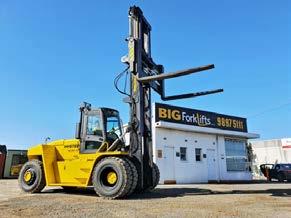
HYSTERH18.00XM-12 2008,18,000kg highcube20'containers3highwith2440forks +forkpositioningsideshift.Option14,000kg withELME558Sidelift for 20'and40' highcube.R3282. TA511086.
ForSaleorHirePOA$FreeCall1800688788
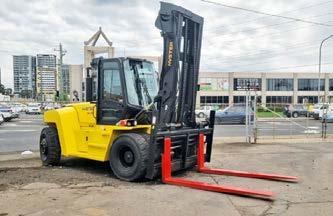
HYSTERH16.00XM-6 2010,canstack20' highcubecontainers2highcirca11,000kgat 1200mm.Cumminsdieselengine.2440mm forks,sideshiftandforkpositioningcarrige A/Ccab.S100. TA1153811.

MOBICON33T loadunloadandtravel 33,000kg20'and40'shippingcontainers.For sale&wanted.R3299. TA148664.
ForSaleorHirePh:1800688788POA

KALMARDRF450-60S5M 2012,Stacksladen 20x40containers5high.CumminsQSM11 dieselengine.Dana15.7TE32xmsn.Axletech driveaxlewithwetdiscbrakes.ACcab.S99. TA1153810.
ForSaleorHirePOAFreeCall1800688788
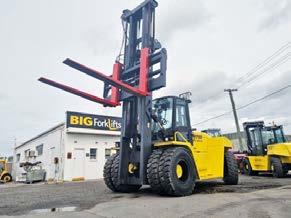
HYSTERH18.00XM-12 withforkpositioning sideshiftcarriage,2440mmforks,Cummins engine,fullyenclosedairconditionedcabOption20x40sideliftcont.frame.R3632. TA1124211. POA
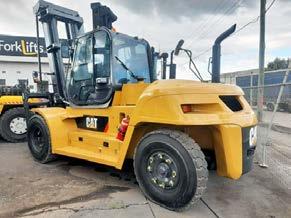
CATERPILLARDP160N 2009,hassideshift withforkpositioningand2440mmlongforks. Fullyenclosedairconditionedcab,powershift transmission.Easymastontransportready for workwith4500mmliftheightabletostack20' highcubecontainers2high.T40A10068. TA1153855.
ForSaleorHirePOAFreeCall1800688788

KONECRANESSMVSL32-1200B 2011,rated 32,000kgat1200mmloadcentre,canstack highcube20'containers2high.Road transportwithoutdemobe.R3376. TA1038152.
POAForSaleorHirePh:1800688788
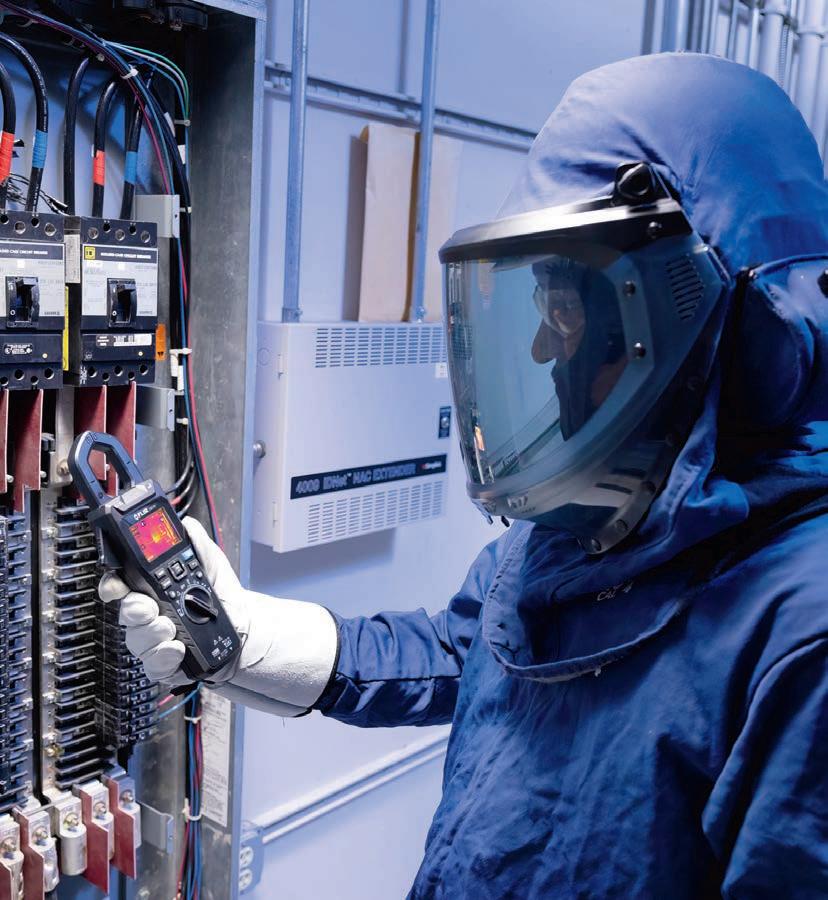

Professional clamp meter with thermal imaging camera makes Australian debut for electrical professionals
US-based industrial applications developer Flir says its CM276 professional clamp meter will help electrical professionals identify electrical hazards before any contact is made.
Not only is the CM276 capable of infared imaging, it also has a visual camera and a solar photovoltaic (PV) direct current (DC), built for electrical test and measurement.
The clamp allows the user to troubleshoot electrical components using two unique systems – Infrared Guided Measurement (ICM) and radiometric multispectral dynamic imaging (MSX), which overlays visible camera details onto the thermal image.
Flir says the CM276 is useful for a variety of commercial and industrial electrical inspection needs, including solar PV DC measurements up to 1500 V with optional PV test leads.
It features variable frequency drive (VFD) mode, True RMS and Low Impedance (LoZ) mode for other advanced electrical test and measurement needs, enabling inspectors to leverage one tool for various scenarios.
Built into the CM276 are a 160 x 120 thermal resolution Lepton thermal camera module, a visible camera and an LED worklight for illuminating dark cabinets and spaces, all housed inside a
ruggedised casing that is IP40 rated and drop-tested up to two metres.
Flir global business director Rob Milner says the Flir CM276 helps users safely execute their inspections.
“The FLIR CM276 is the most versatile clamp meter in its class, providing dual-thermal visible imagery, even in total darkness thanks to the new LED worklight, and this helps inspectors identify potential issues safely and quickly,” he says.
“To speed post-inspection work ows and data sharing between up to seven devices, testing results can be shared with colleagues and clients through the free MeterLink app, supporting thermal, visible, and MSX images and video clips, individually, or as part of a comprehensive post-inspection report.”
The MeterLink app can be integrated with Bluetooth, letting operators review meter logs, examine data trends and share results with team members.
Each CM276 clamp meter can store up to 30,000 radiometric images and 100 log les on board, making report generation simple.
For more information on the Flir CM276 Clamp Meter, visit www. ir.com.au/products/CM276

Fire retardant paint recognised in university innovation awards
An undercoat that can help protect buildings from bush res has won a People’s Choice Award in the Shaping Australia Awards handed out in late February.
The awards, created by Universities Australia, recognise contributions of the university sector to the community, and for the potential of innovations to change the lives of Australians for the better.
Developed by University of New South Wales Professor Guan Yeoh and his team, the FSA Firecoat range of undercoats comprises white and grey, suitable for either interior or exterior use.
FSA Firecoat says one of these is the rst ever to achieve a BAL-40 rating, the highest rating any re-retardant paint has achieved in the world.
“The paint was developed and commercialised with our industry partner Flame Security International and was partly funded via a $3 million Cooperative Research Centres Project grant from the Australian Government,” Professor Yeoh said.
“It passed stringent Australian standards testing and it is proven to provide increased protection against bush res in areas prone to extreme re conditions.”
Flame Security International spokesman Tony Overstead said the Firecoat product protected people, structure and the environment from re and other threats.
“The paint can be applied as an undercoat to most external and internal surfaces, including brick, existing render, timber, aluminium, steel, concrete and plasterboard,” he says.
“It will last inde nitely as long as the protective layer of paint is maintained. It won’t irritate eyes or skin on contact.”
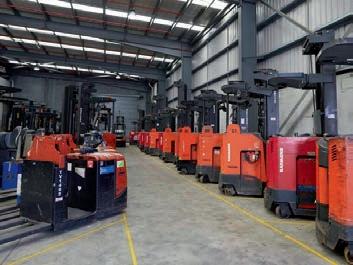










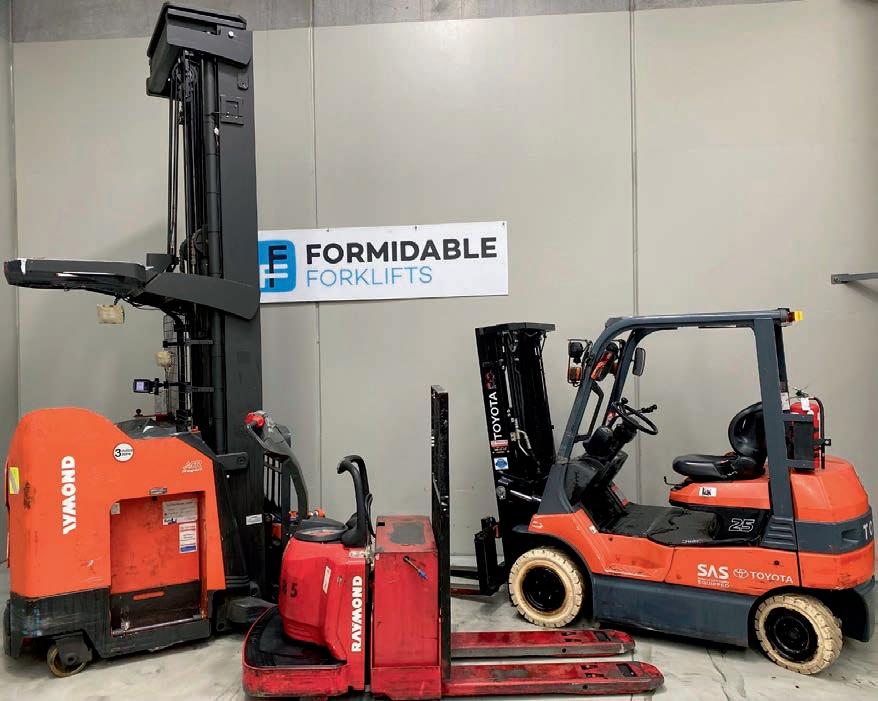


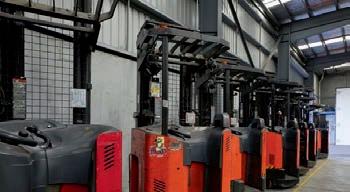


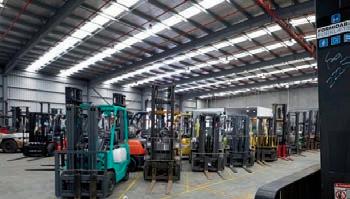
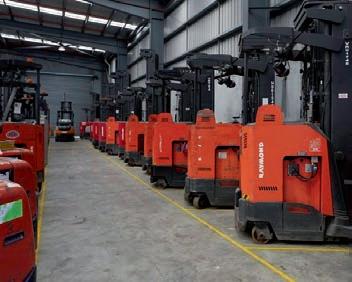
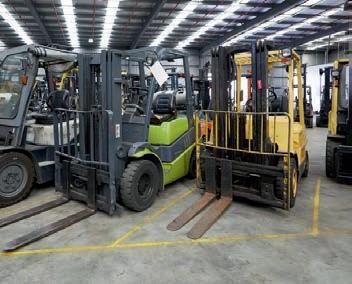

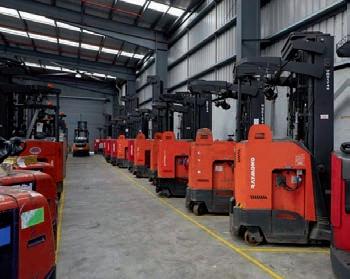
















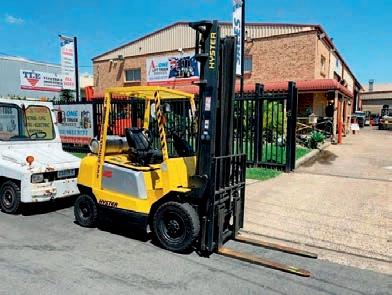

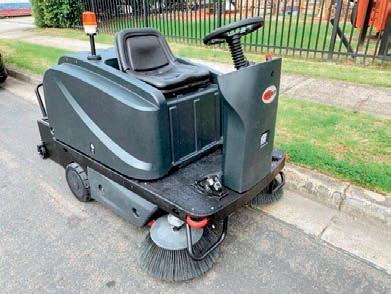
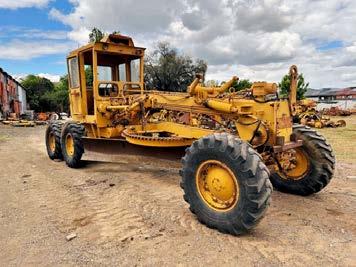
FIATALLISM100C Justinfordismantling,Allis10,000 seriesengine,wetengineclutch,transmissioningood order,Moldboardpitchcylinders,allparts available, PhoneBrendan0267624466.S175. TA1162783. POA

ALLISCHALMERSM65GRADER JustinforDismantling, 10FootMoldboard,D262Engine,GoodRunning Gear, TransmissioninGoodOrder,AllPartsAvailable,Phone Brendan0267624466.S179. TA1198862. POA
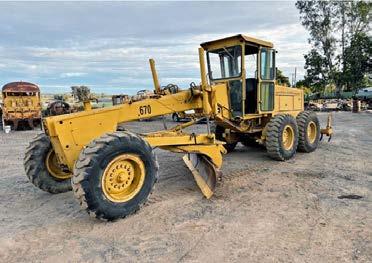
300, 3366, 400, 500, L400C, L600C, D600D Super, D700C
JOHN DEERE : 1010C, 850
LOADERS
ALLIS-CHALMERS: TL12D, TL14, TL20, 545, 605B, 645, 745B,C
FIAT: FR20B LD3, LD5, LD7 & LD9 Scoopmobile HANOMAG/MASSEY 22,33C,44, 55, CL55C,66C-D, 77
GRADERS
ALLIS-CHALMERS: D, DD, M65, 65B, AD30-40, 45, 145, M100A, B, FG95
DRMCO/CHAMPION 562, 600, 720, 740
JOHN DEERE 570, 570A, 670A, 770, 770A, 772A
ALLIS WHEEL TRACTORS
AC D17, D19, D21, XT190, 7000, 7010, 7020, 7040, 7060, 7080, 8010, 8050, 8070, 7580, 8550, 440
ALSO AVAILABLE
Track Chains, Rollers, Idlers, Sprockets Various 4-1 Buckets, POA
JOHNDEERE670 justinfordismantling,startsrunsand drives,6414Tengine,8speedpowershifttransmission, rearrippersandscarifiers,12footmoldboardwithnew edges,goodrubberallround,allpartsavailable,phone Brendan0267624466.S176. TA1181375. POA
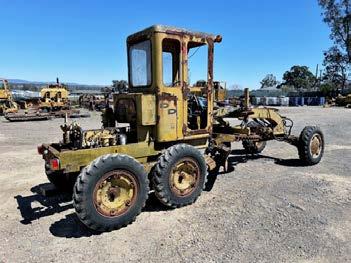
ALLISCHALMERSDDGRADER JustinforDismantling, 10FootMoldboard,D262Engine,MidMountScarifiers, TransmissioninGoodOrder,AllPartsAvailable,Phone Brendan0267624466.S180. TA1198863. POA








